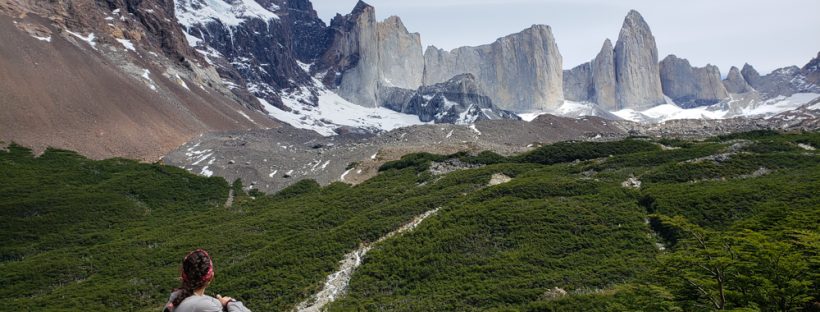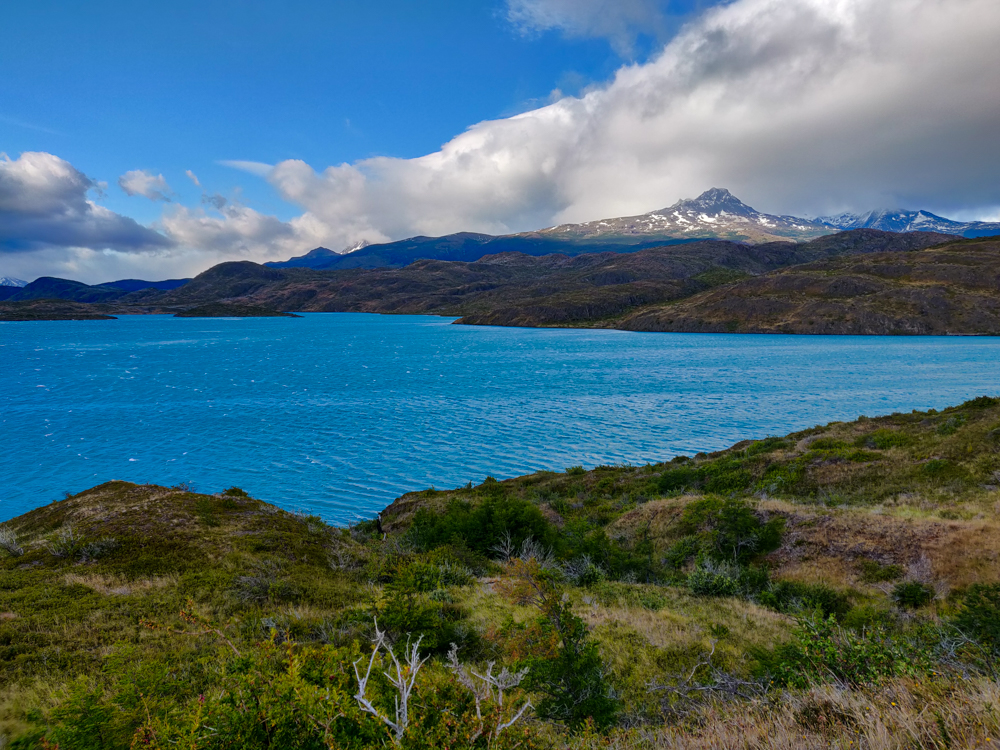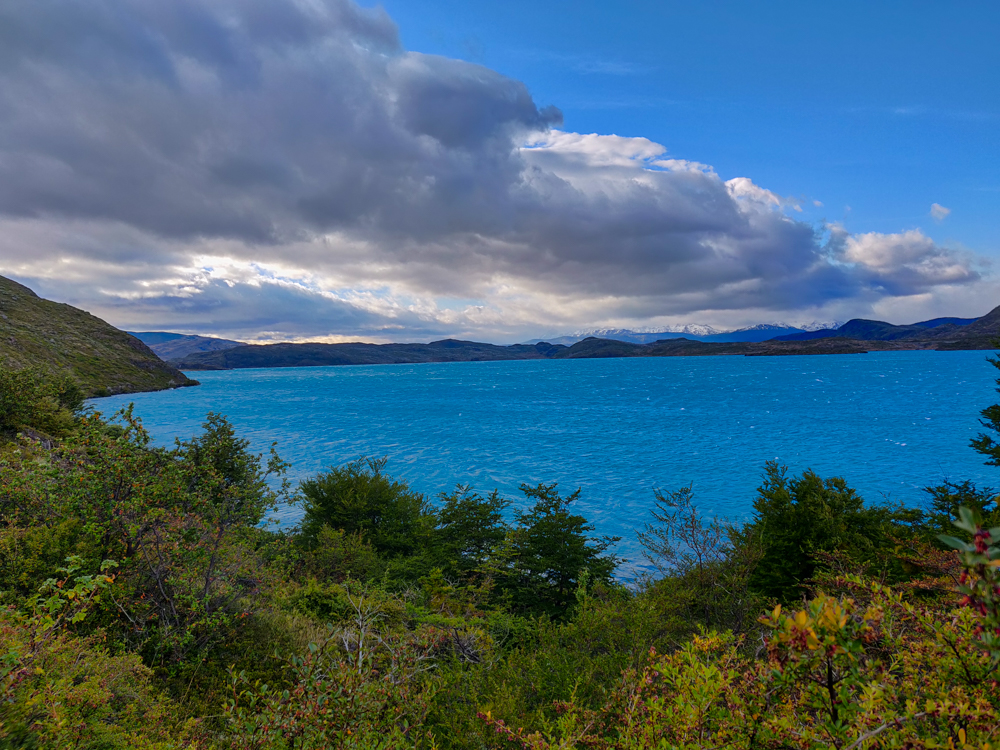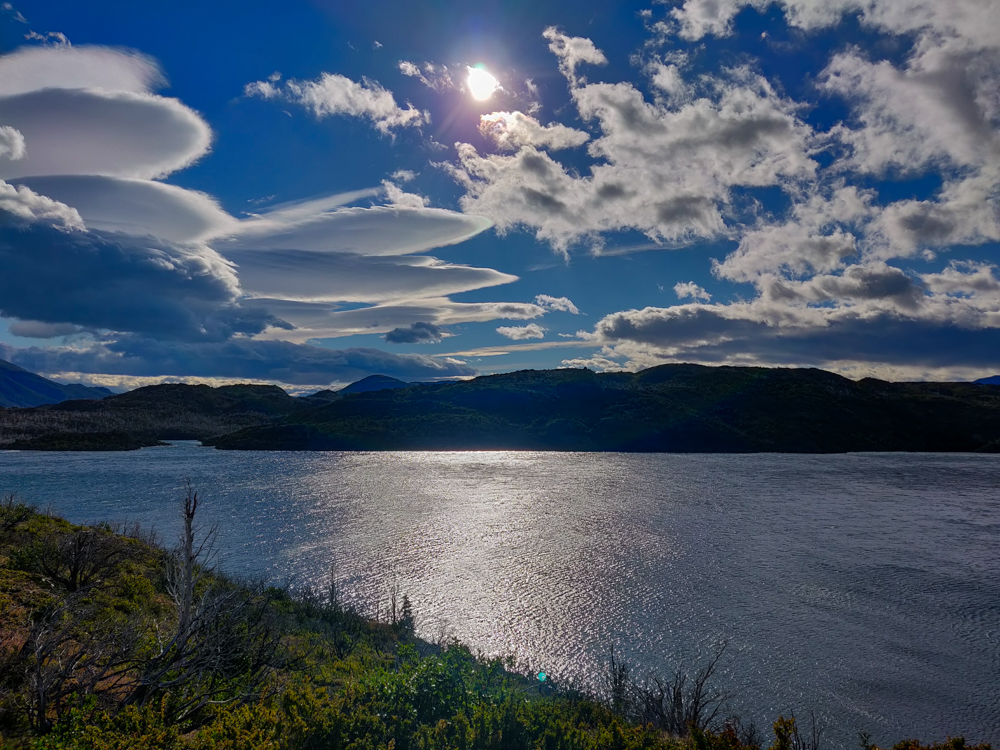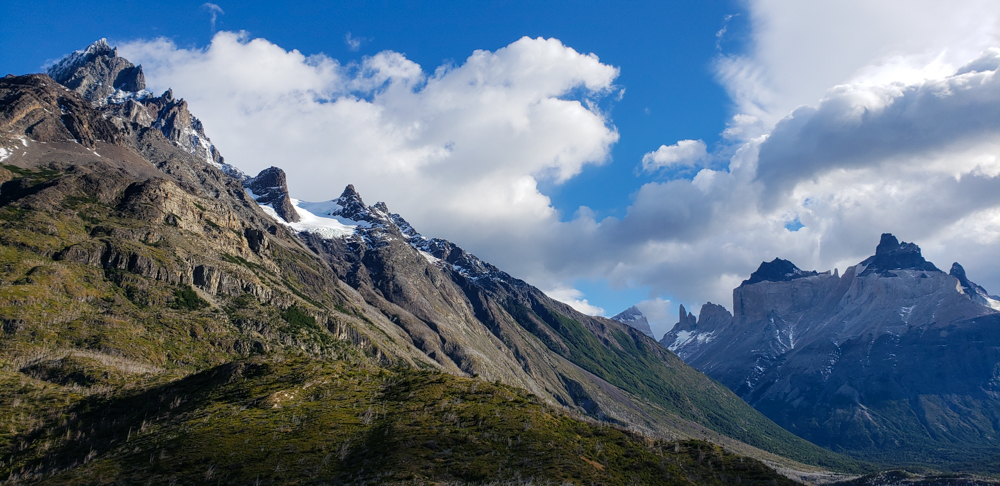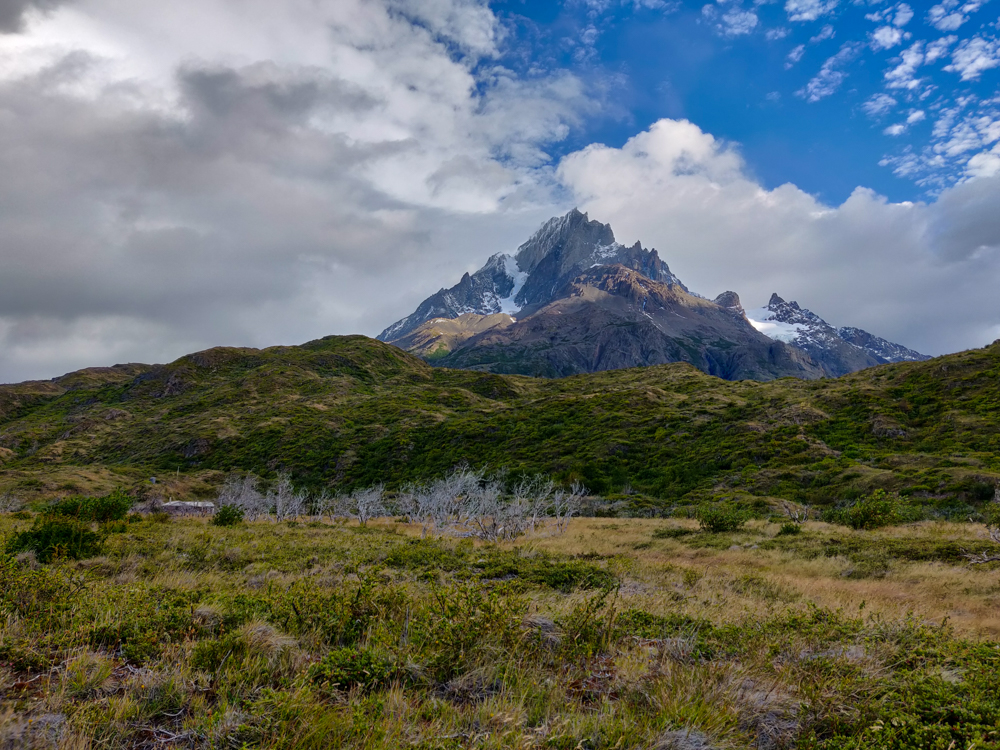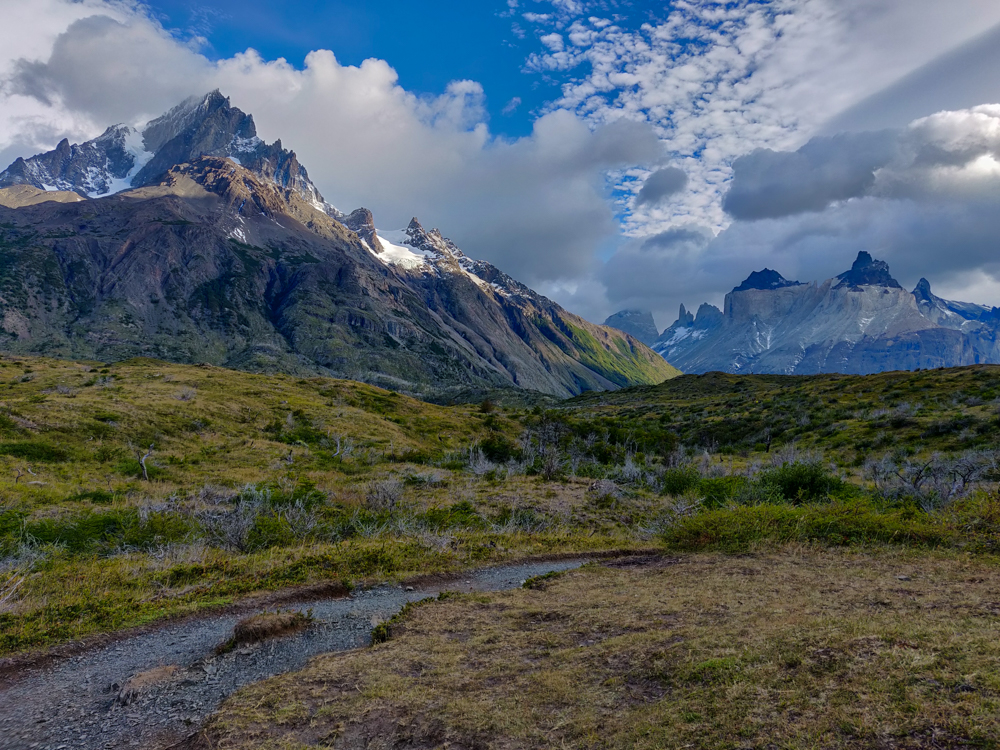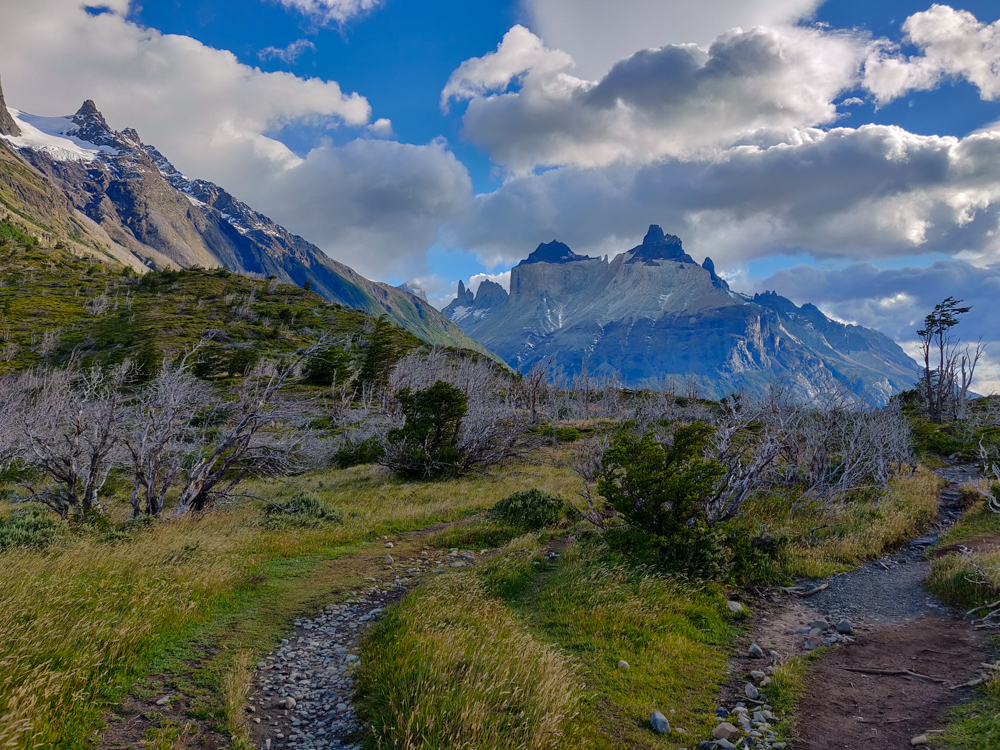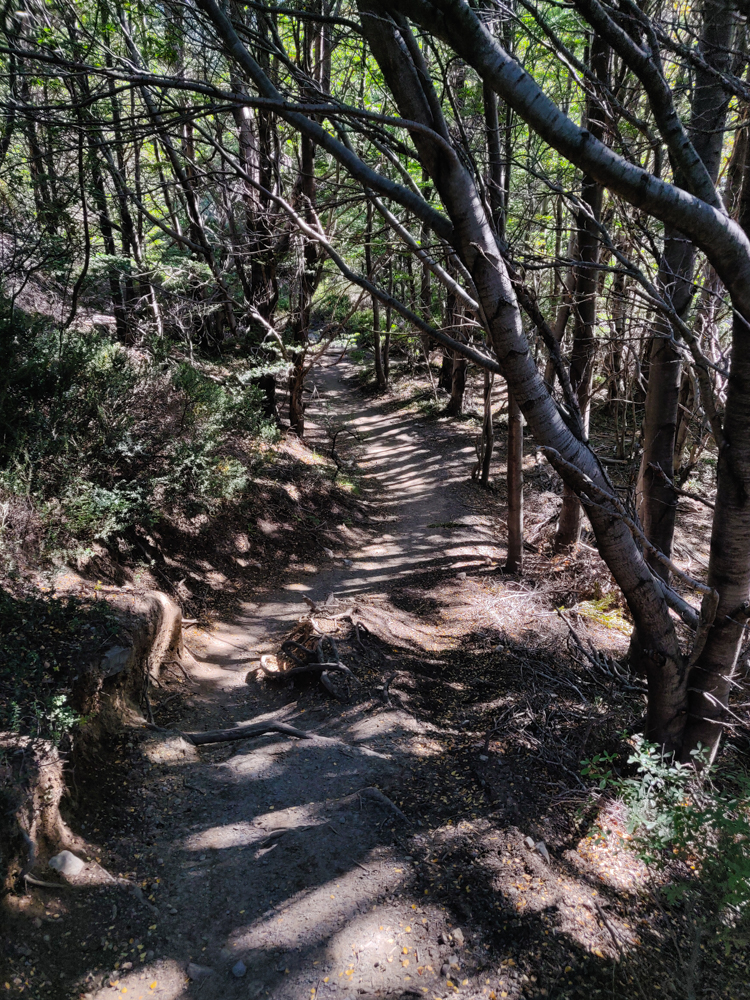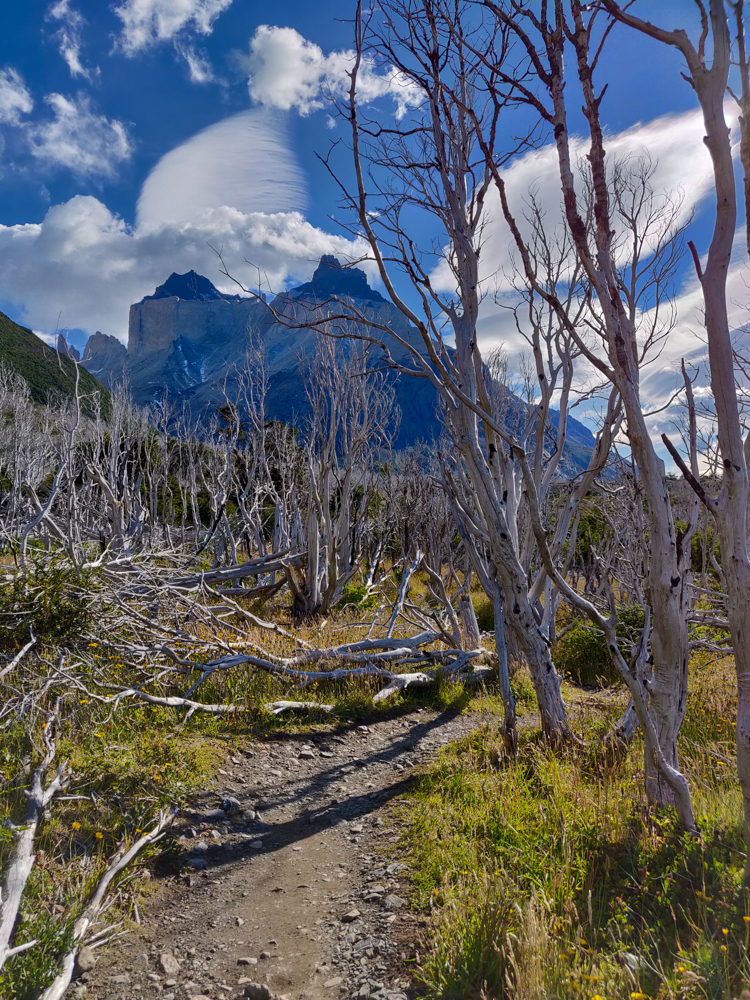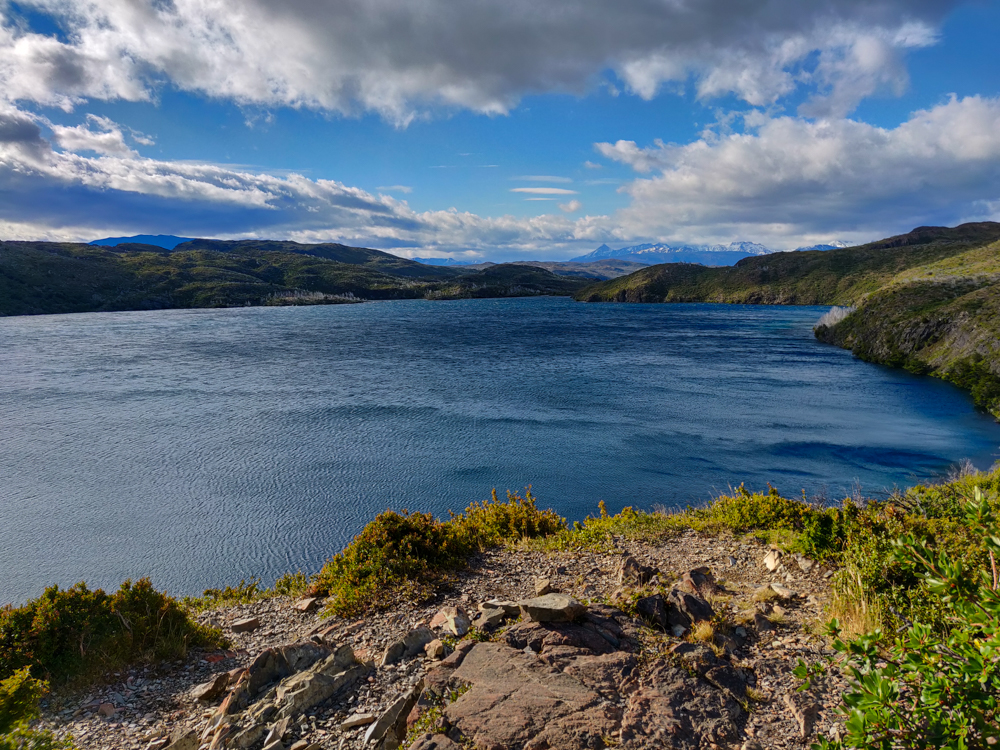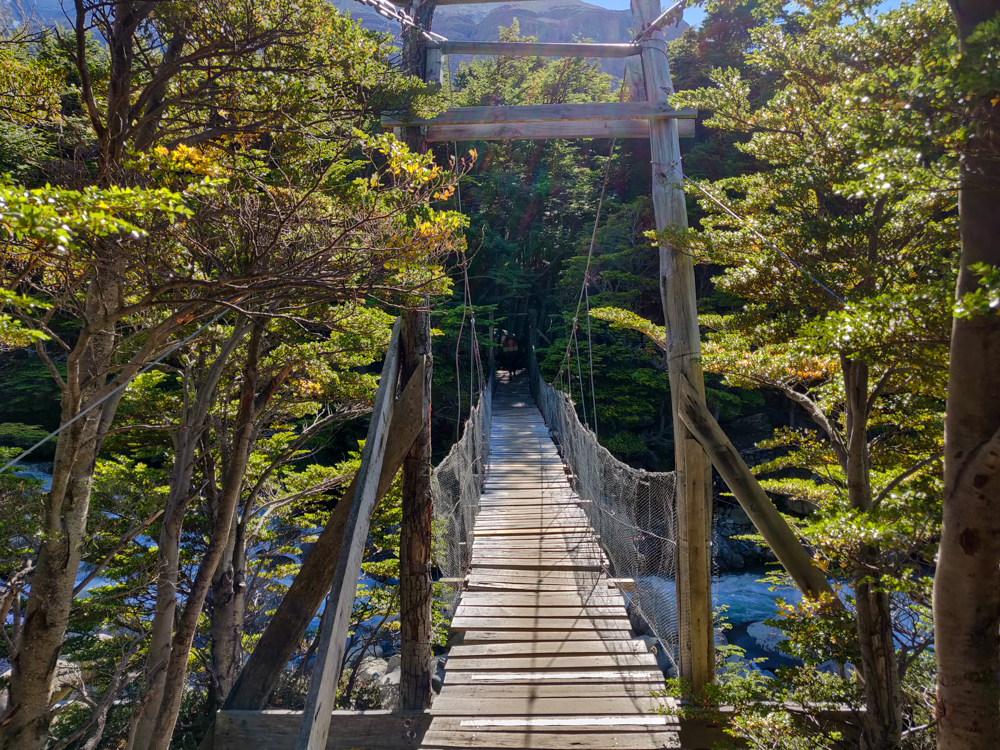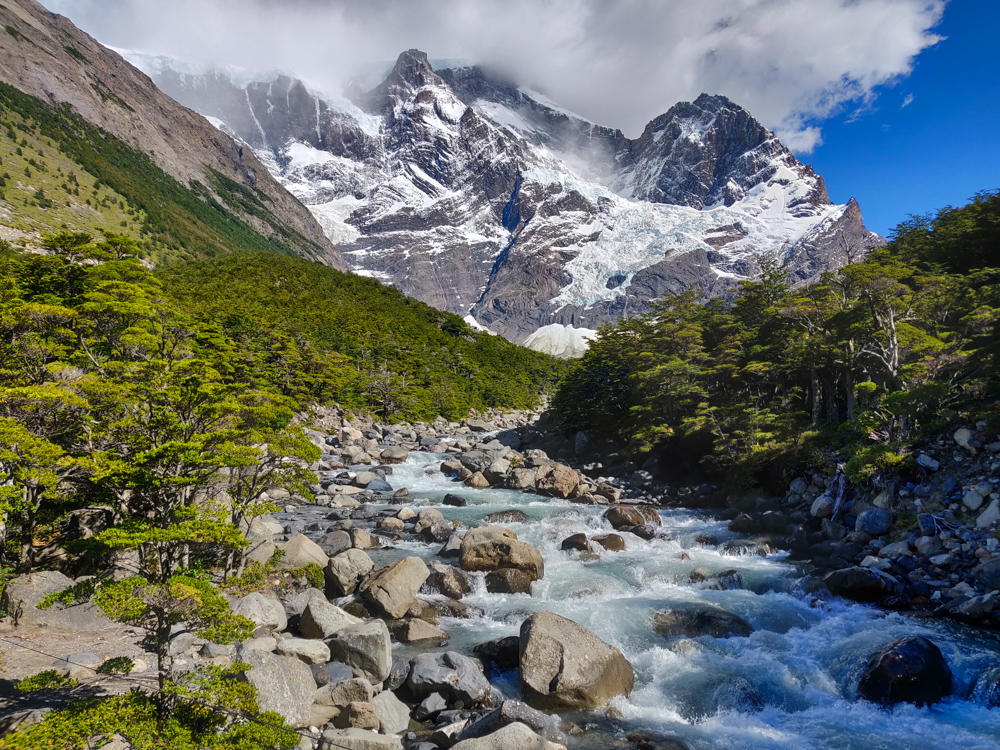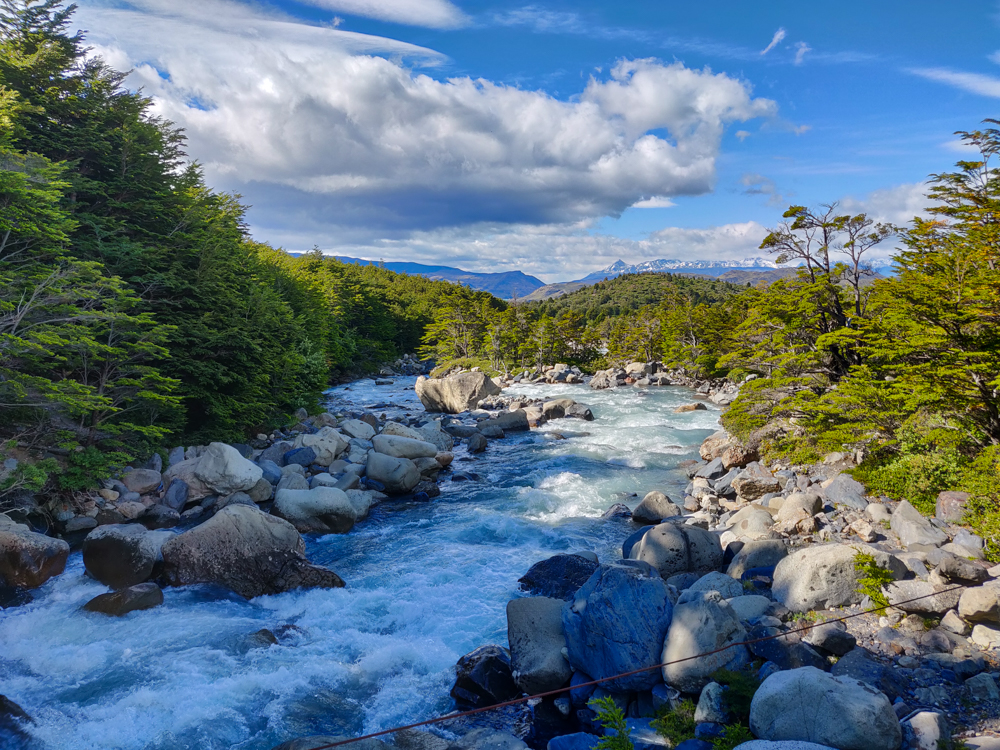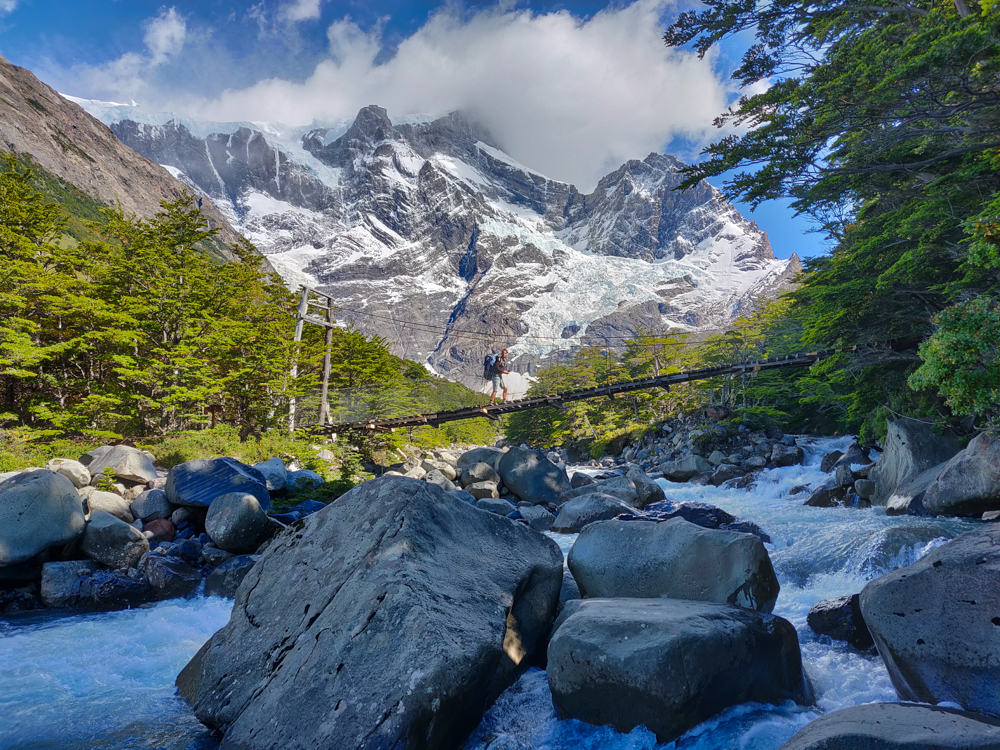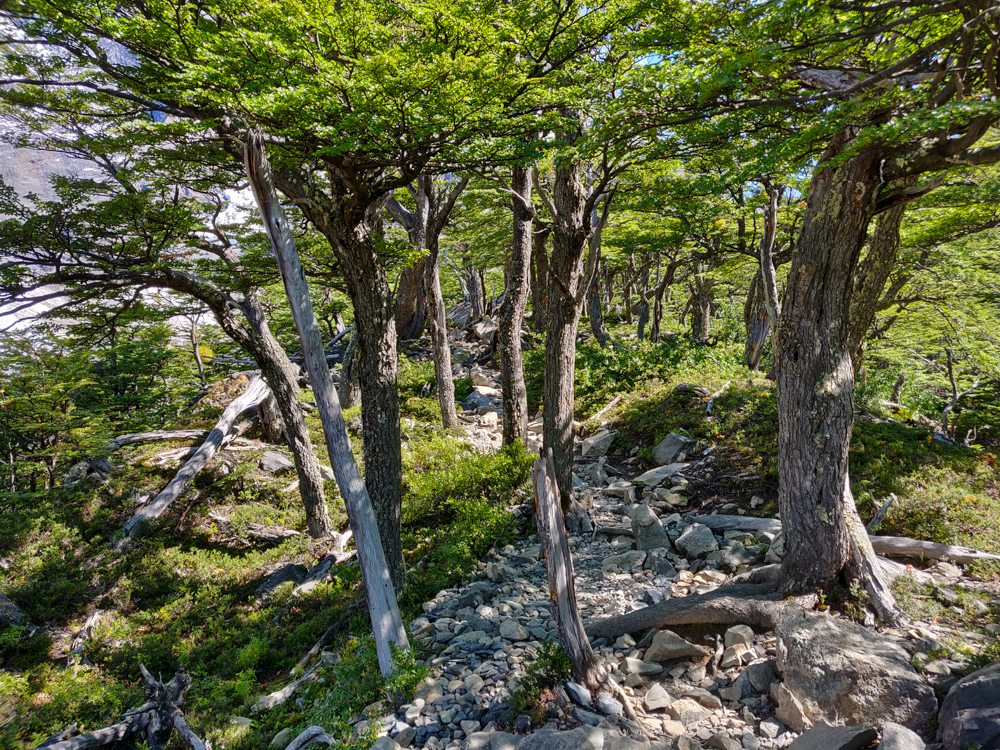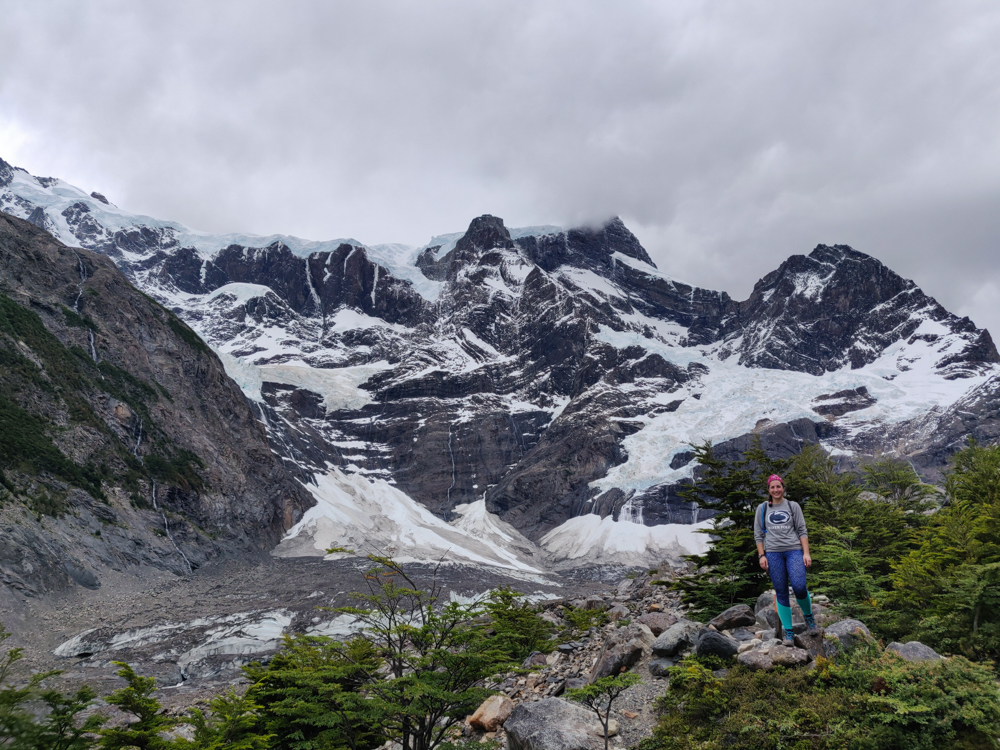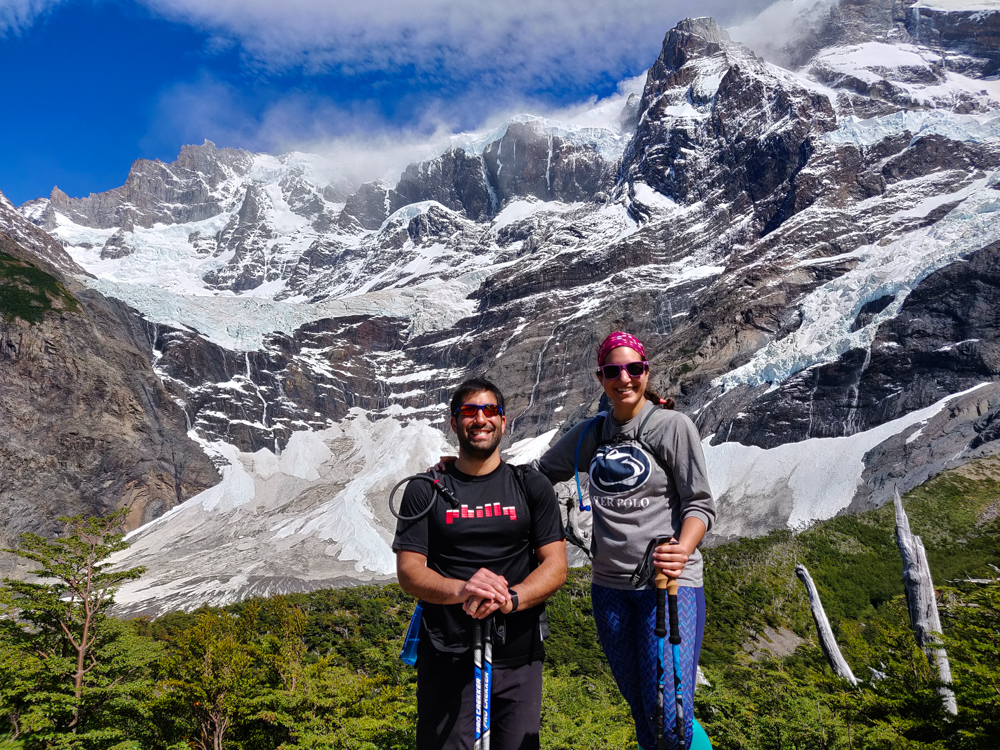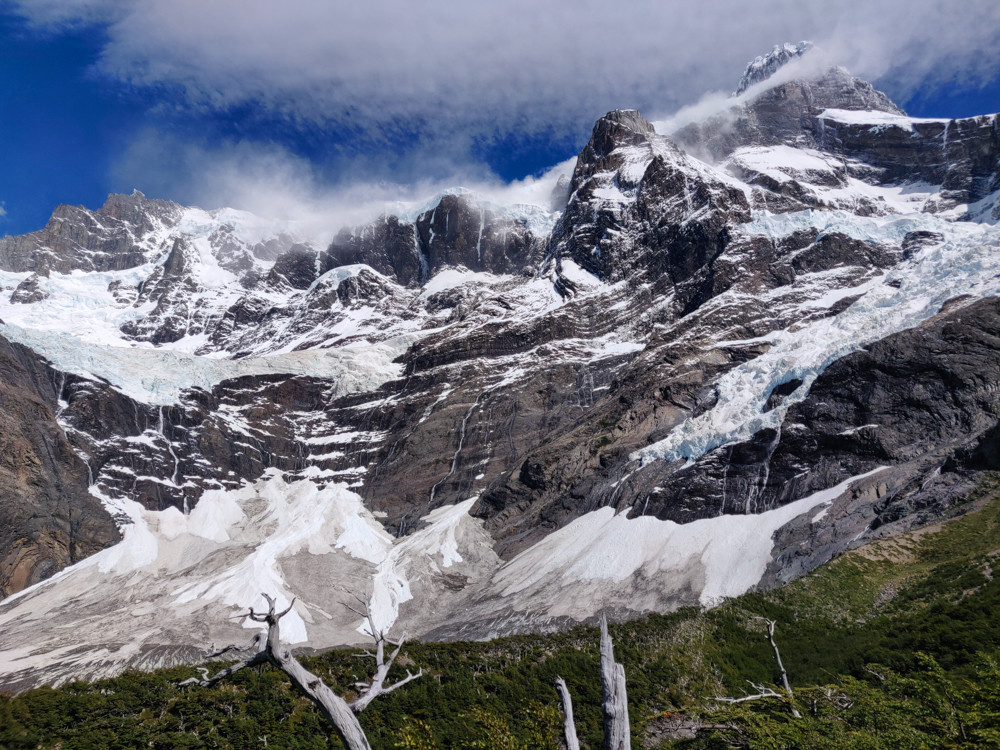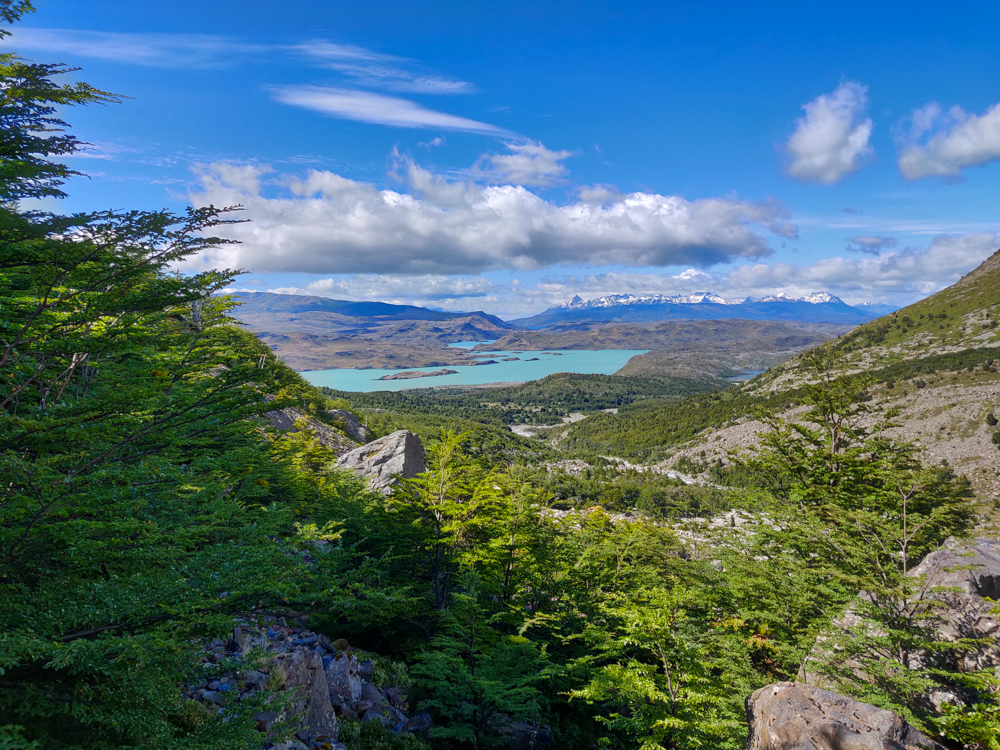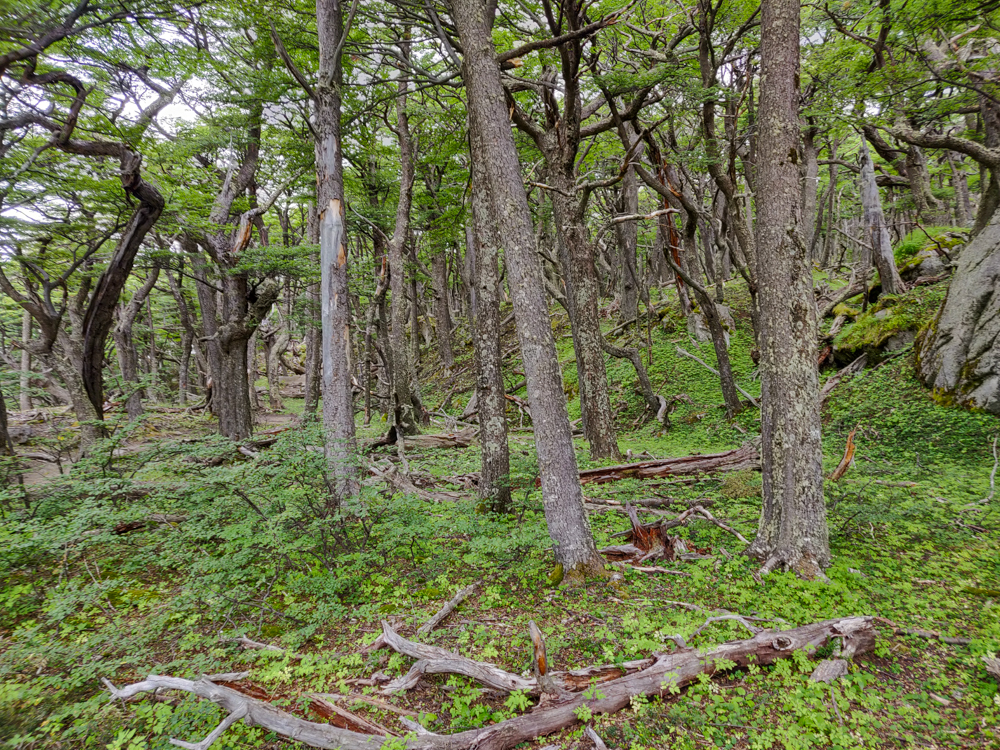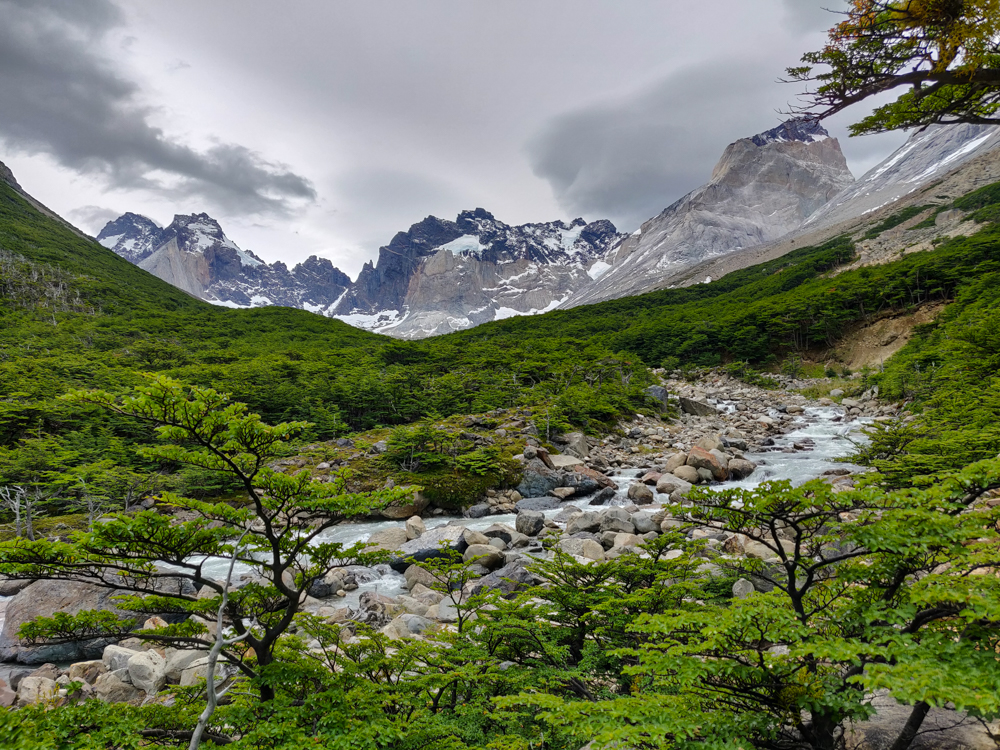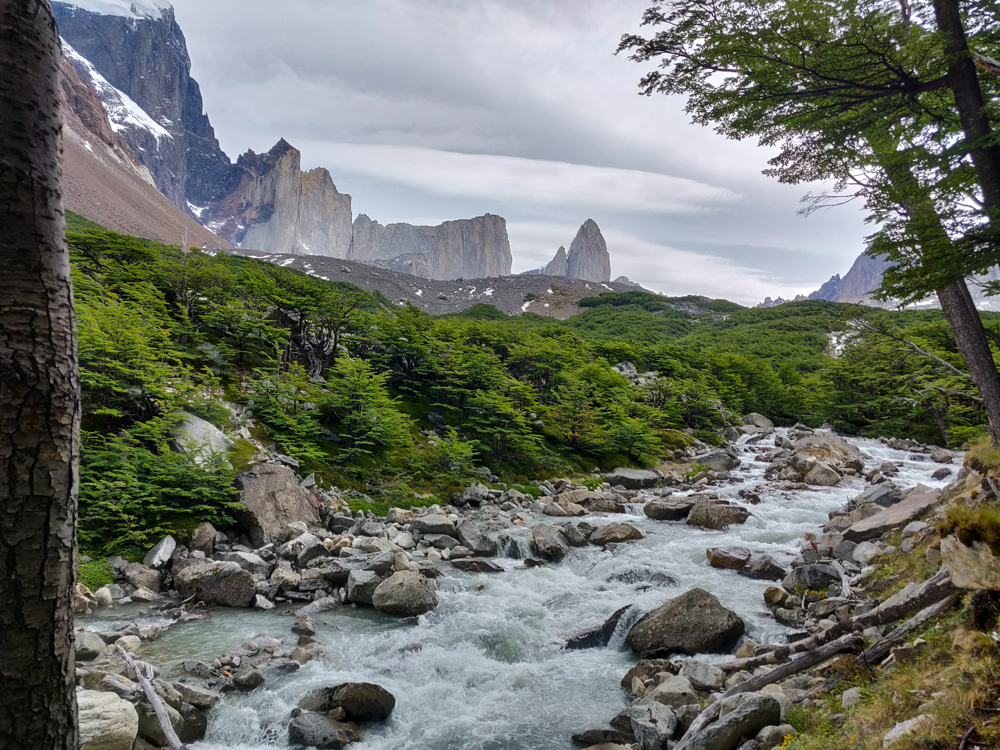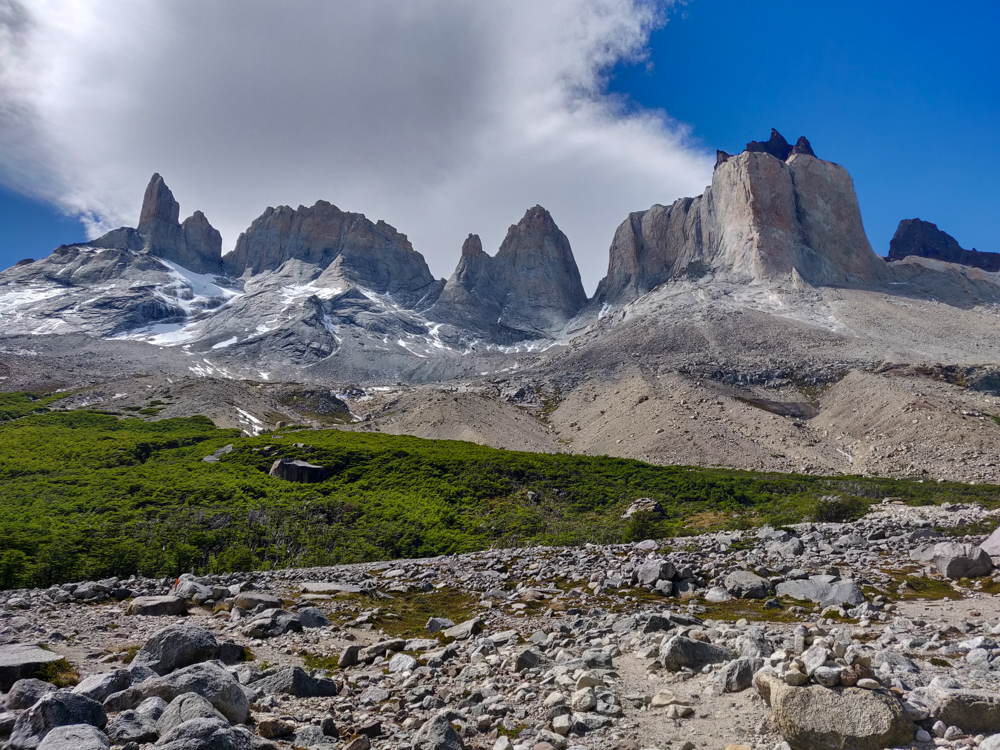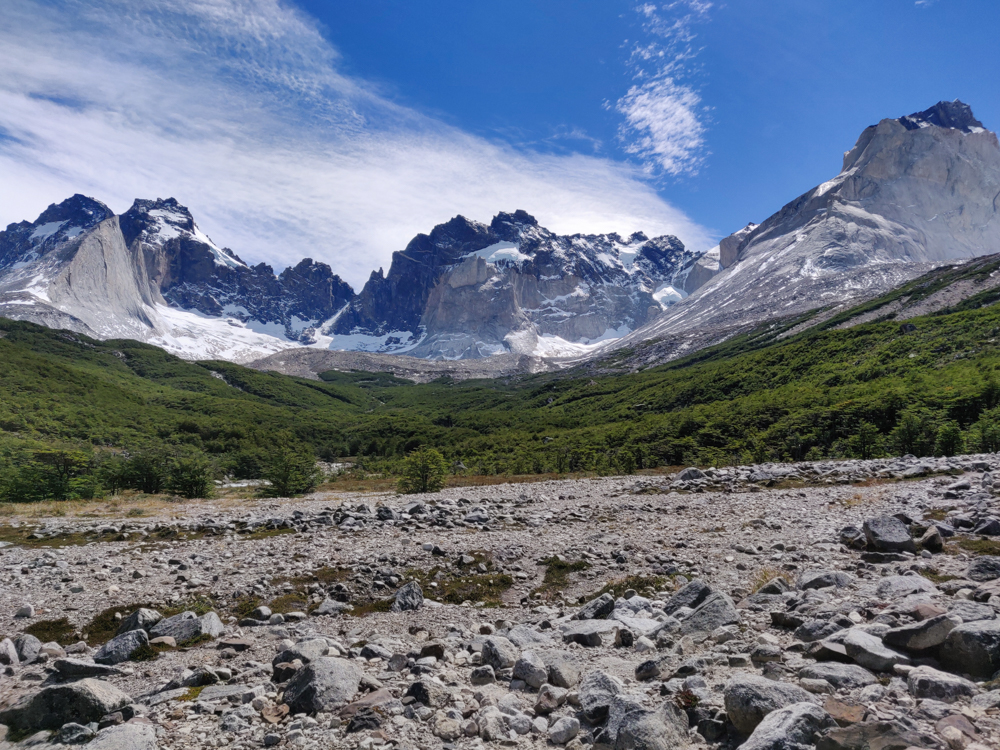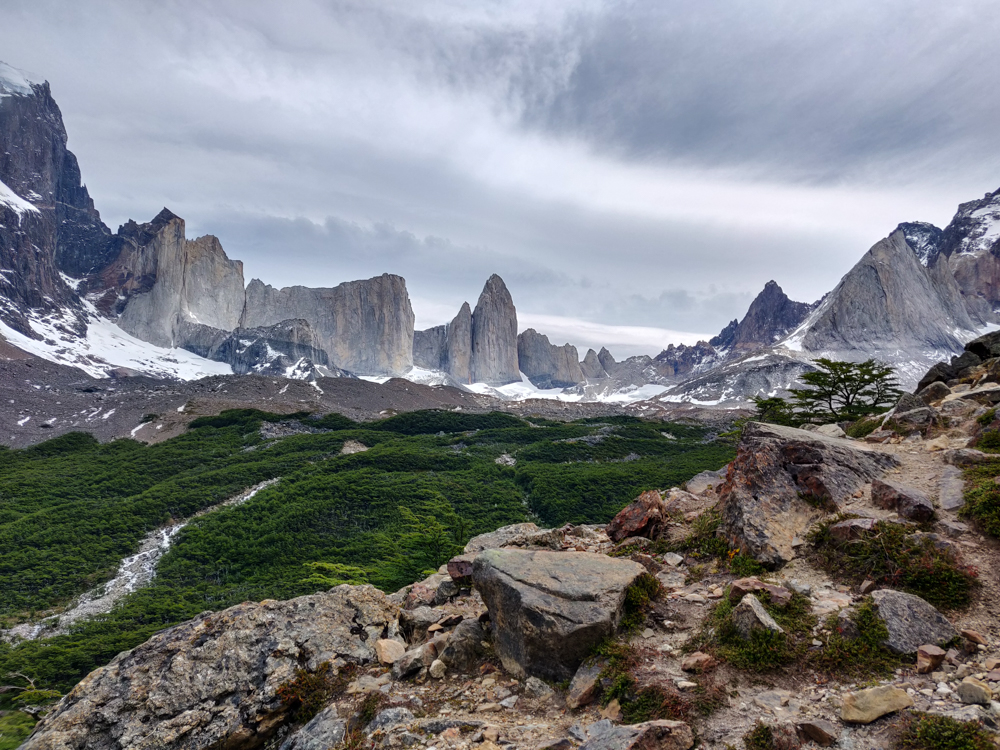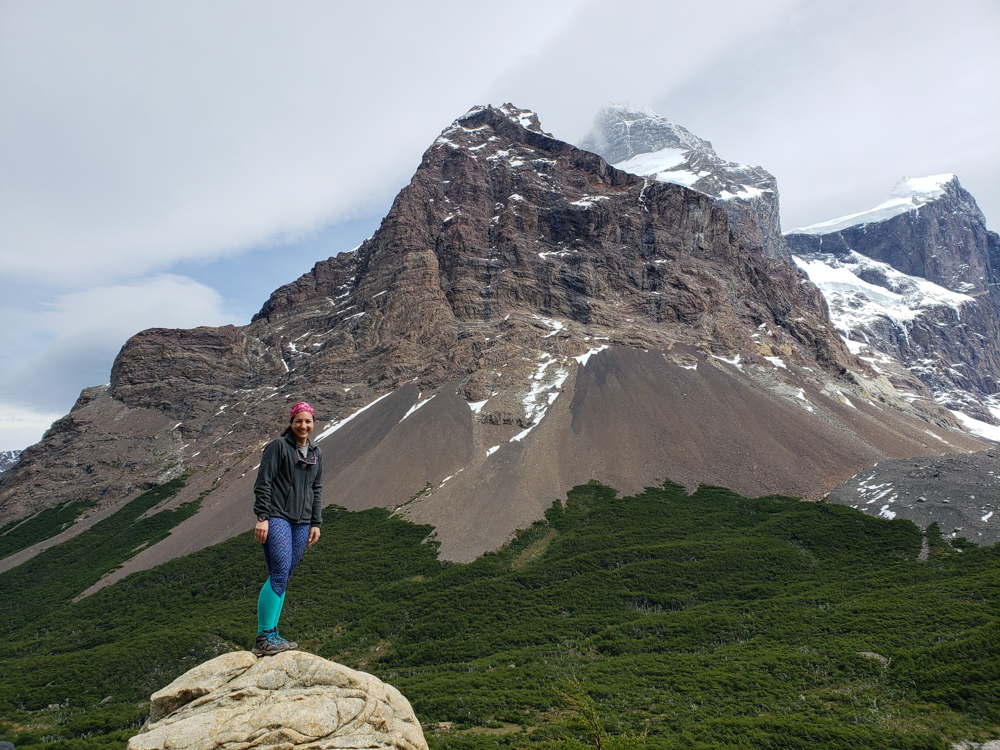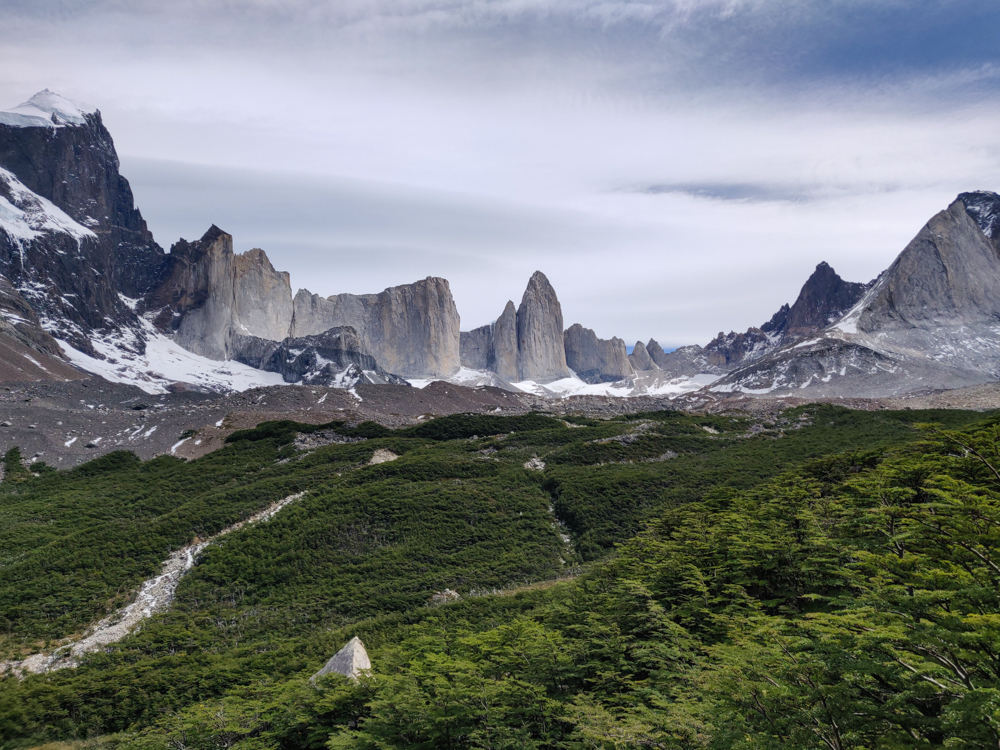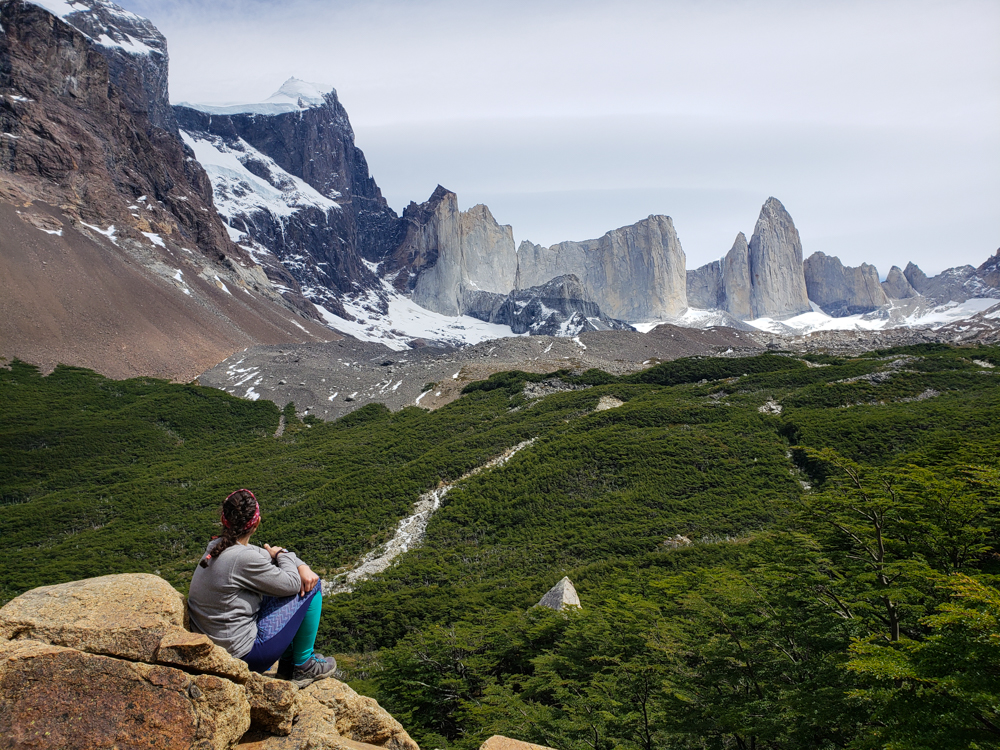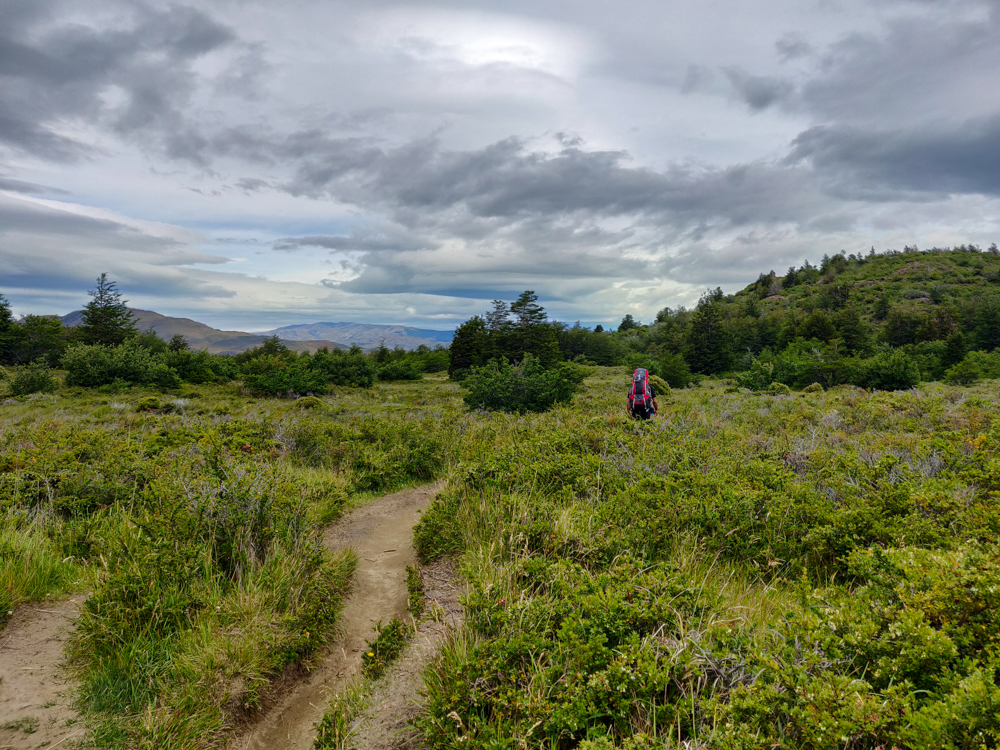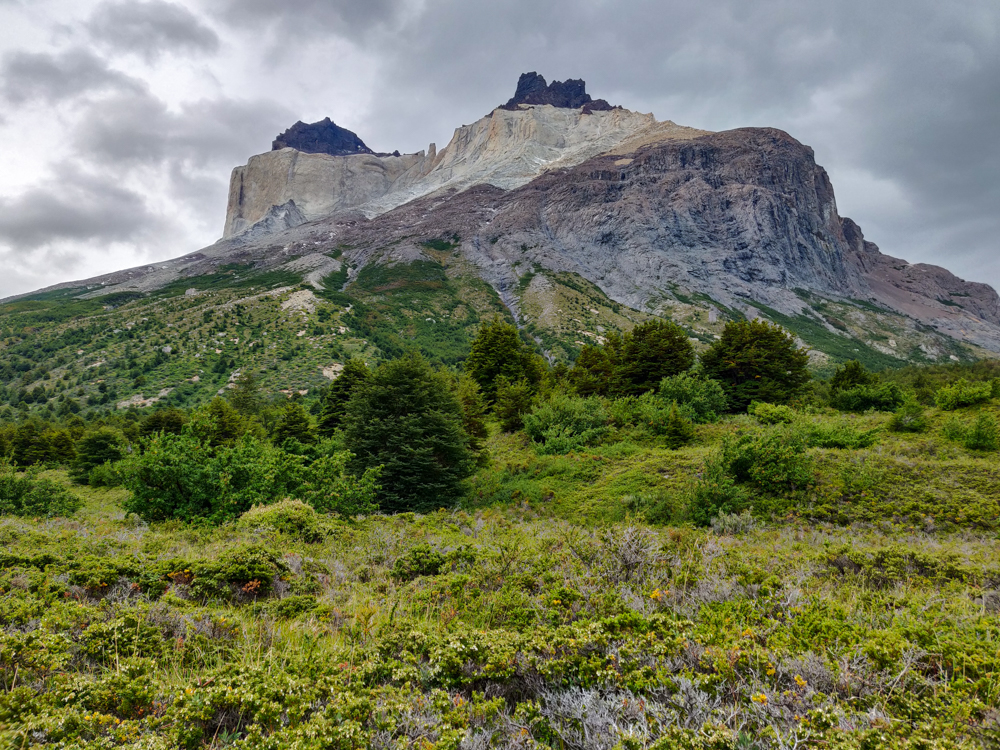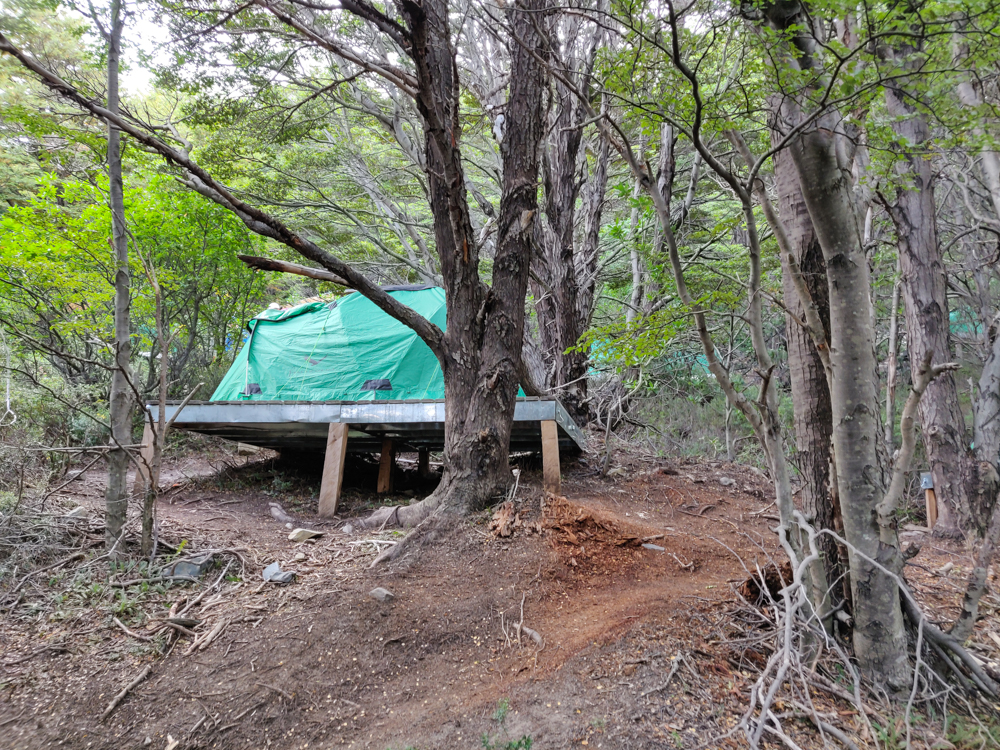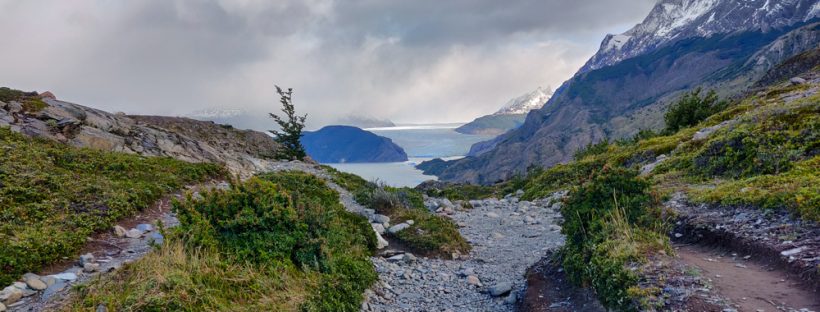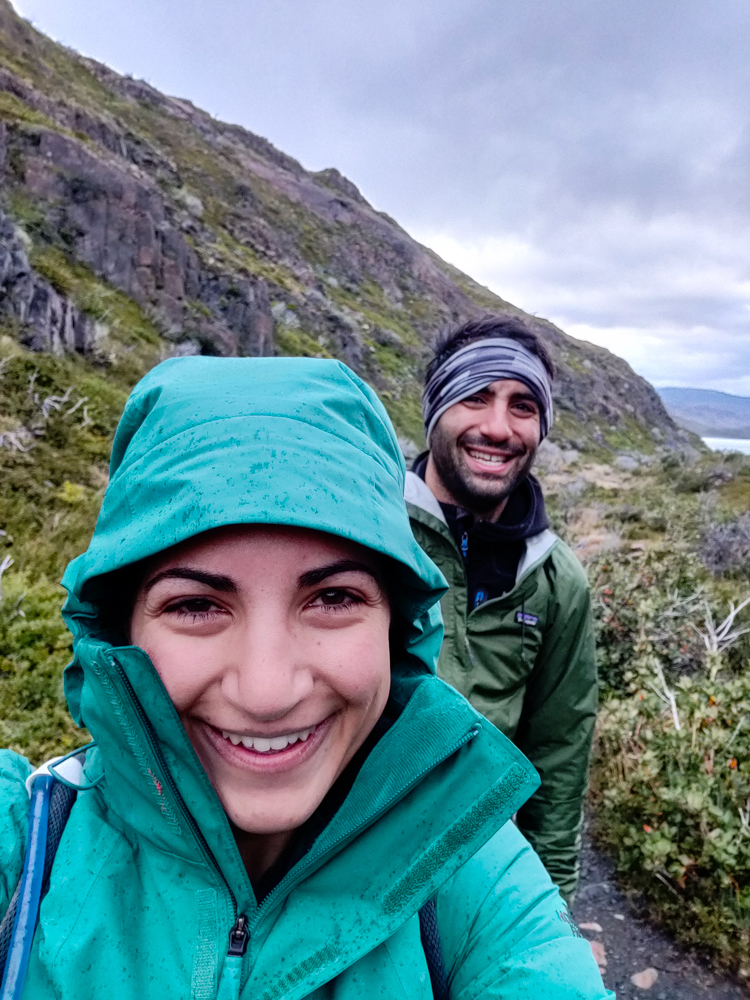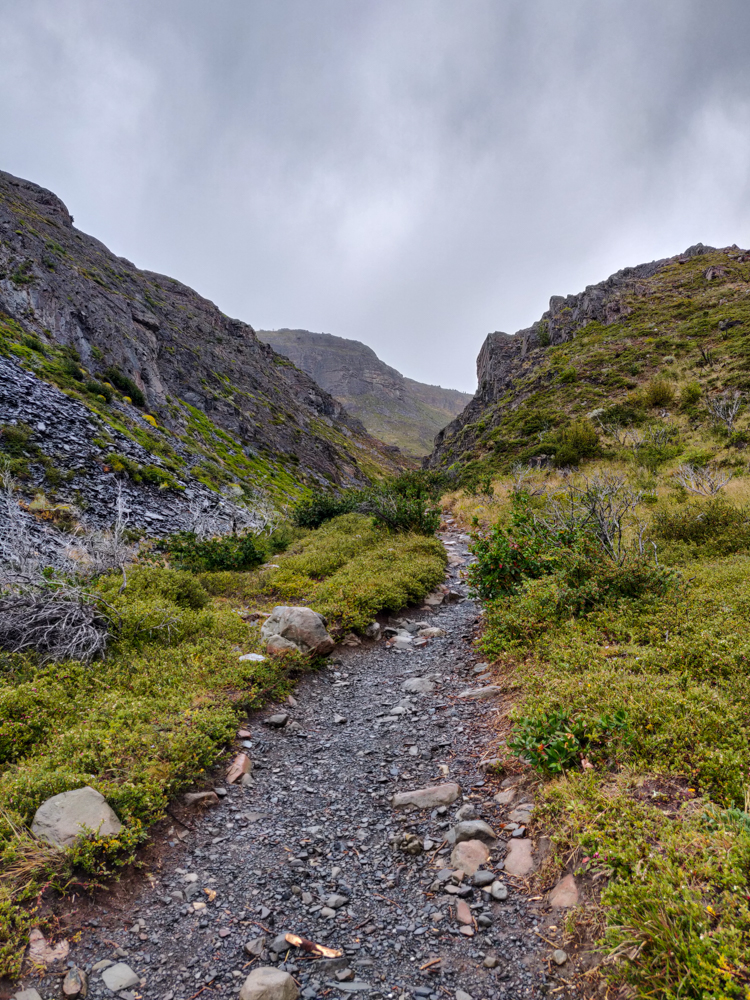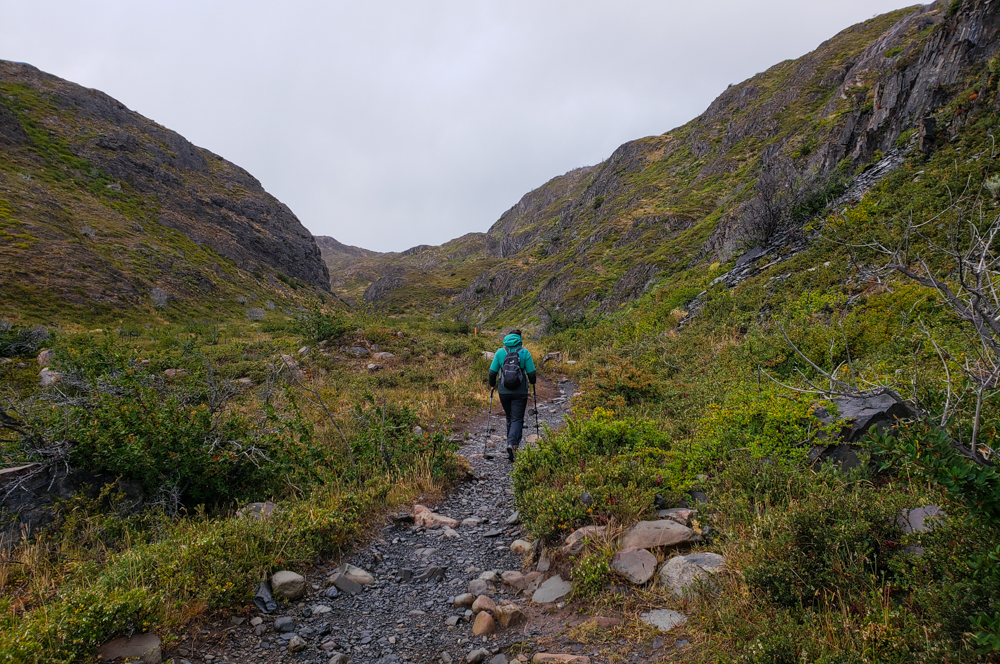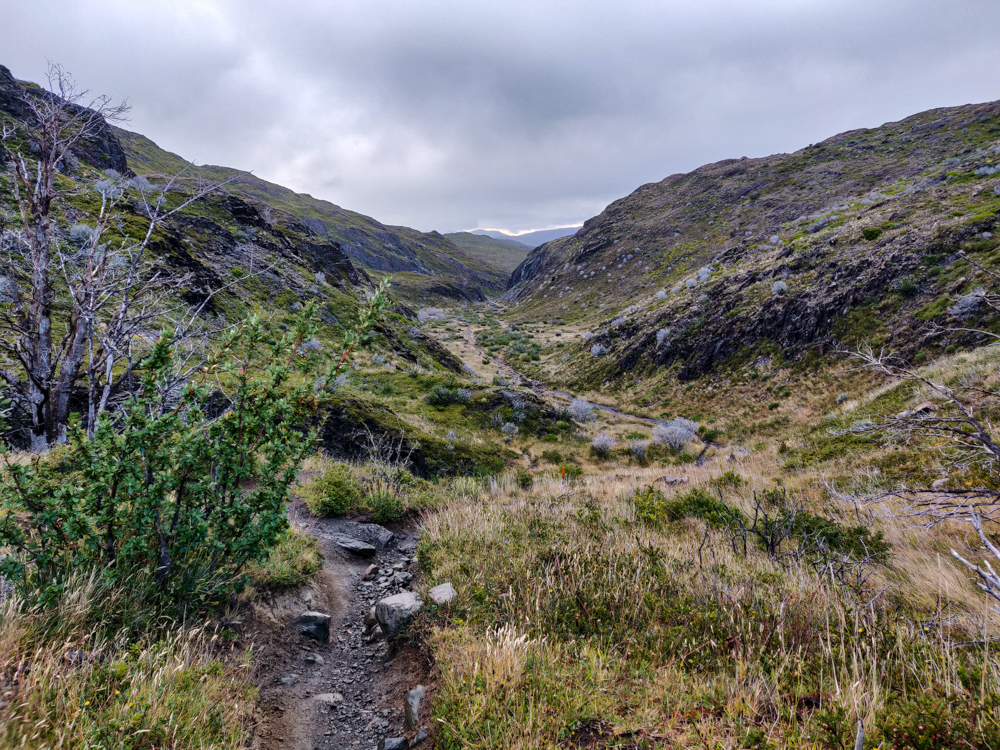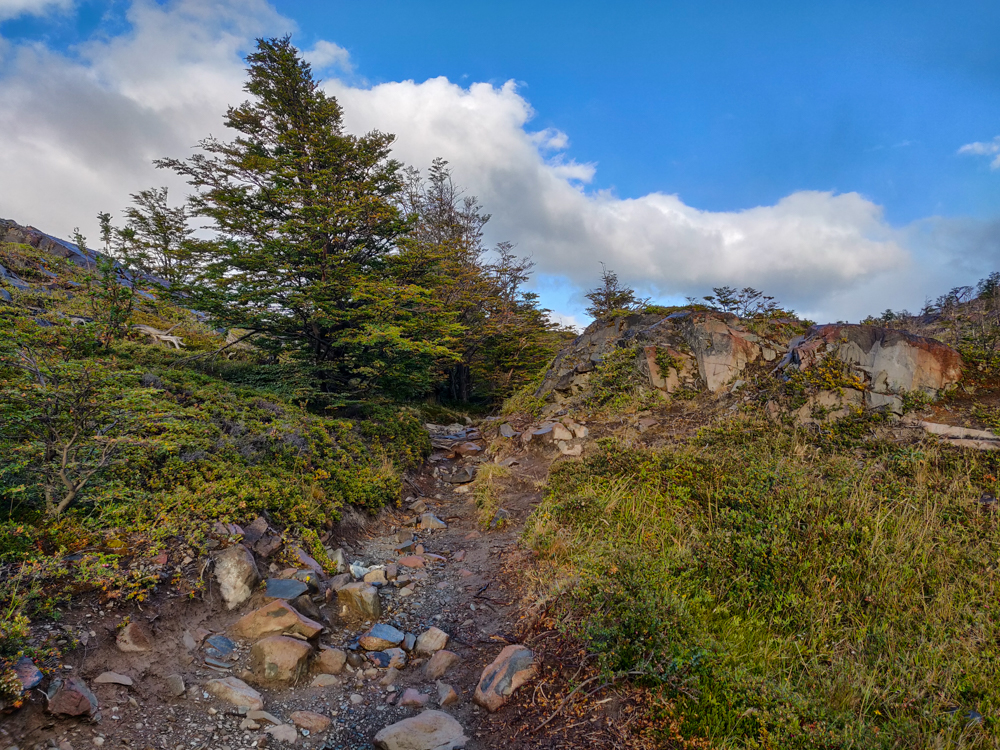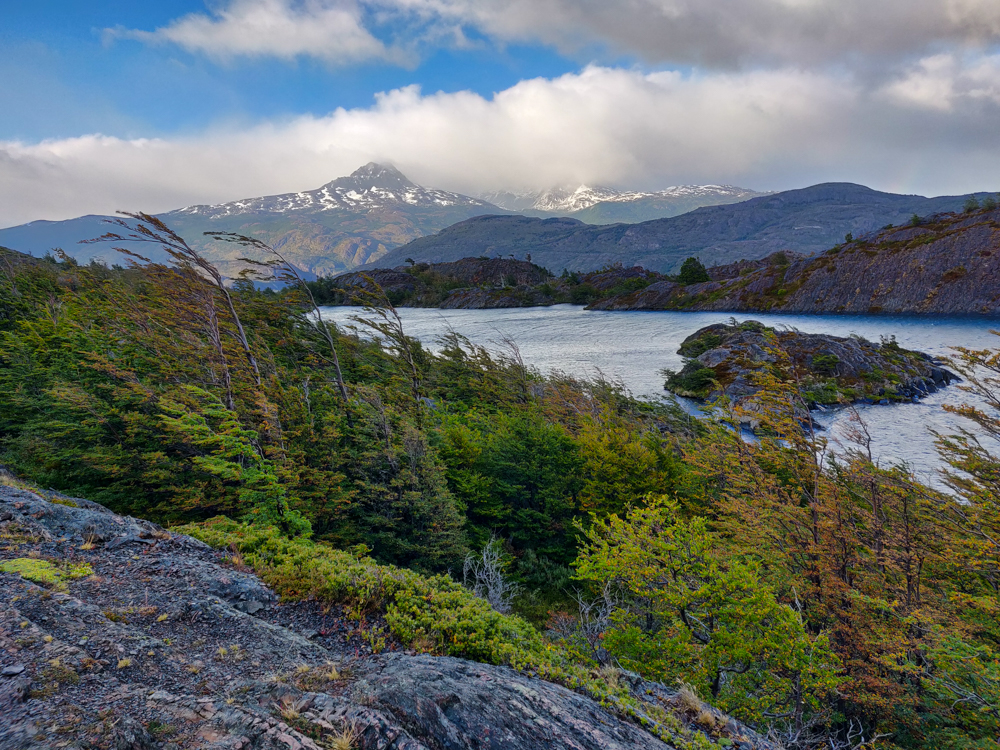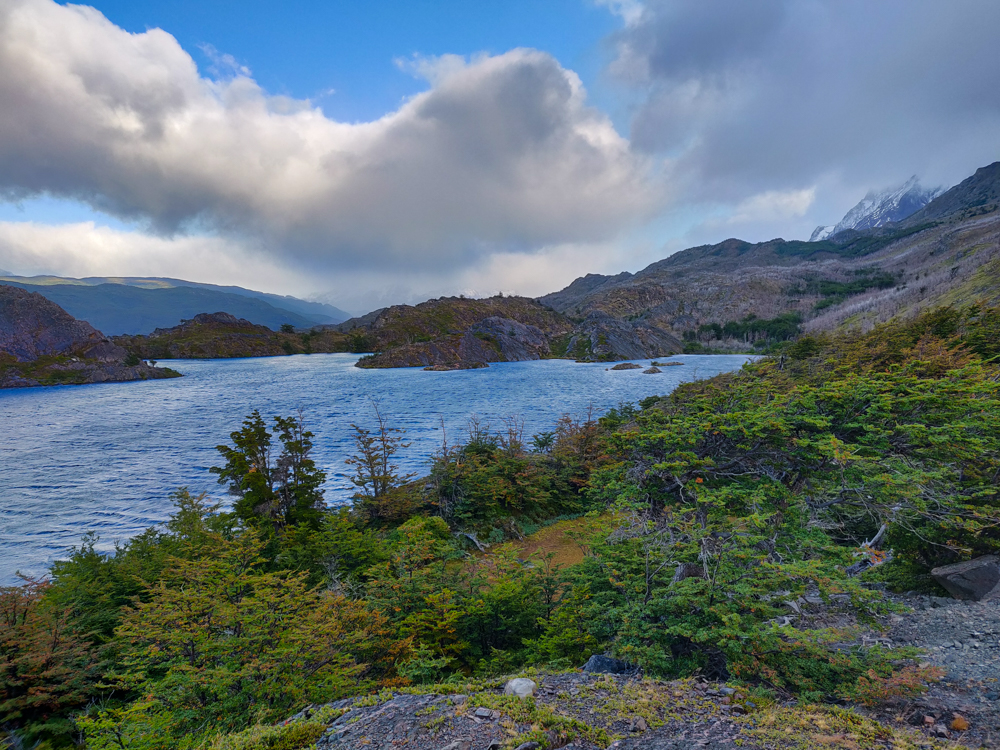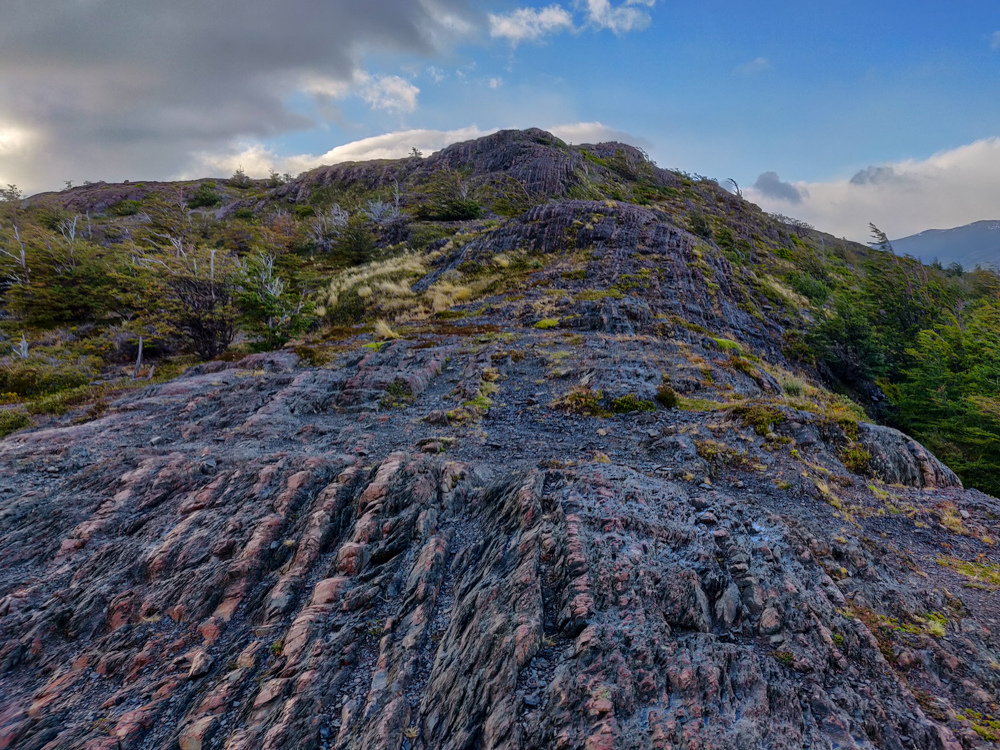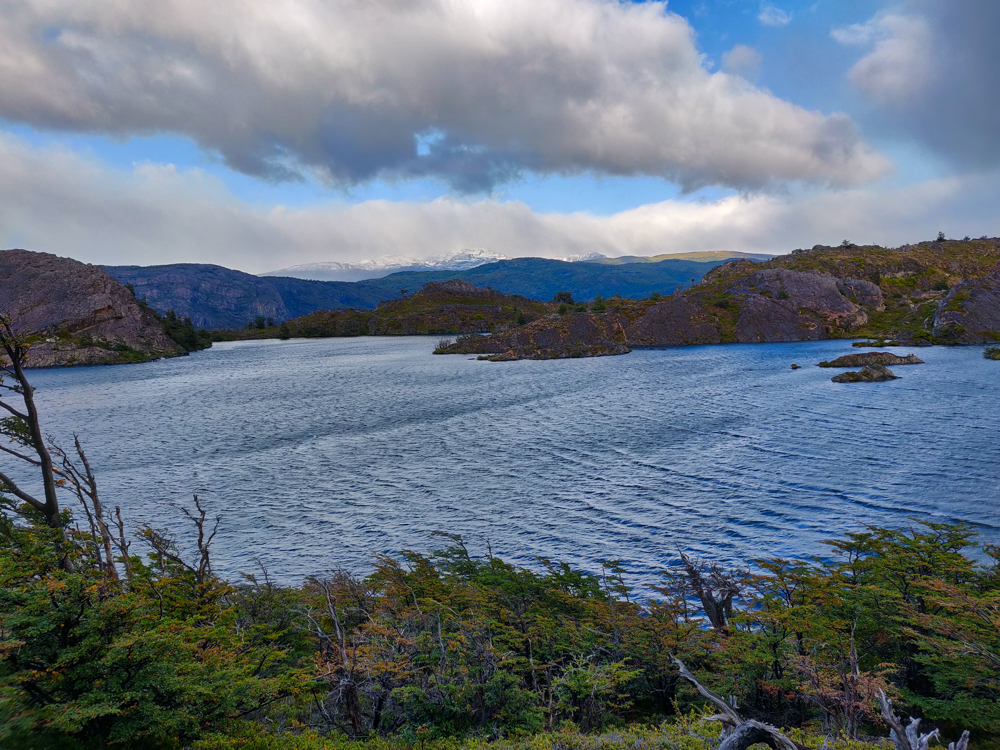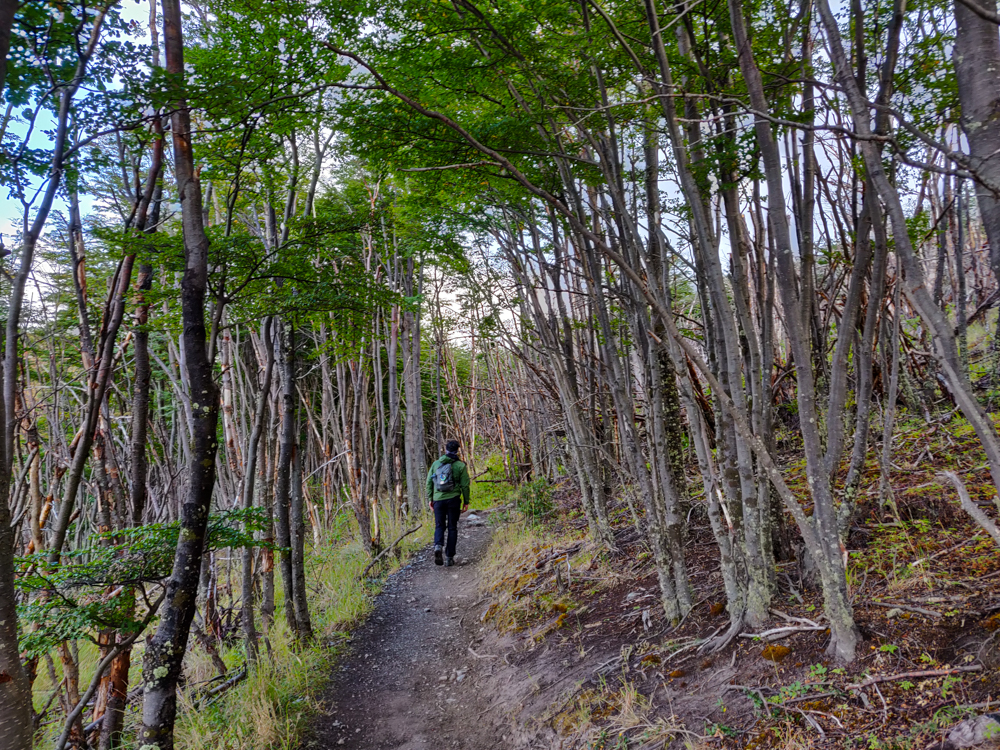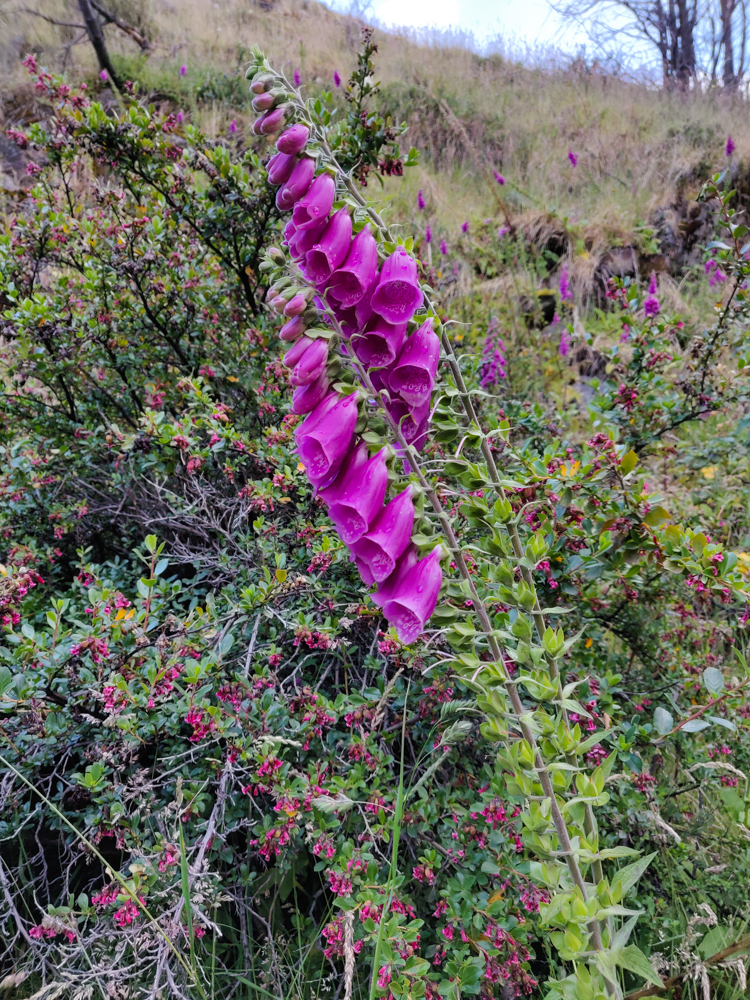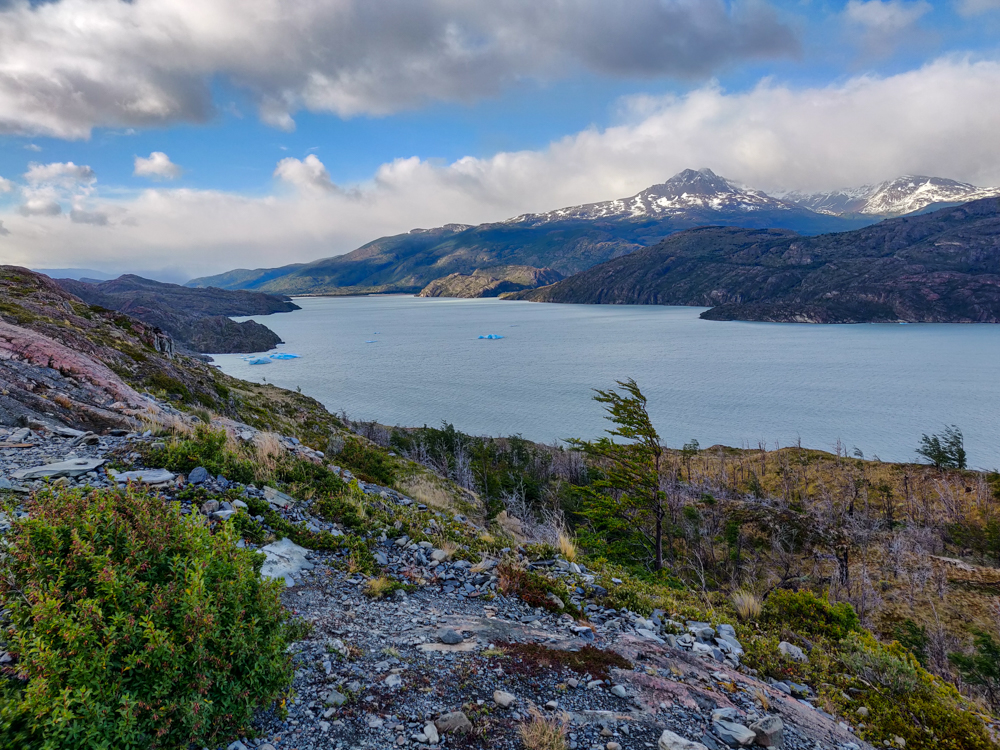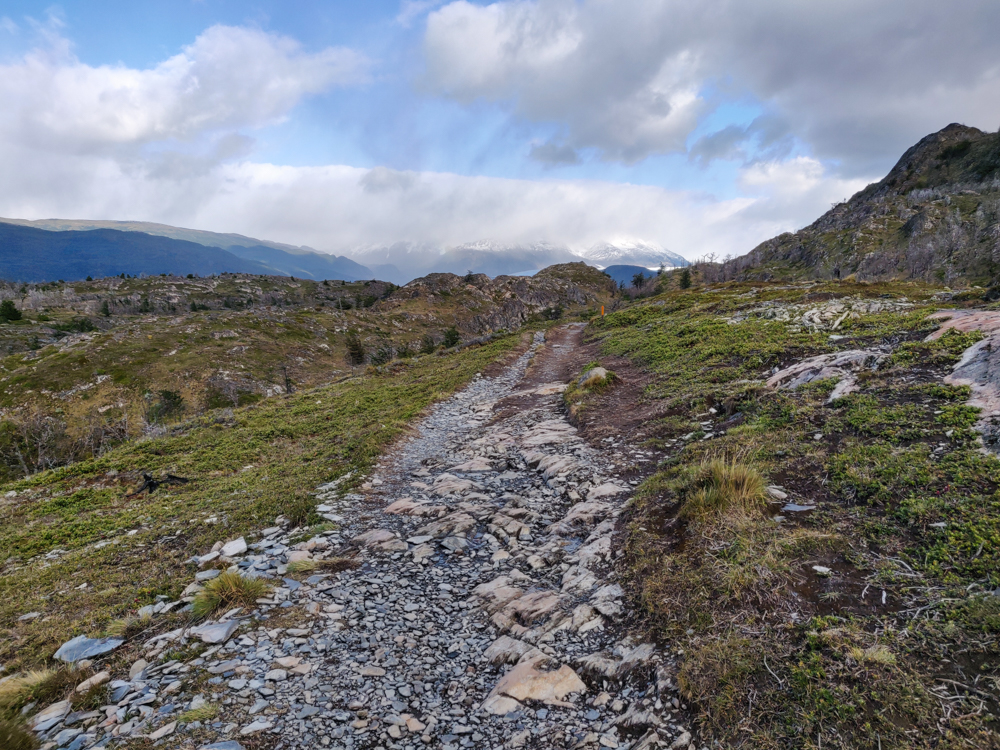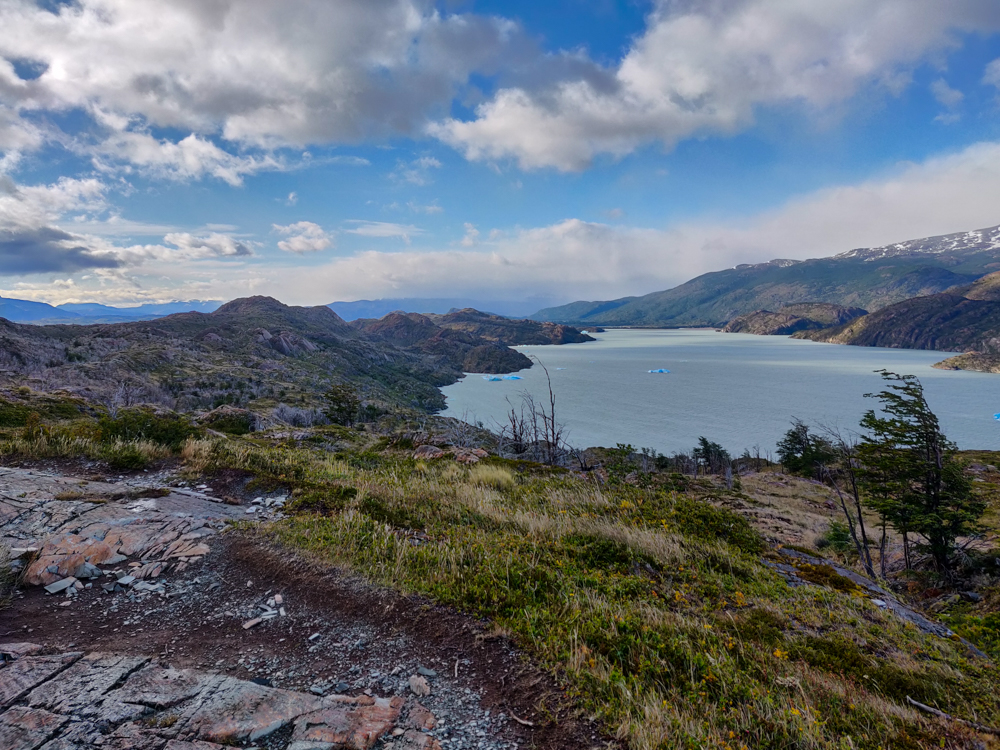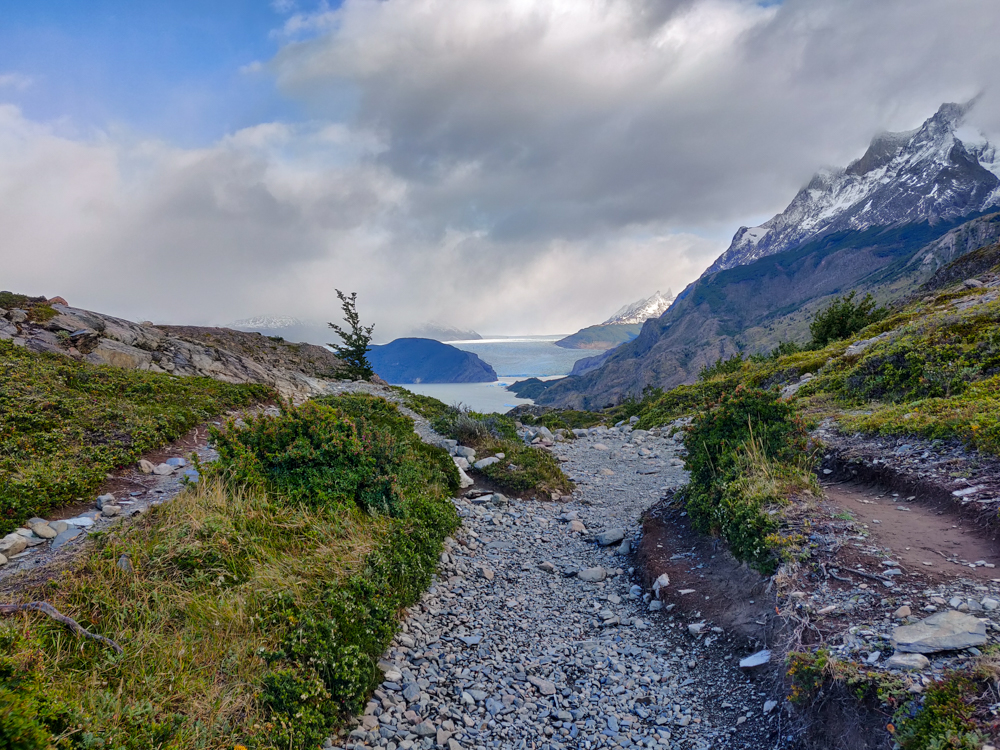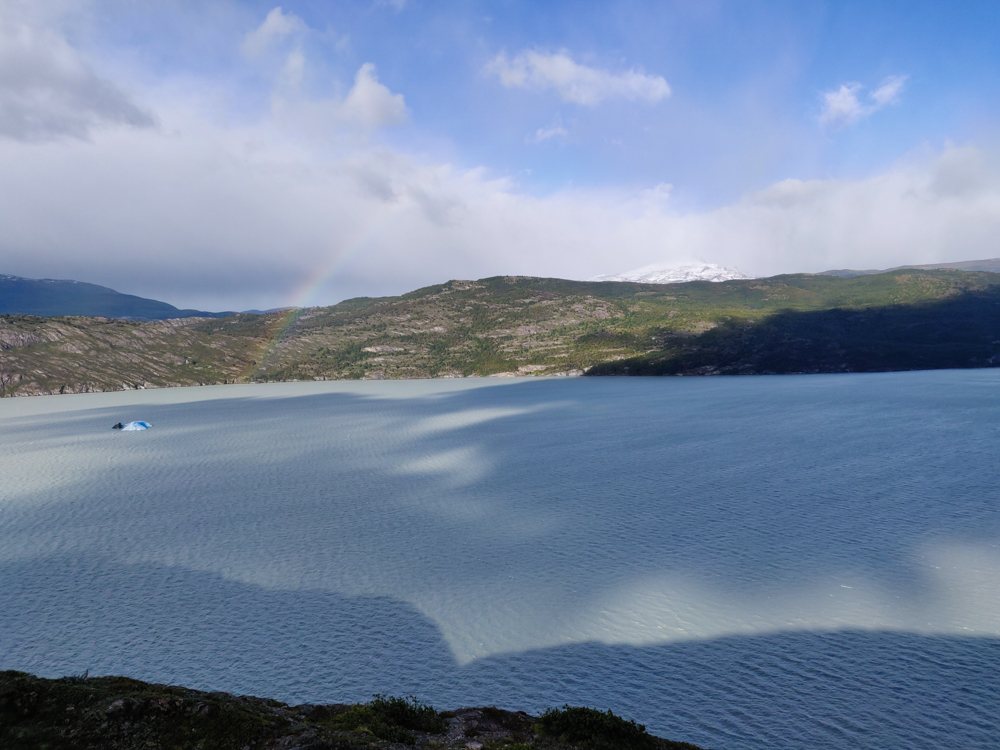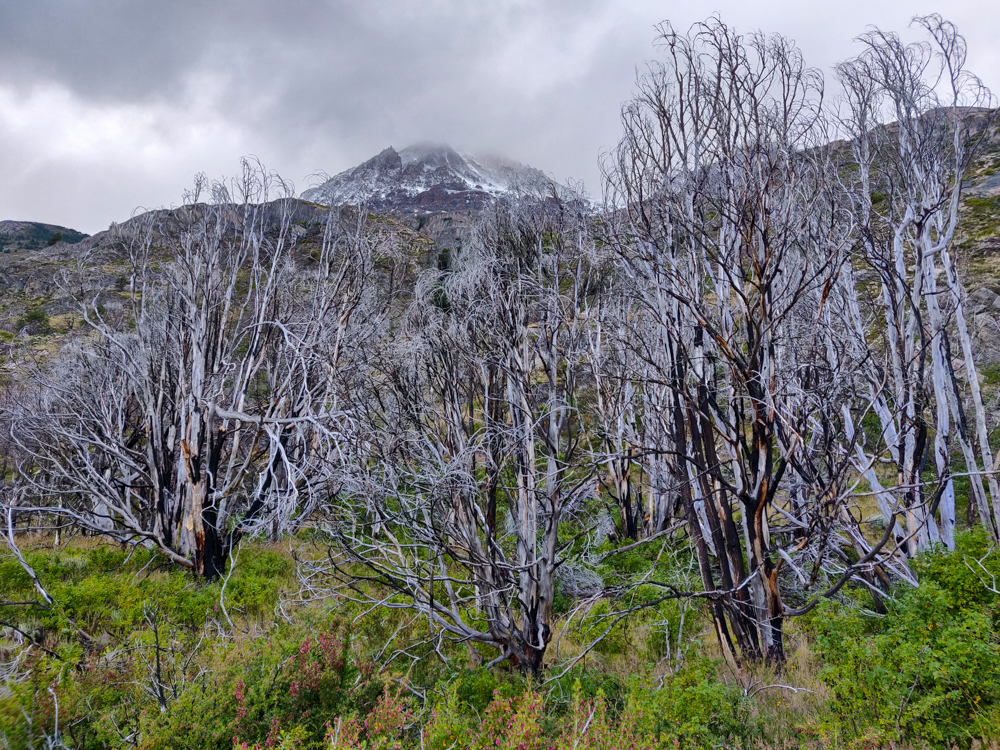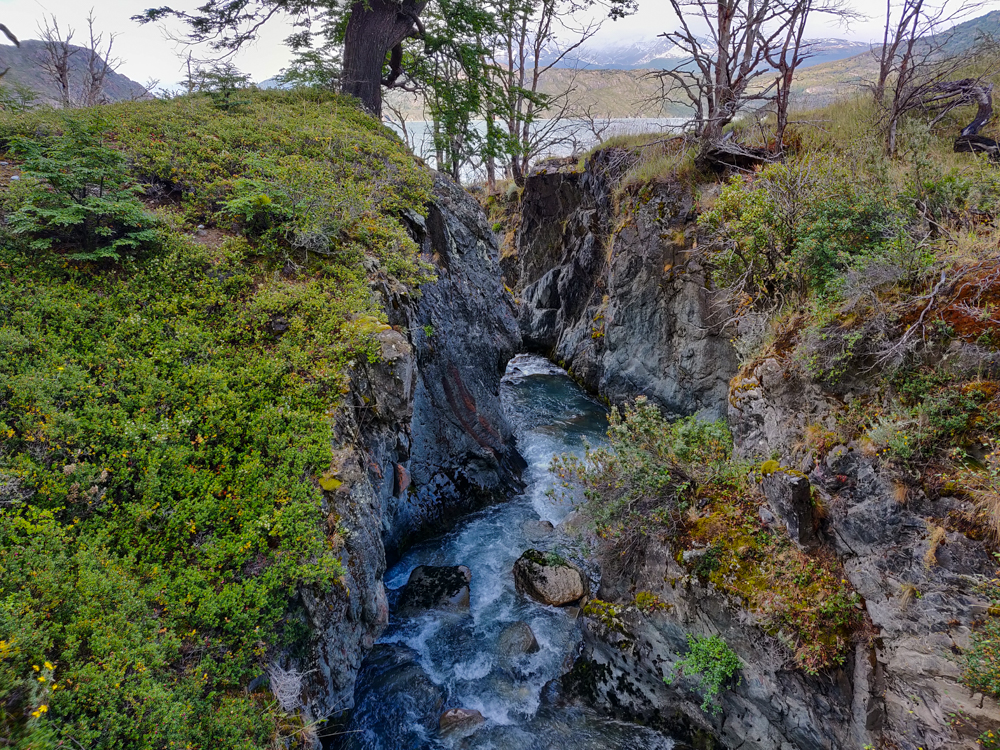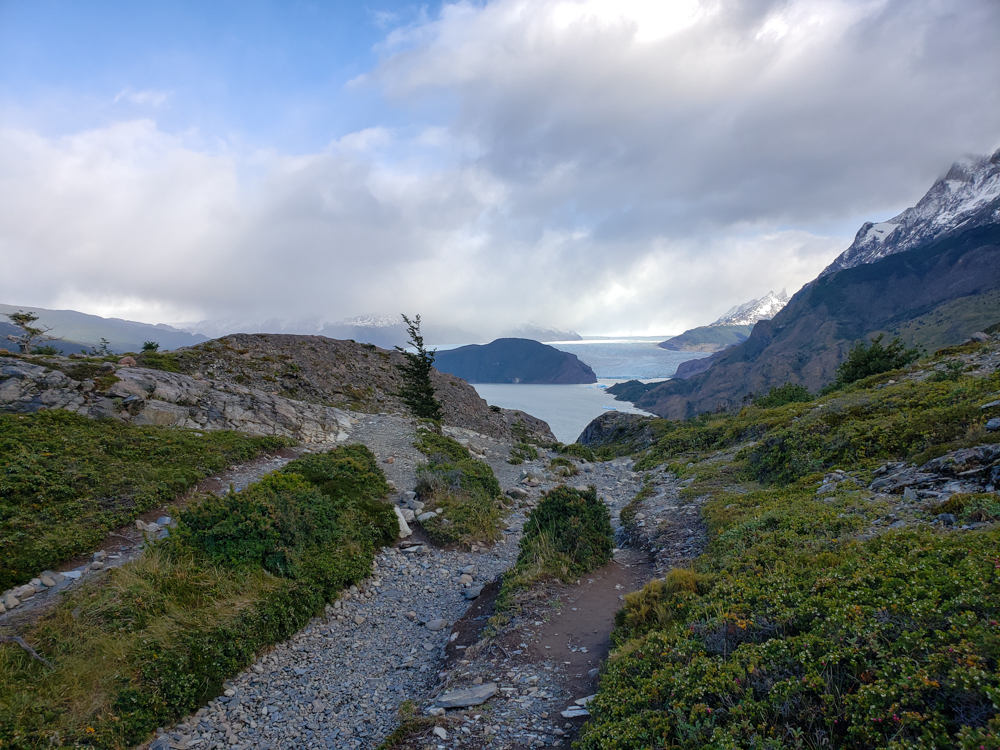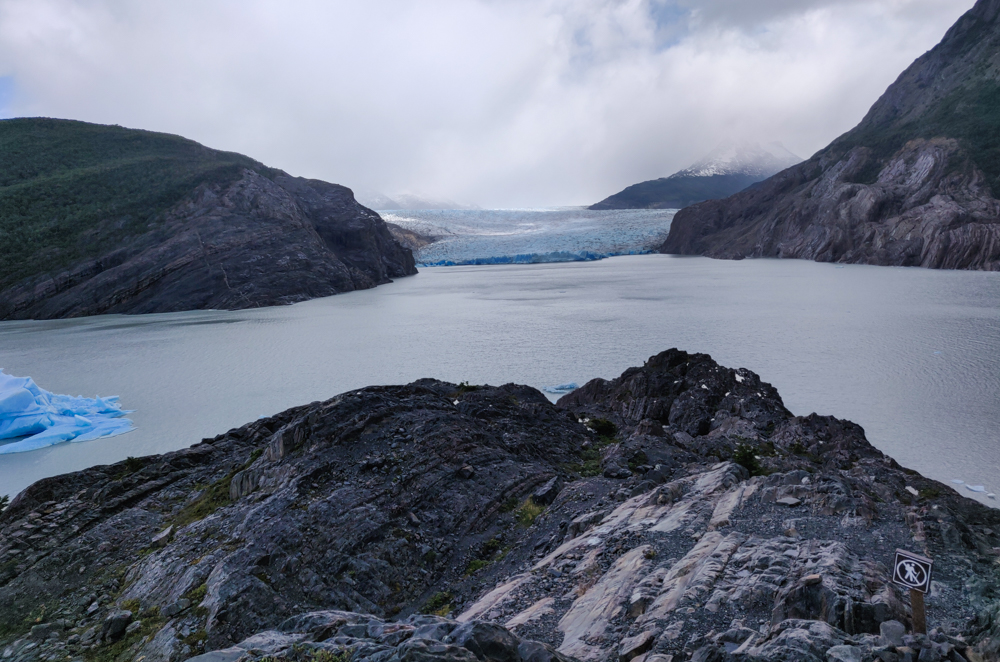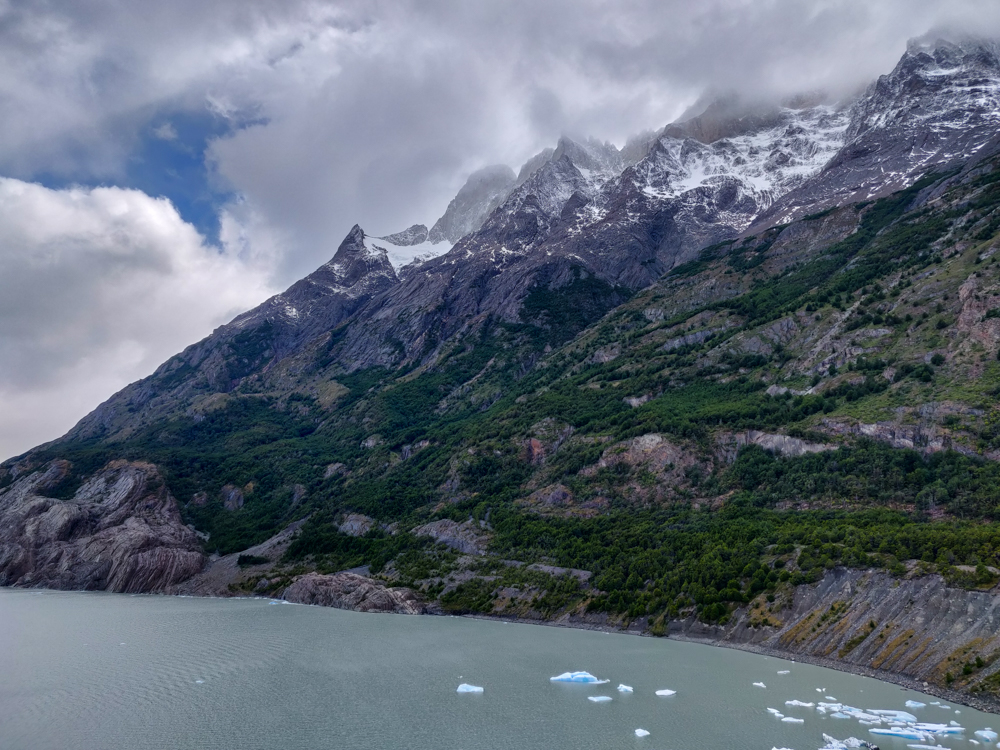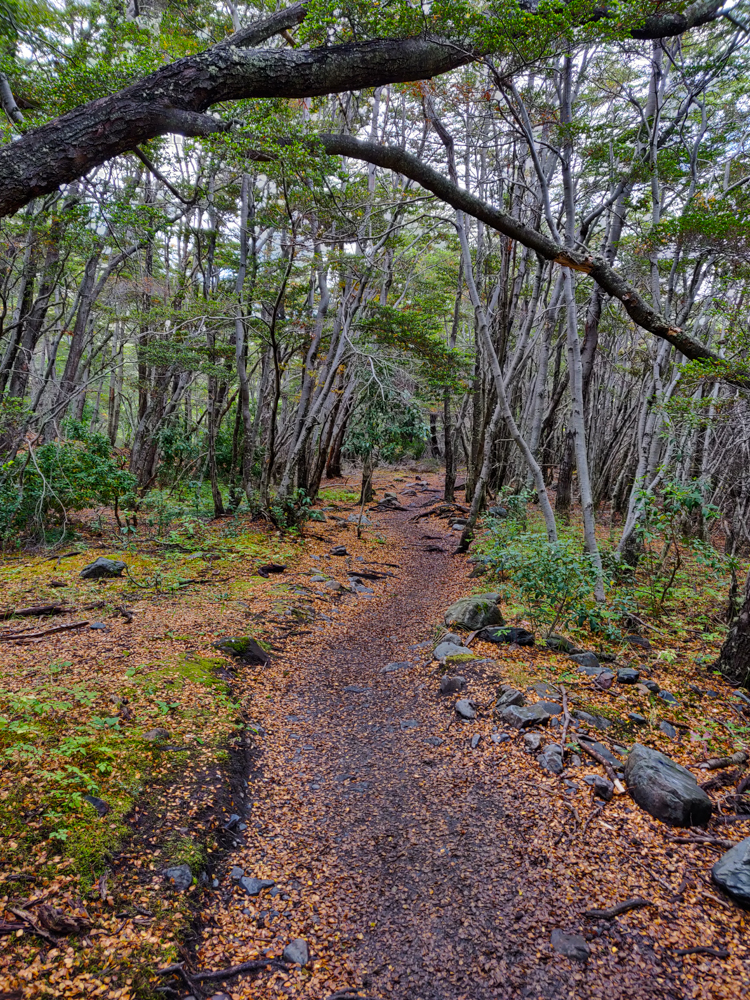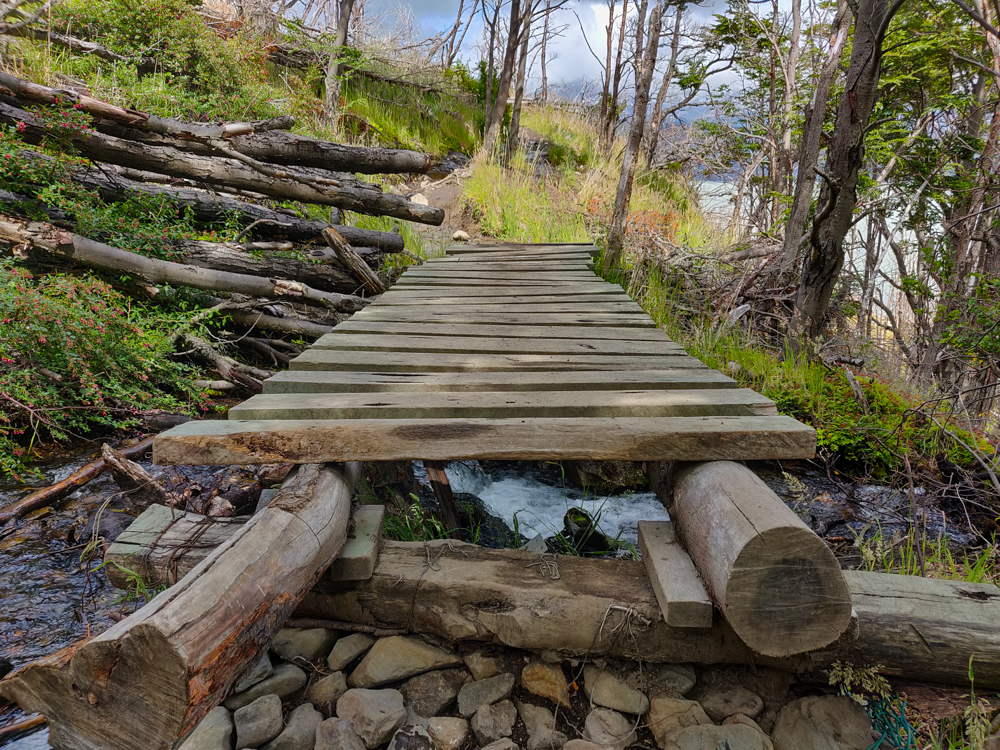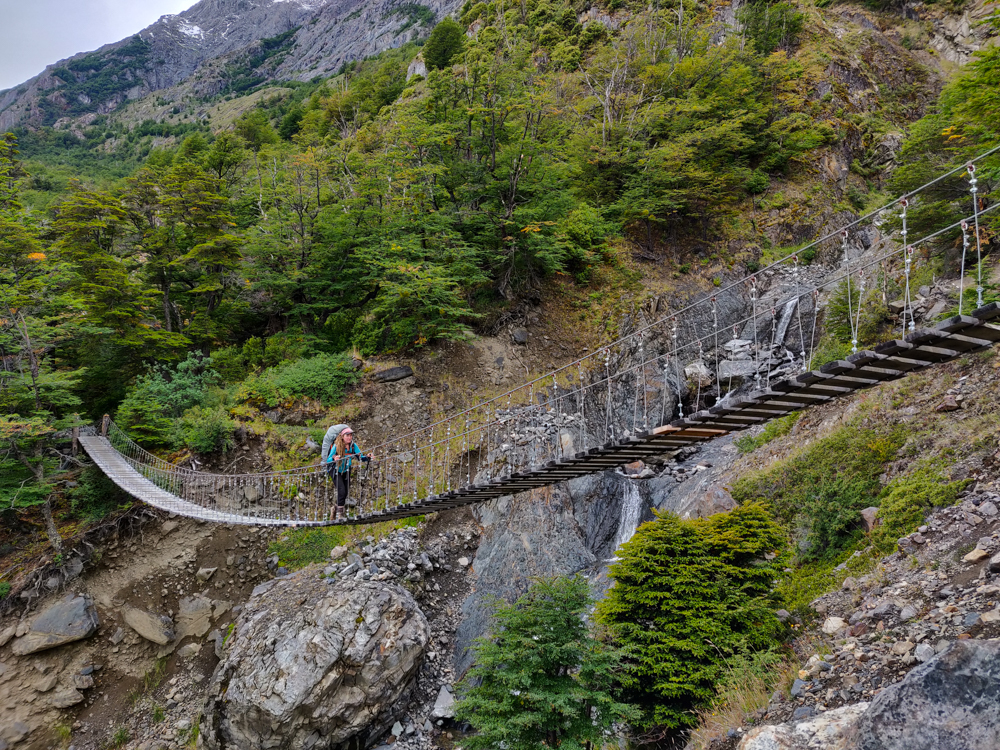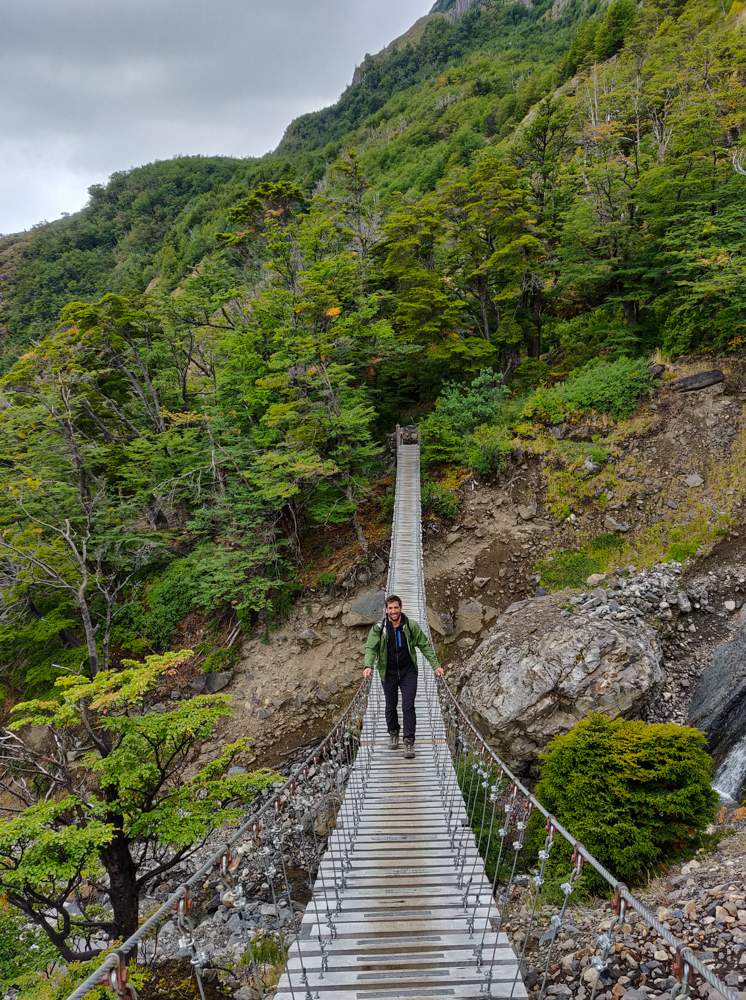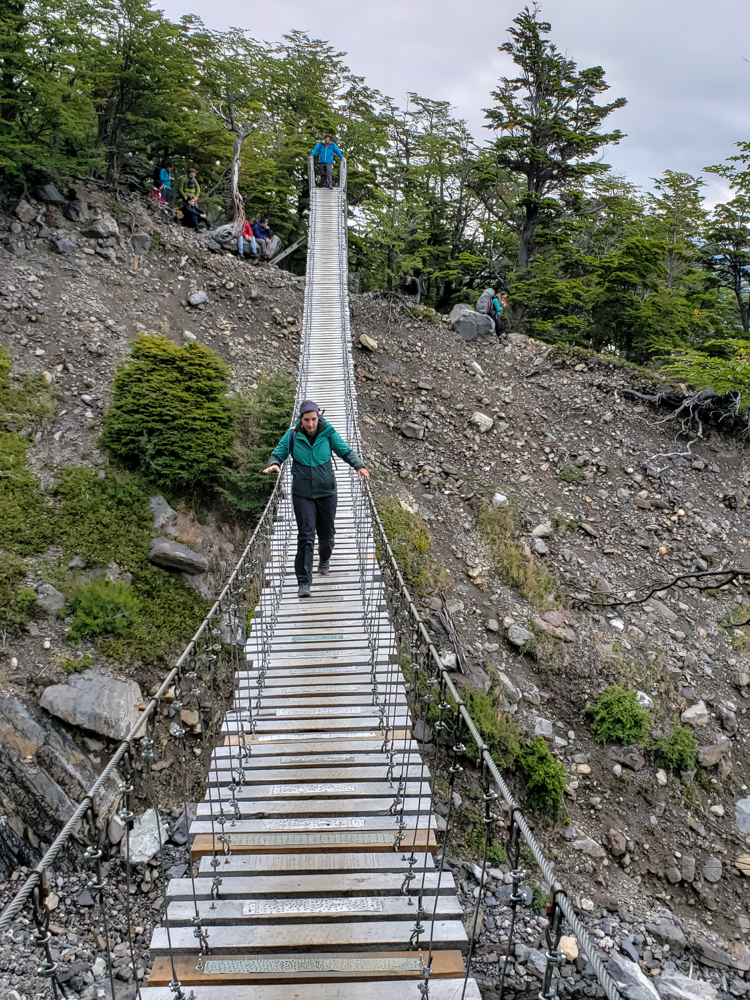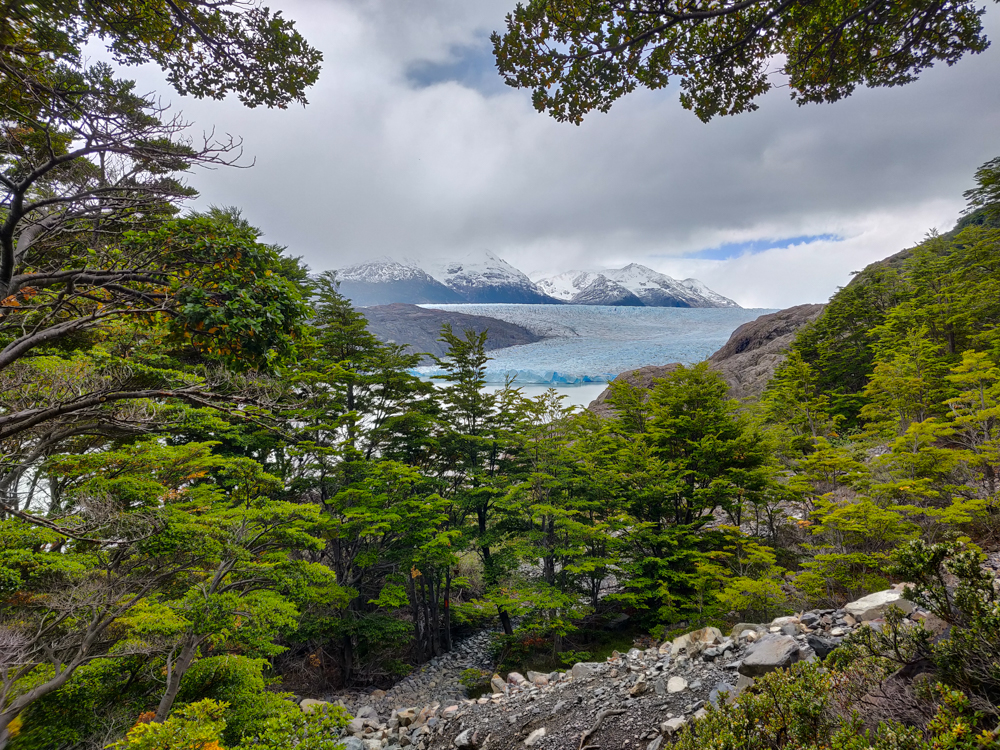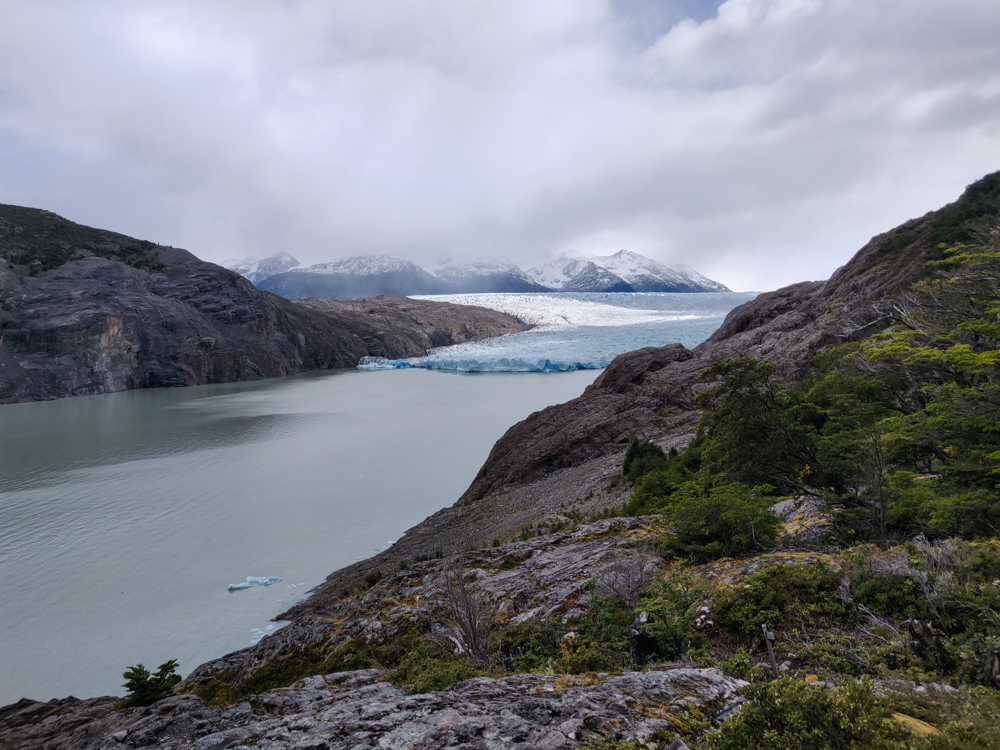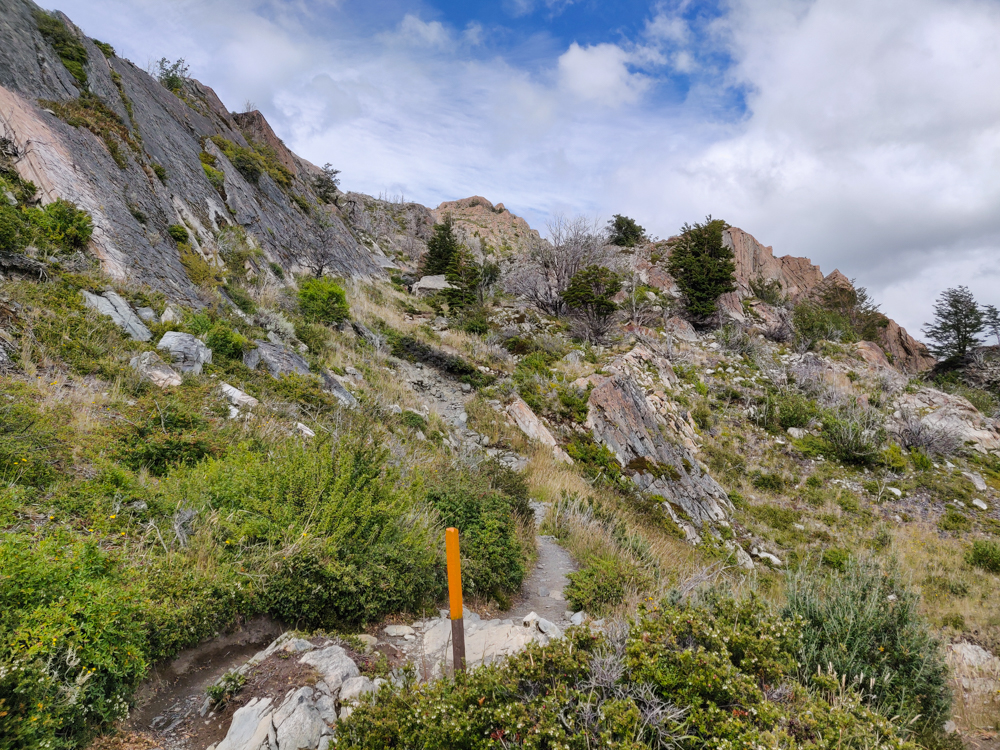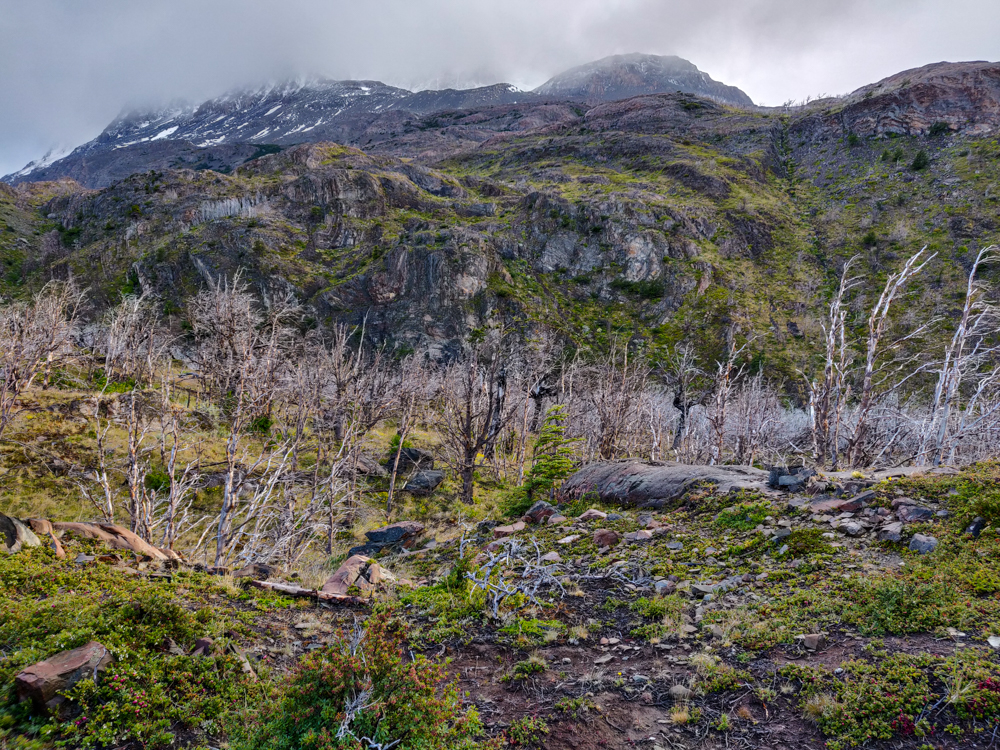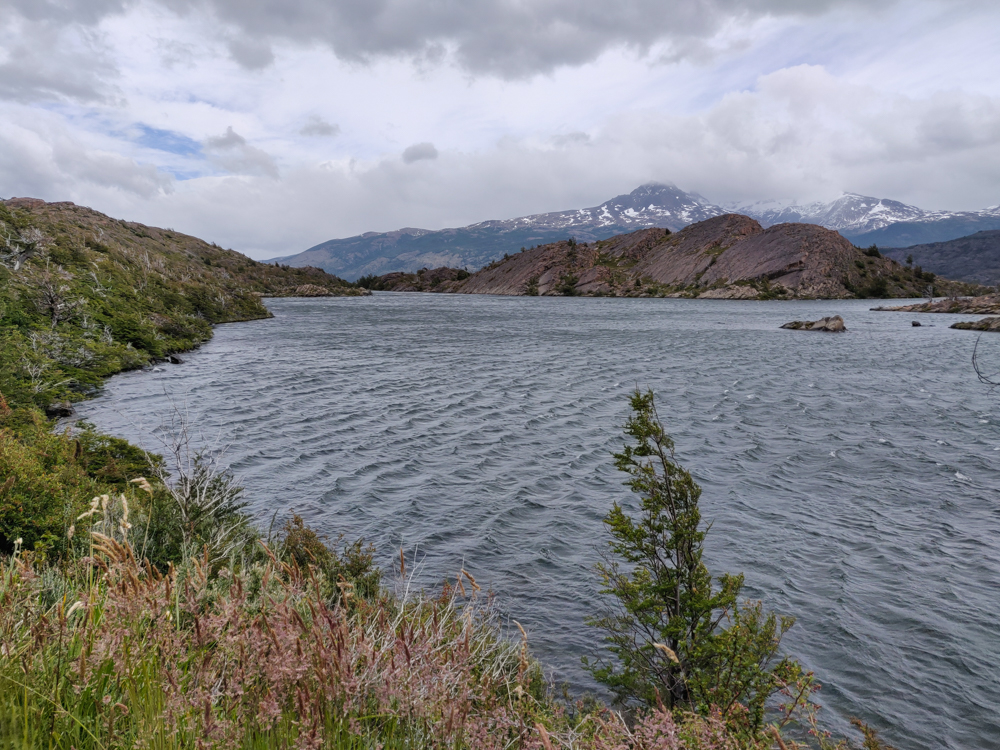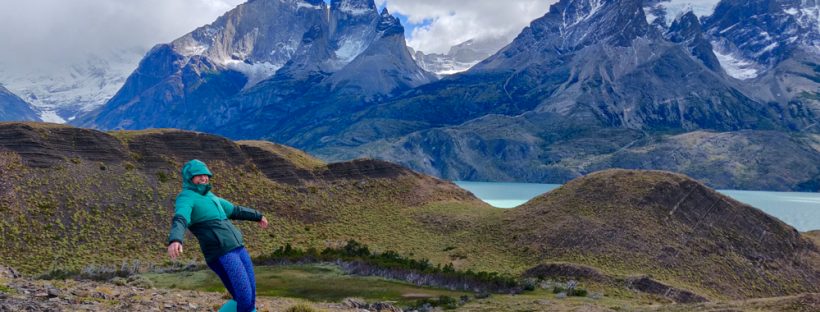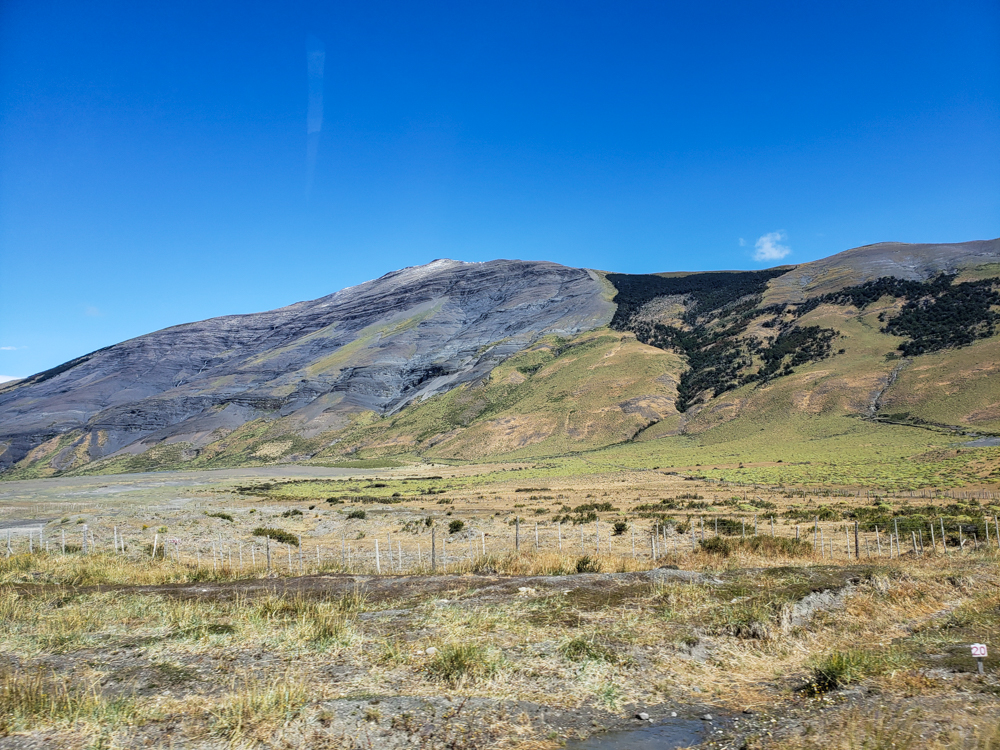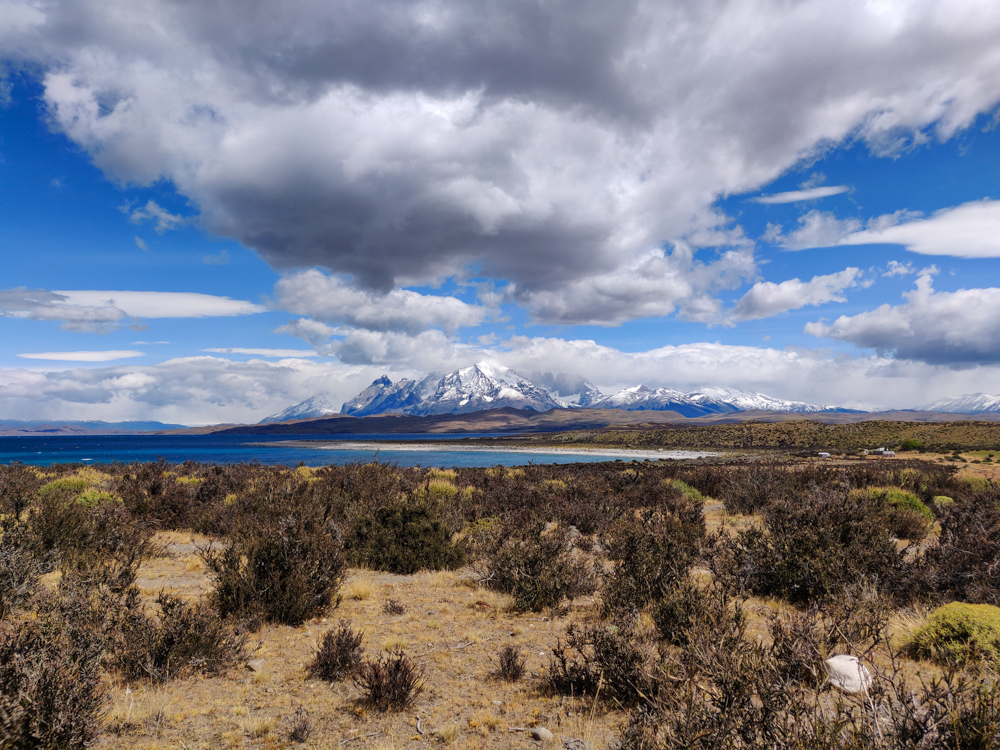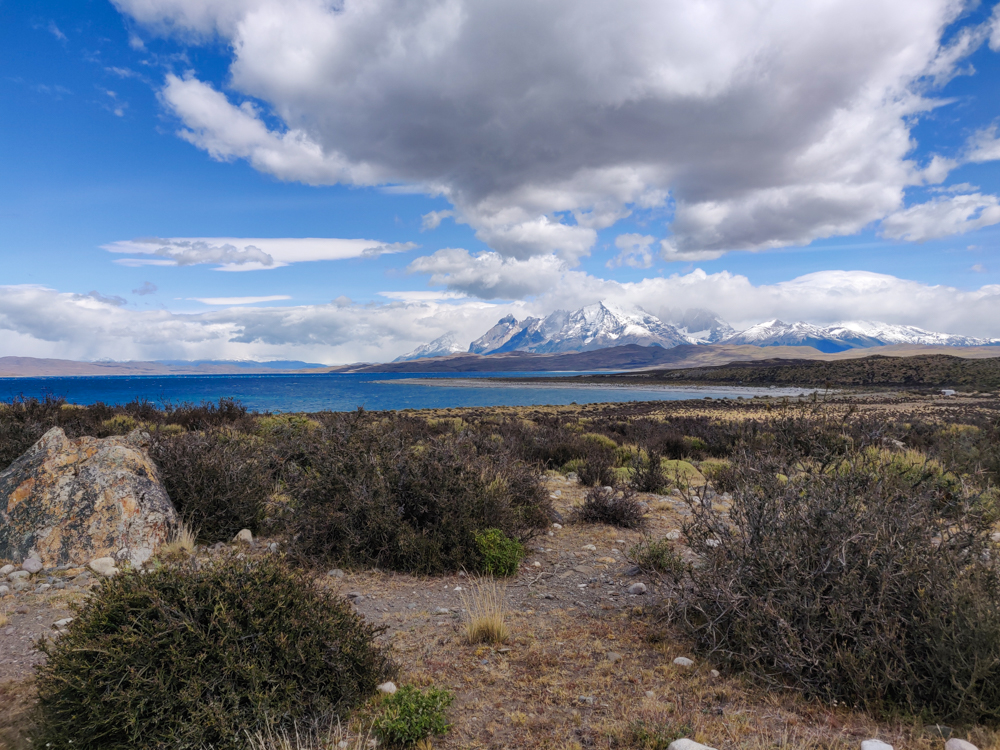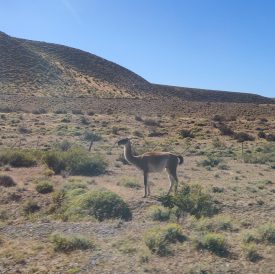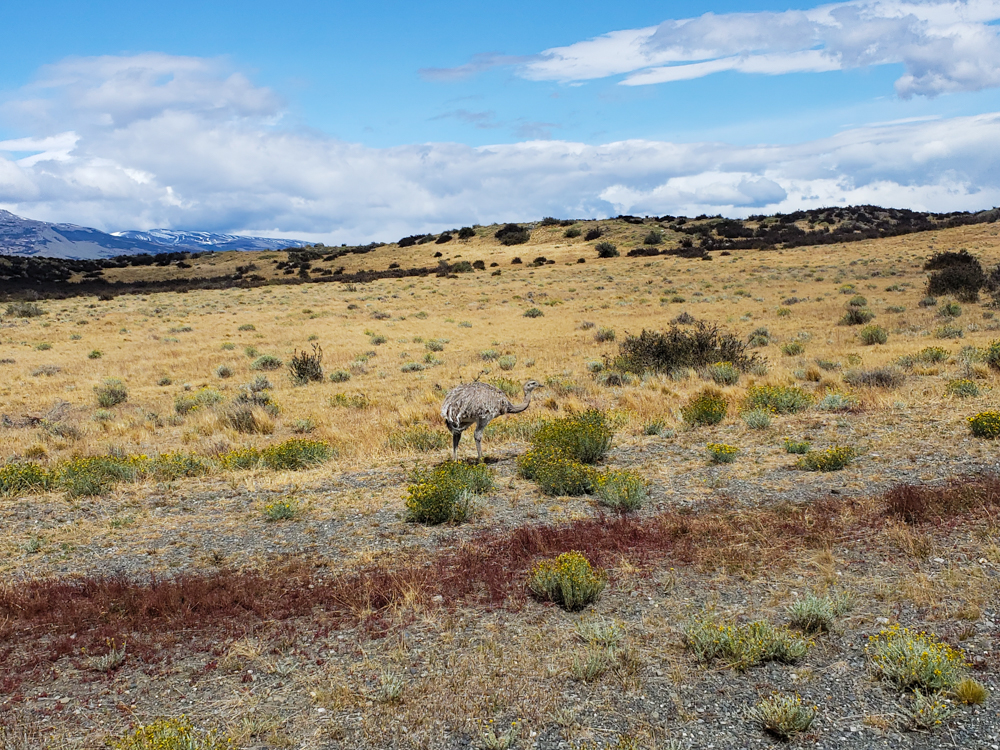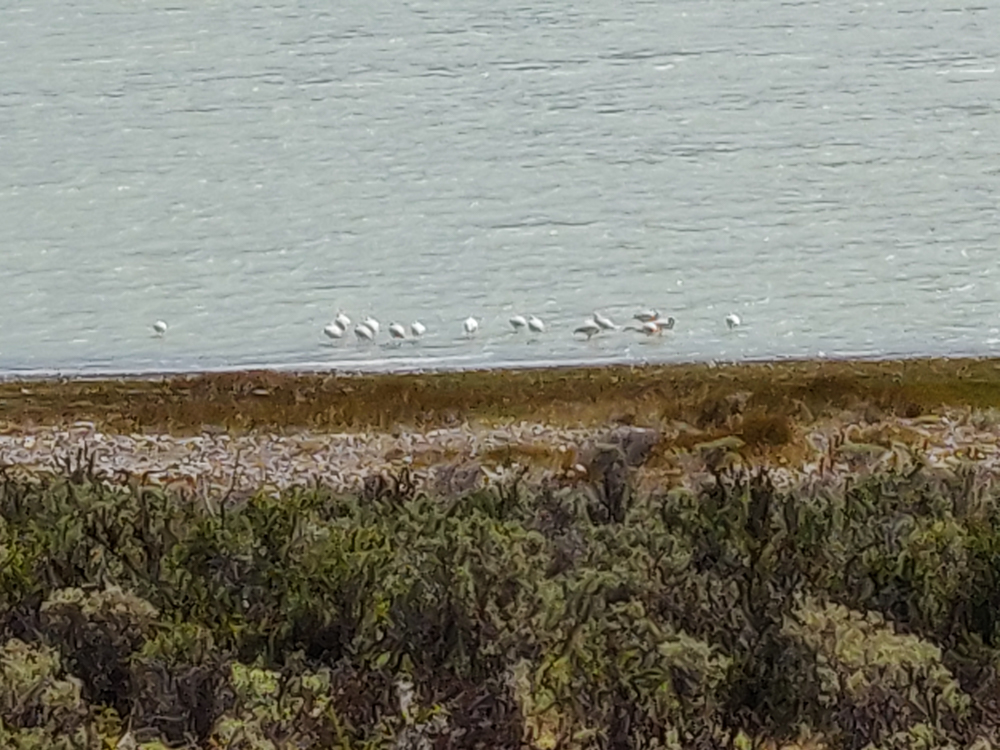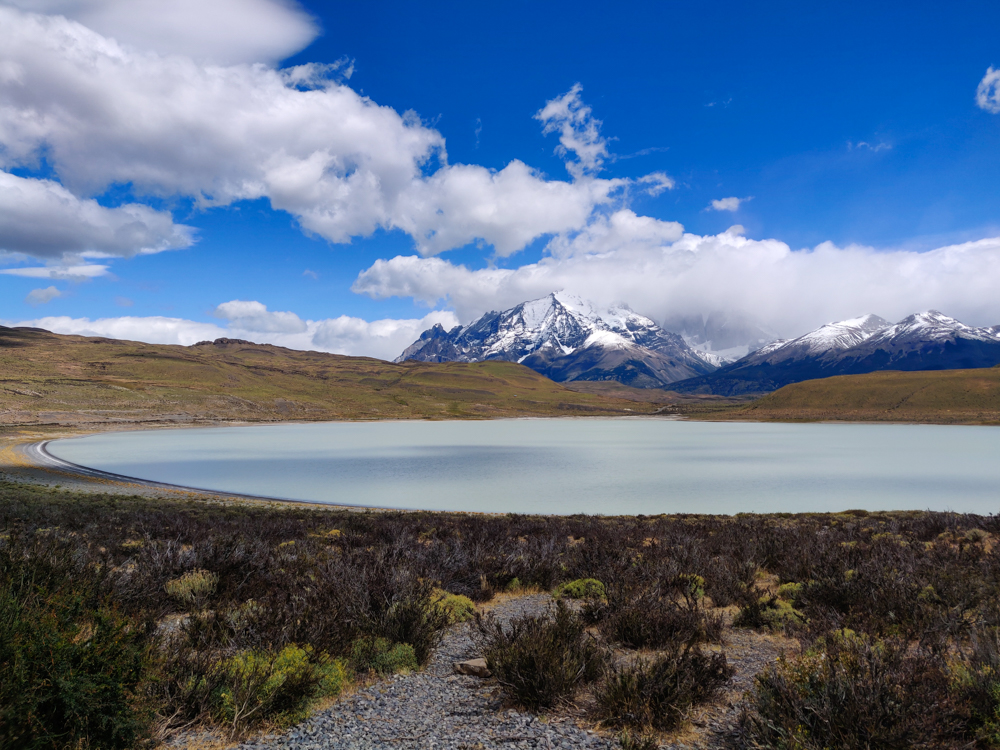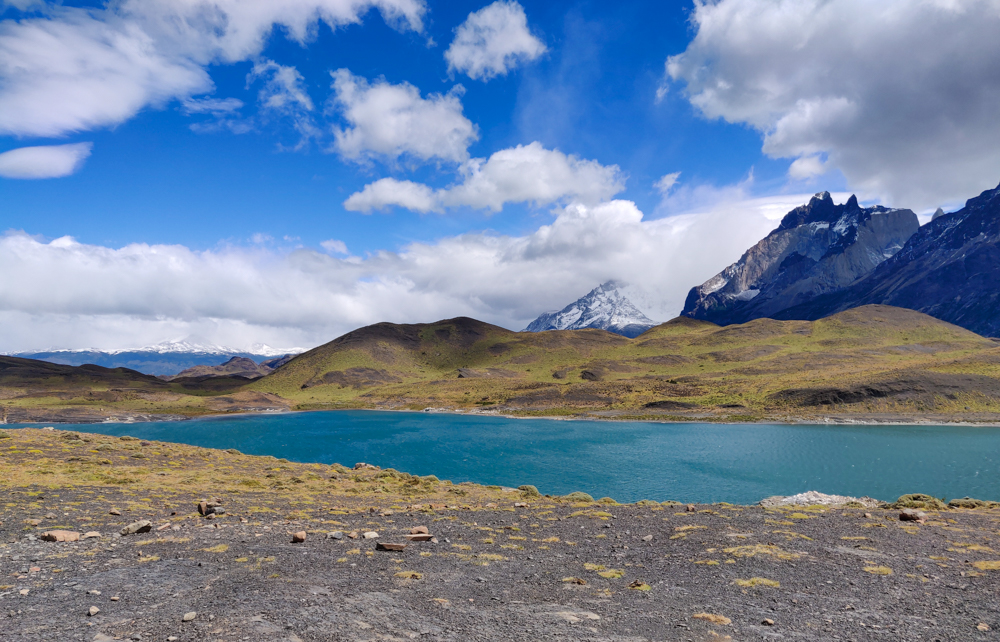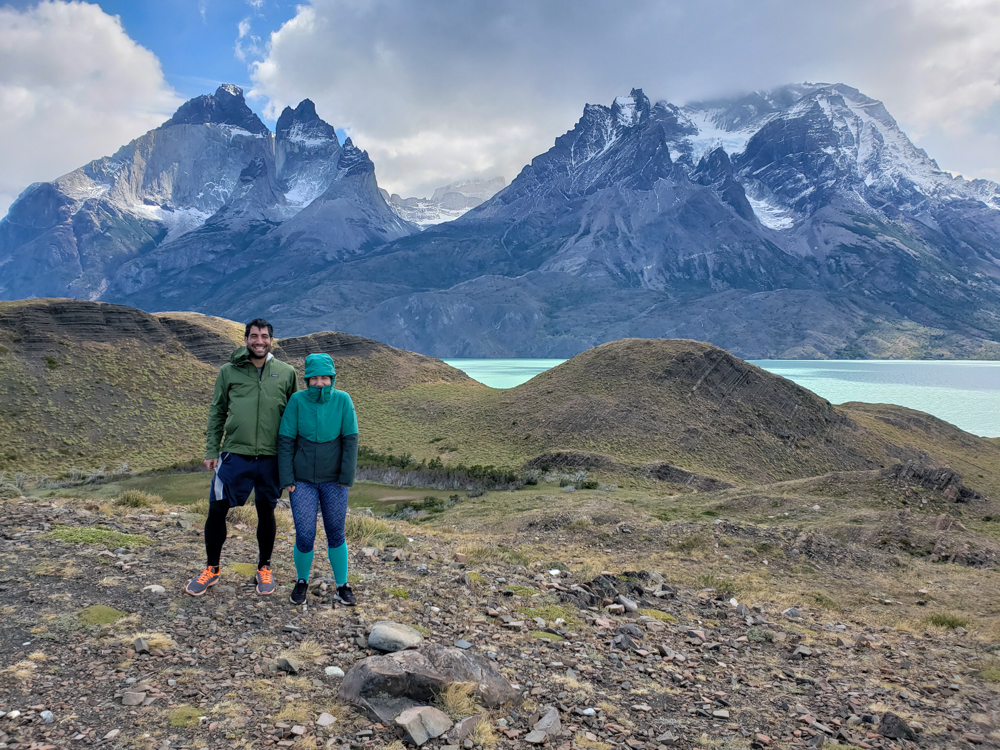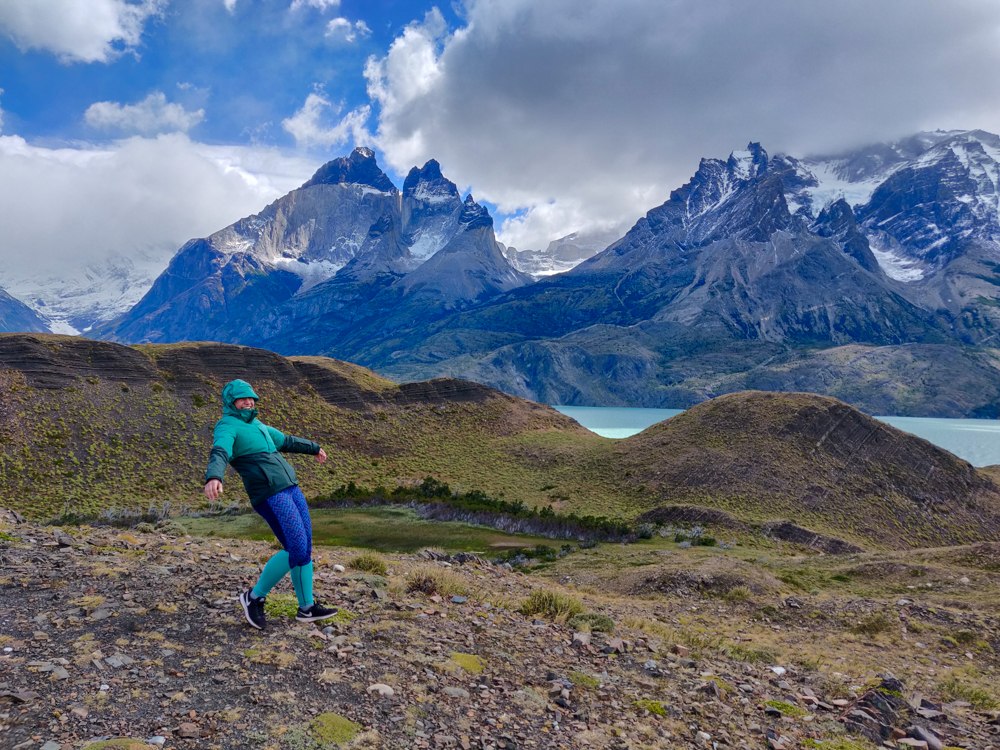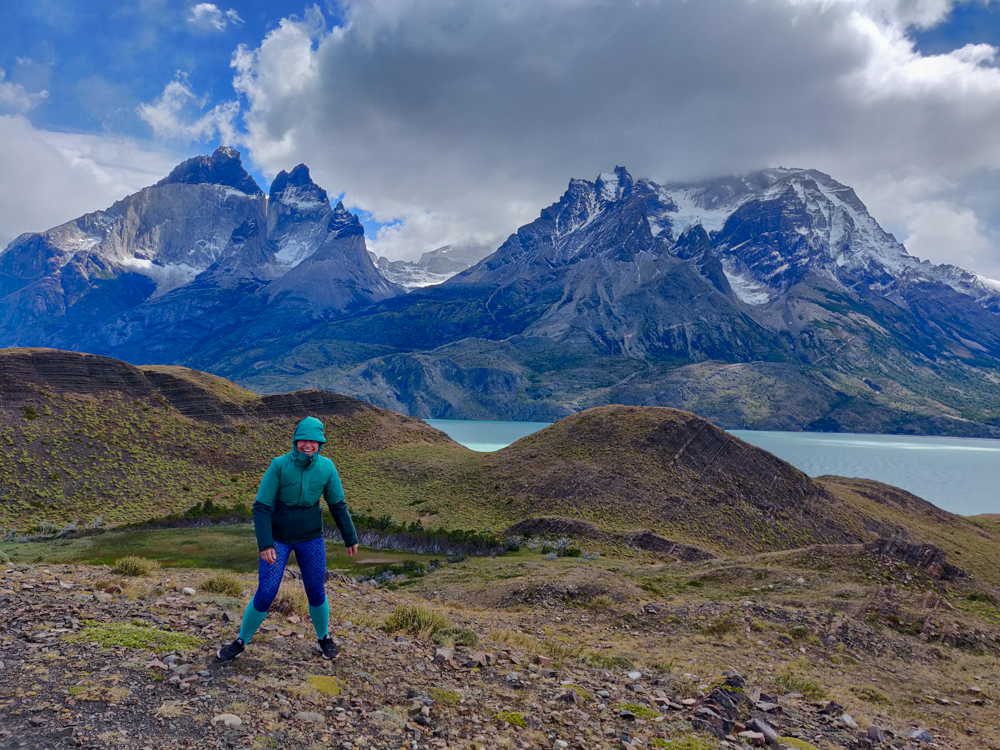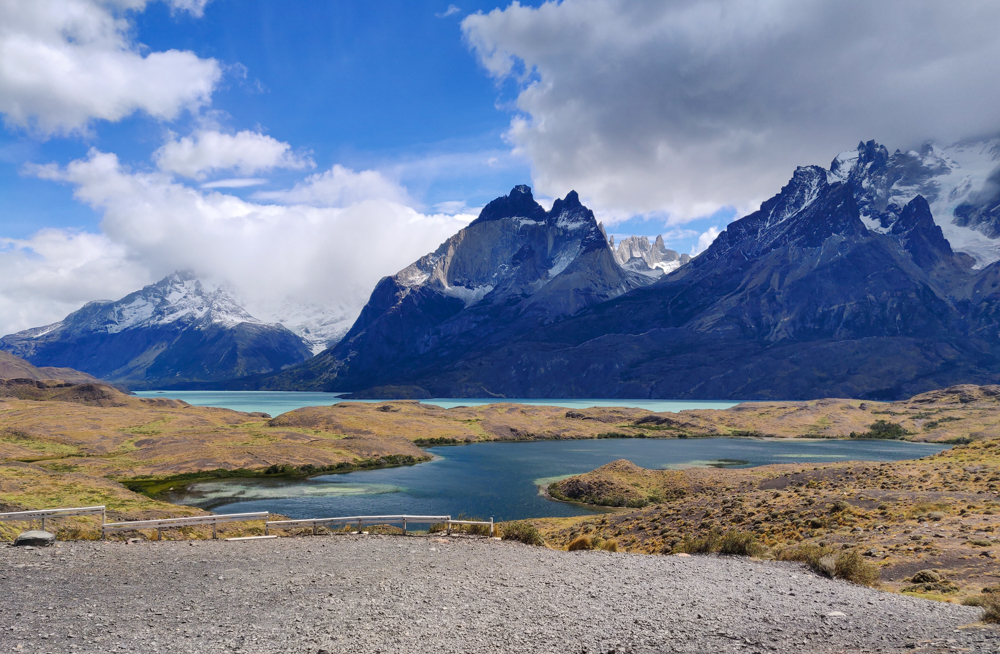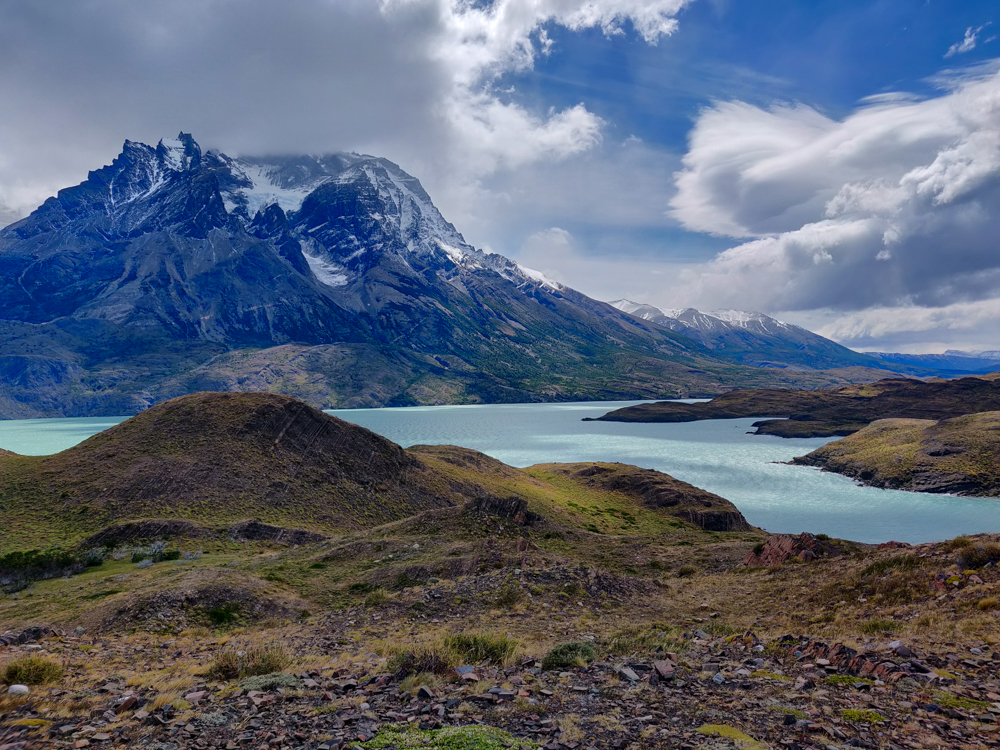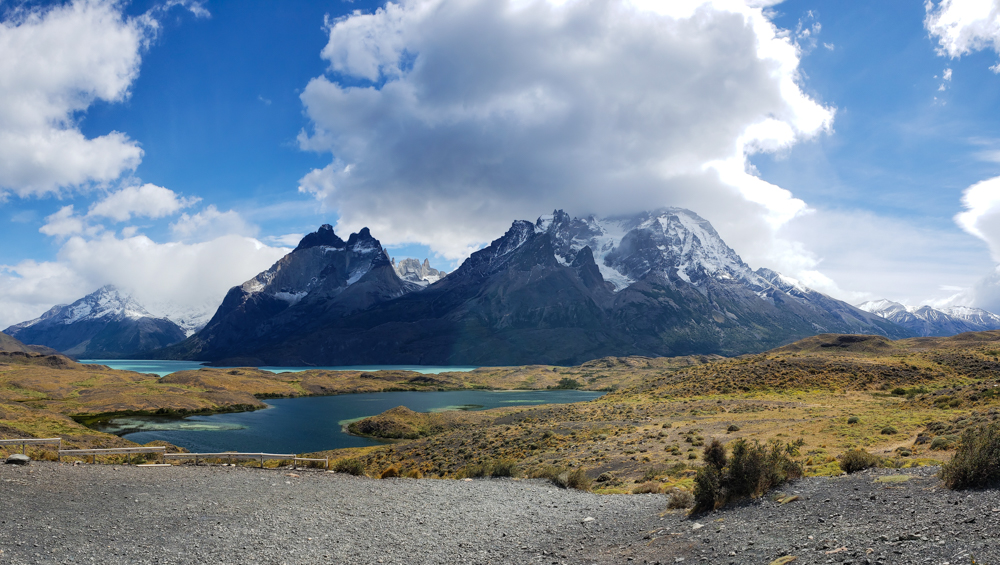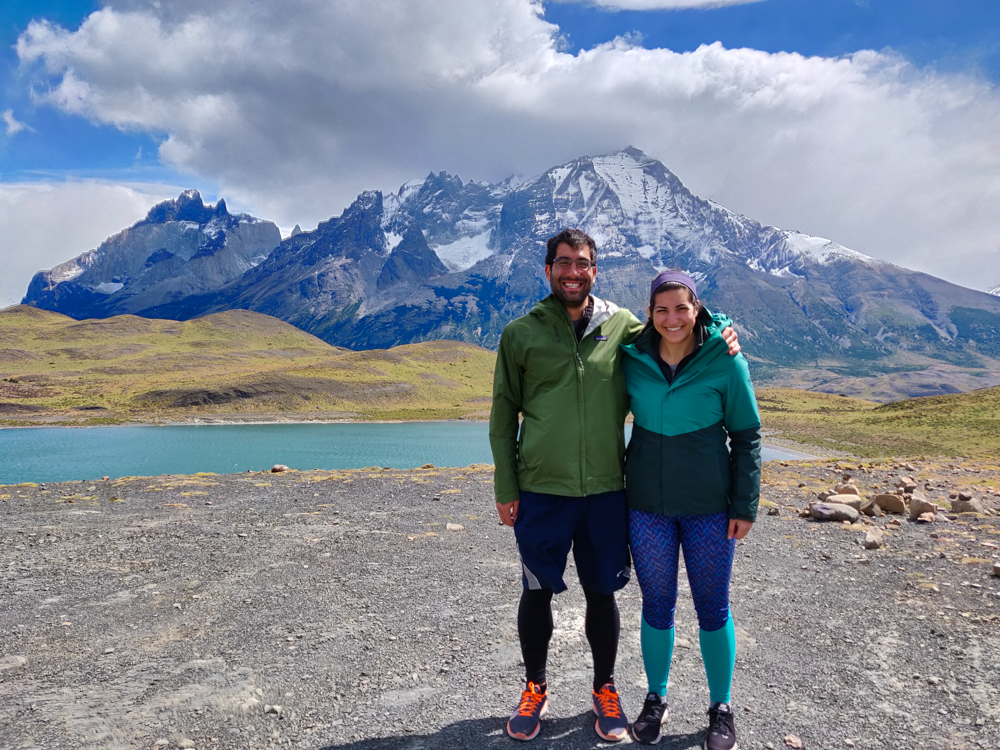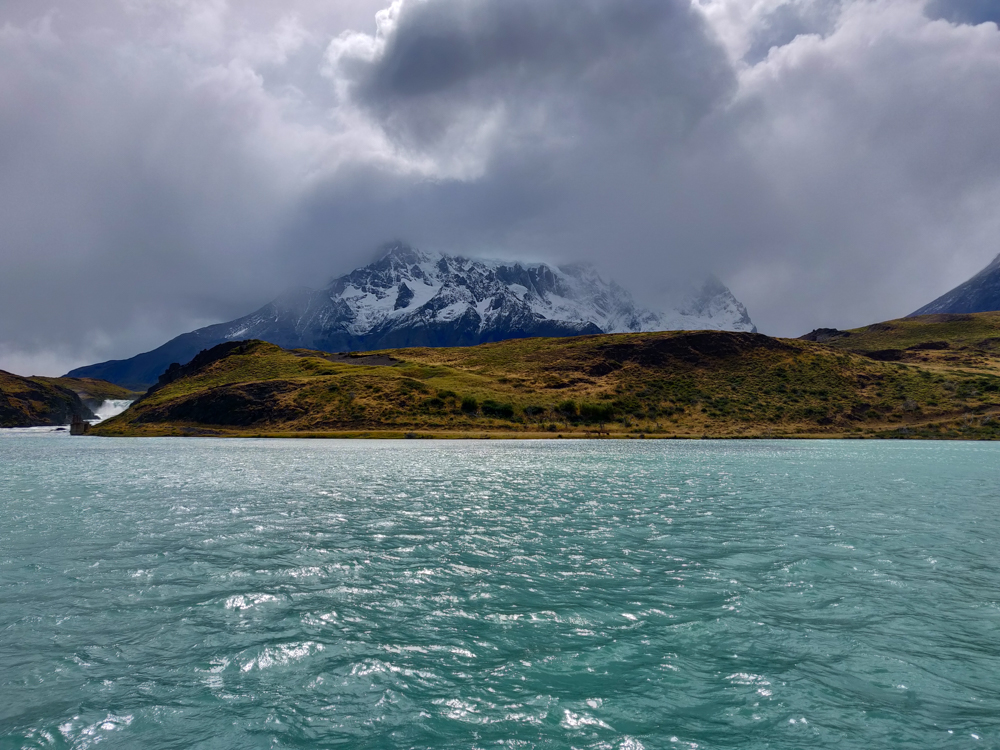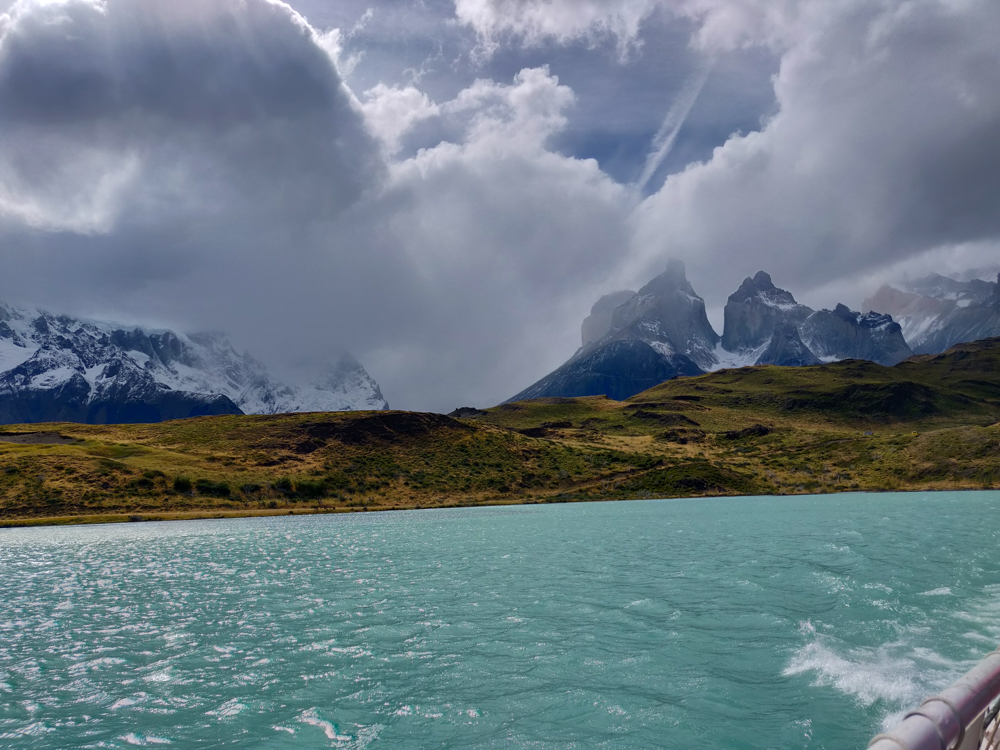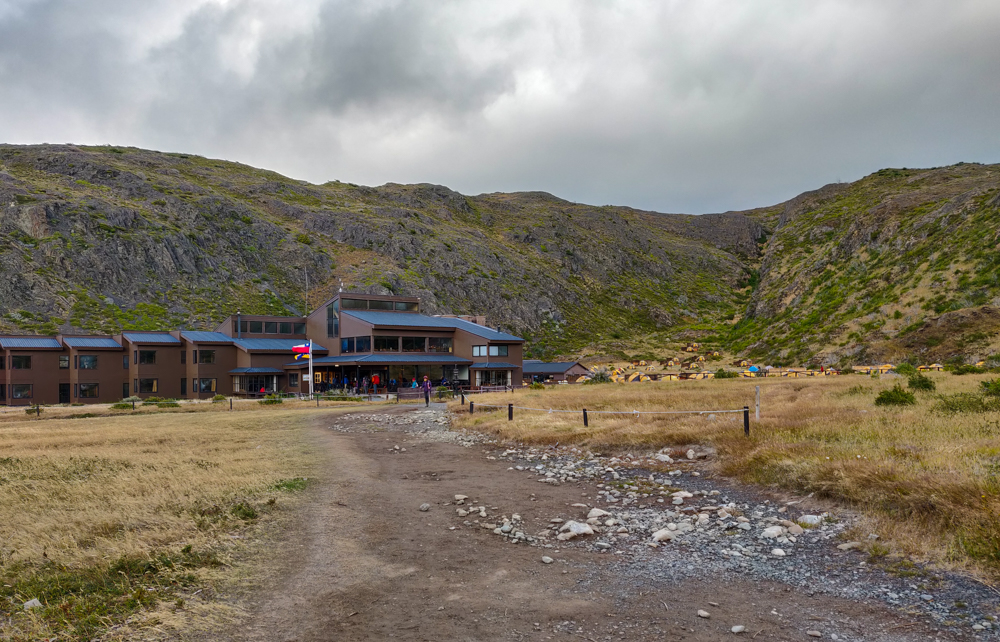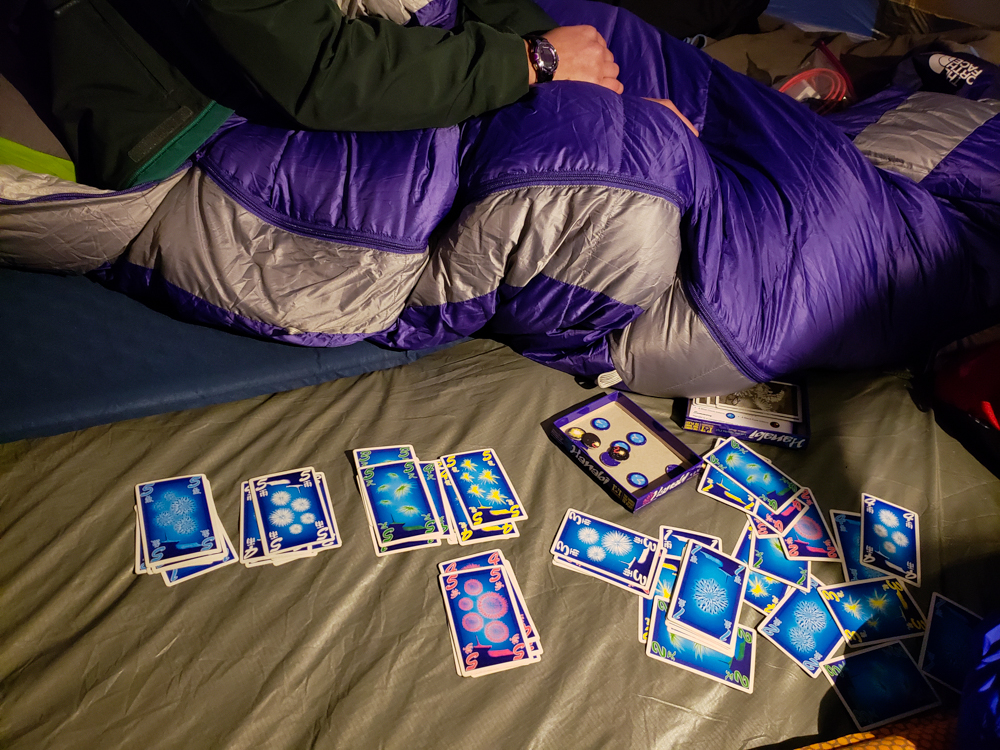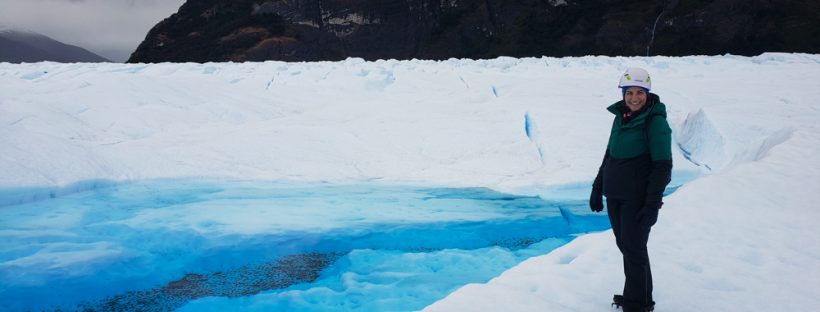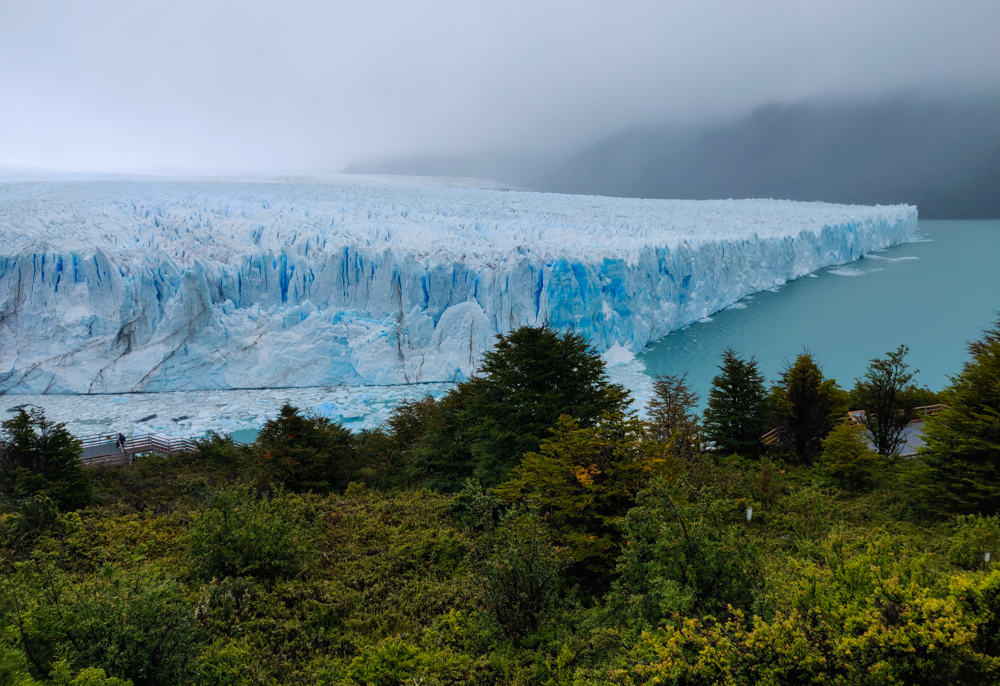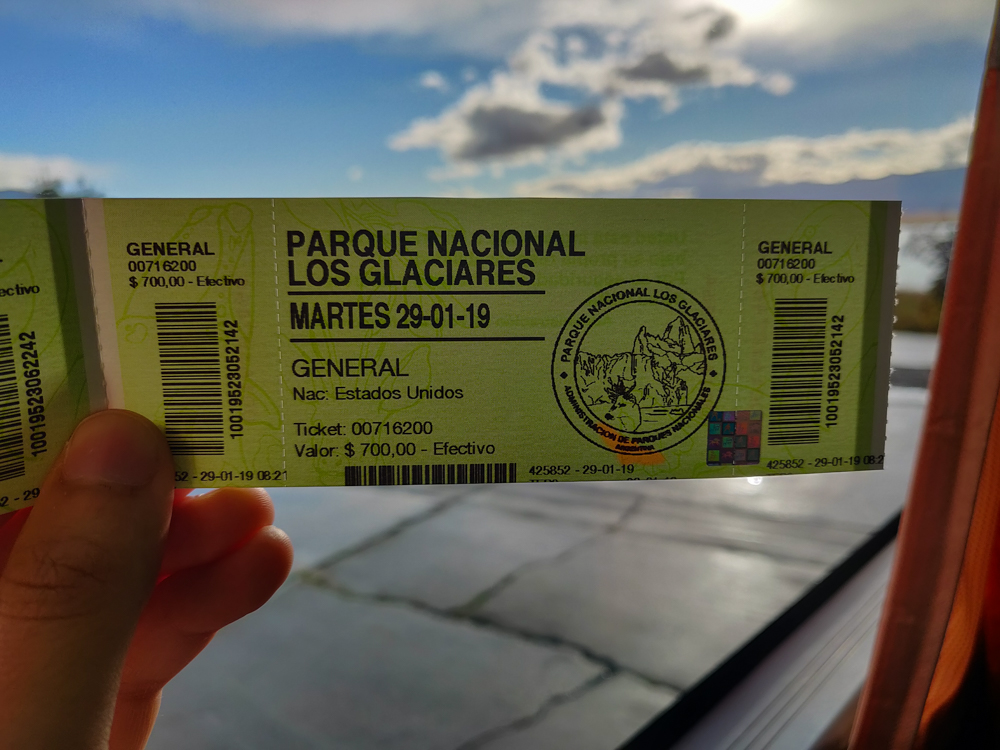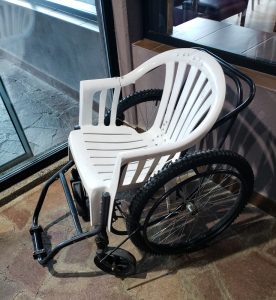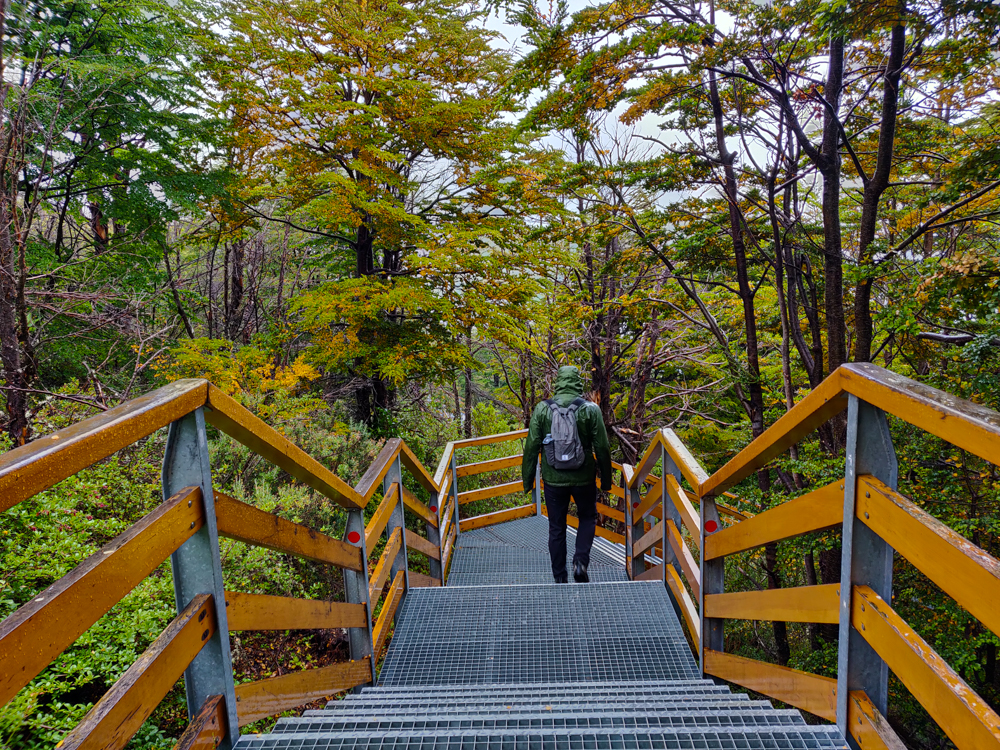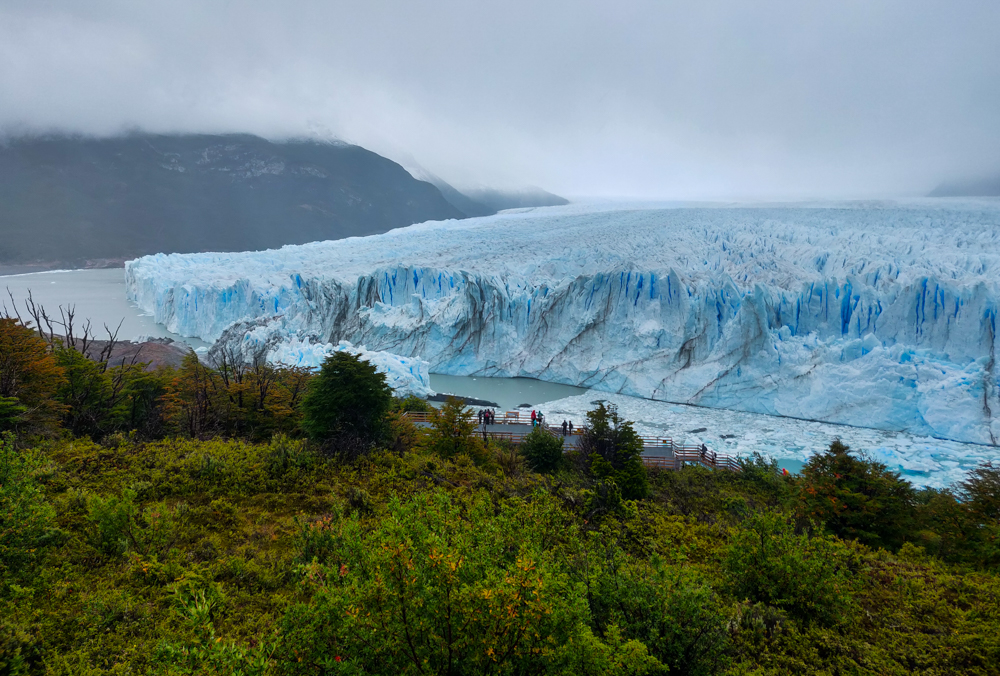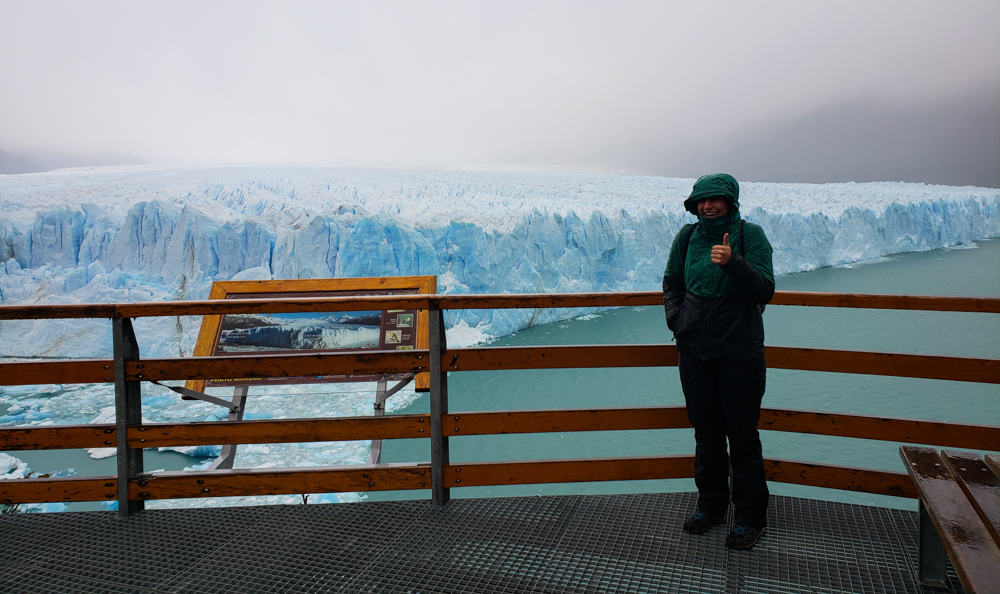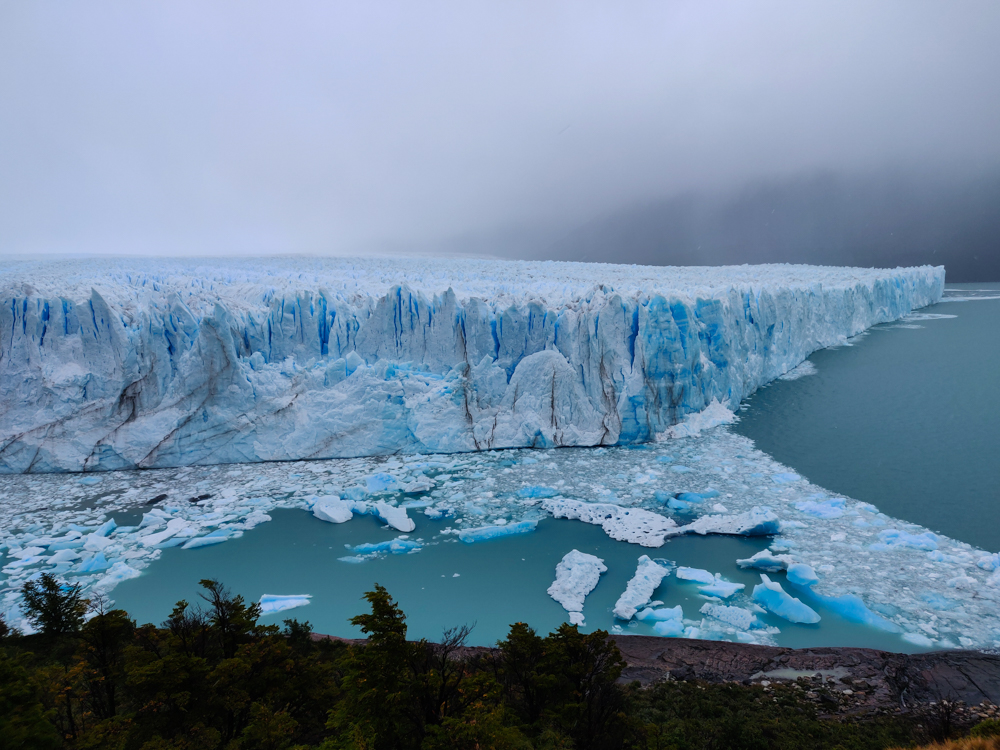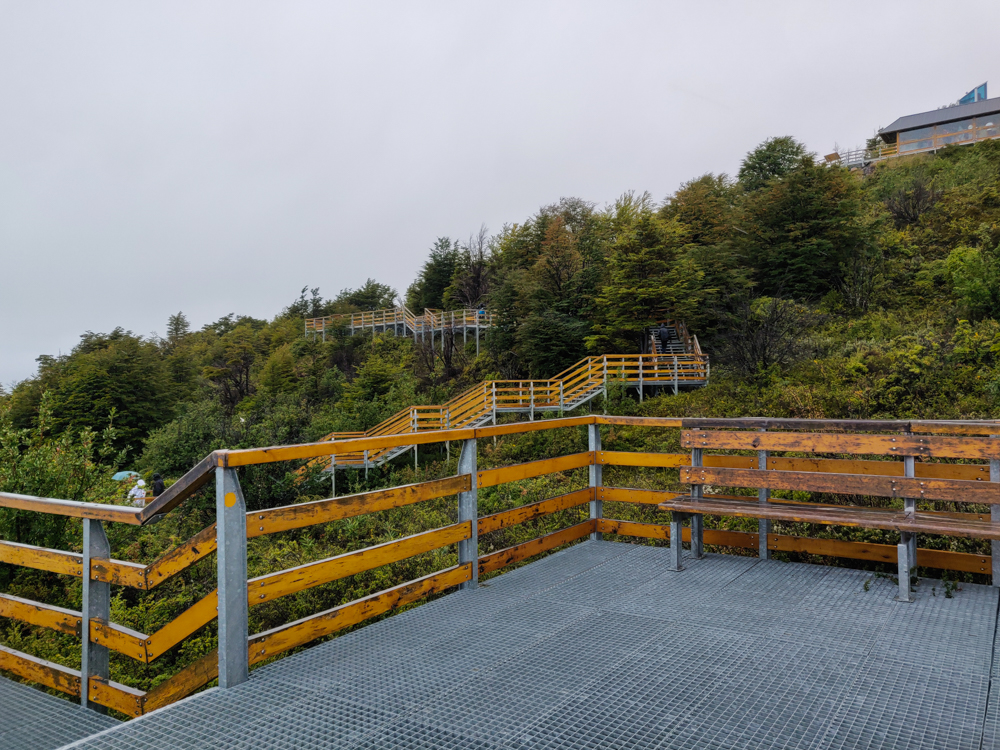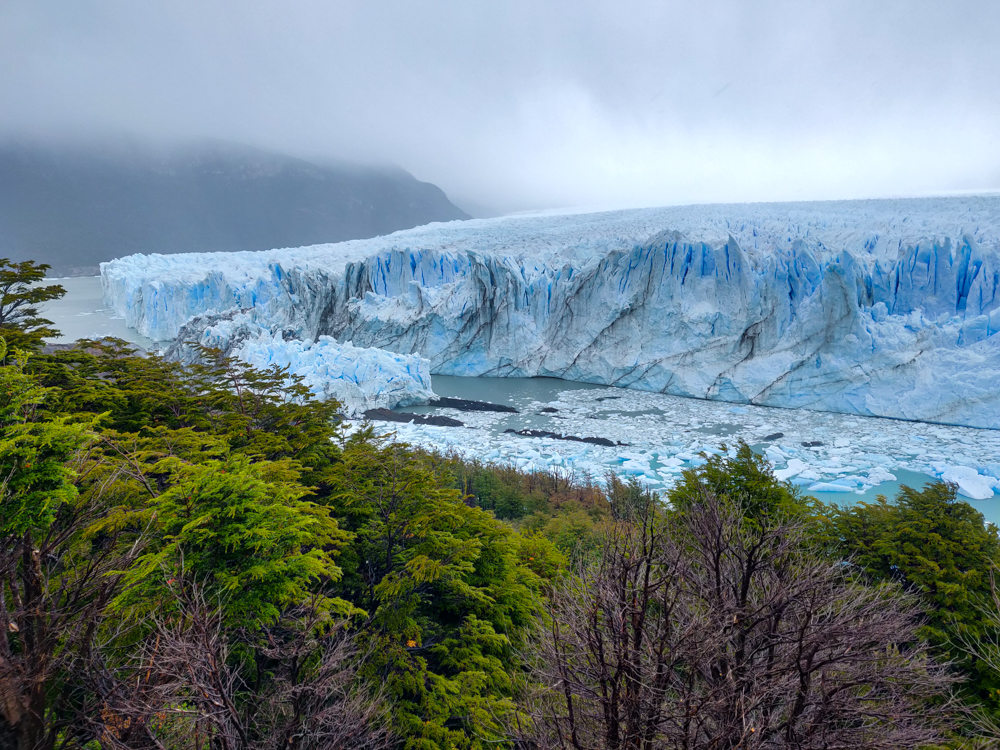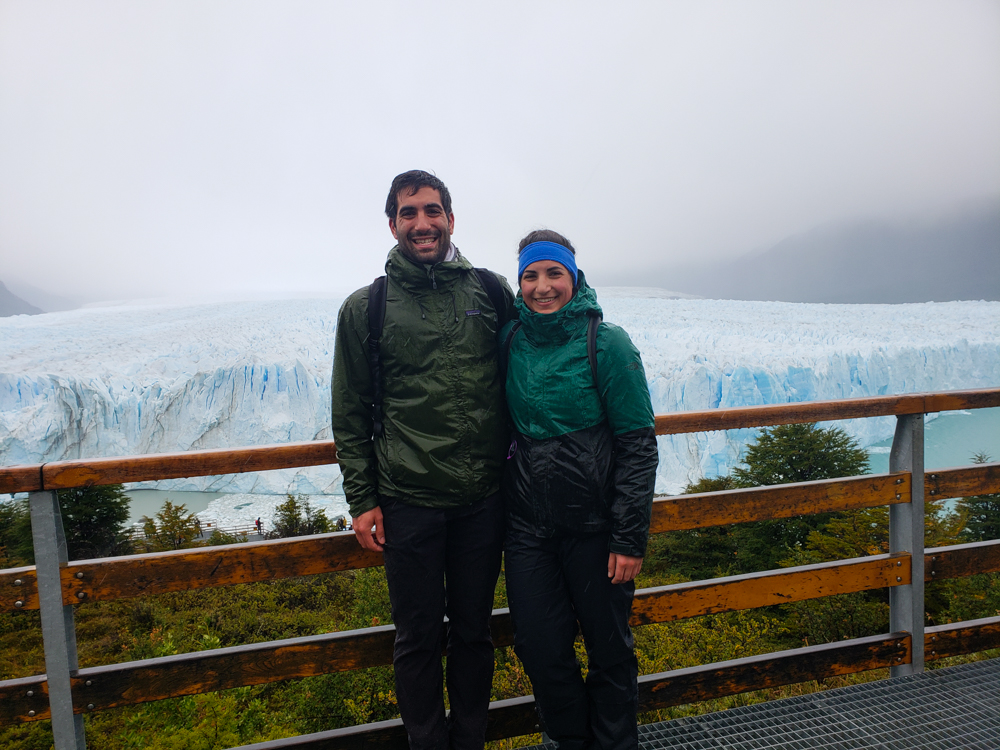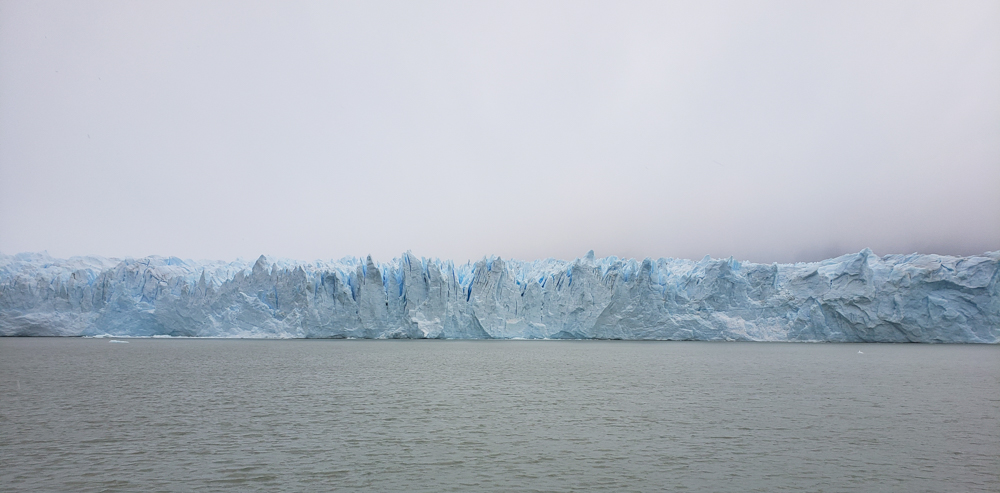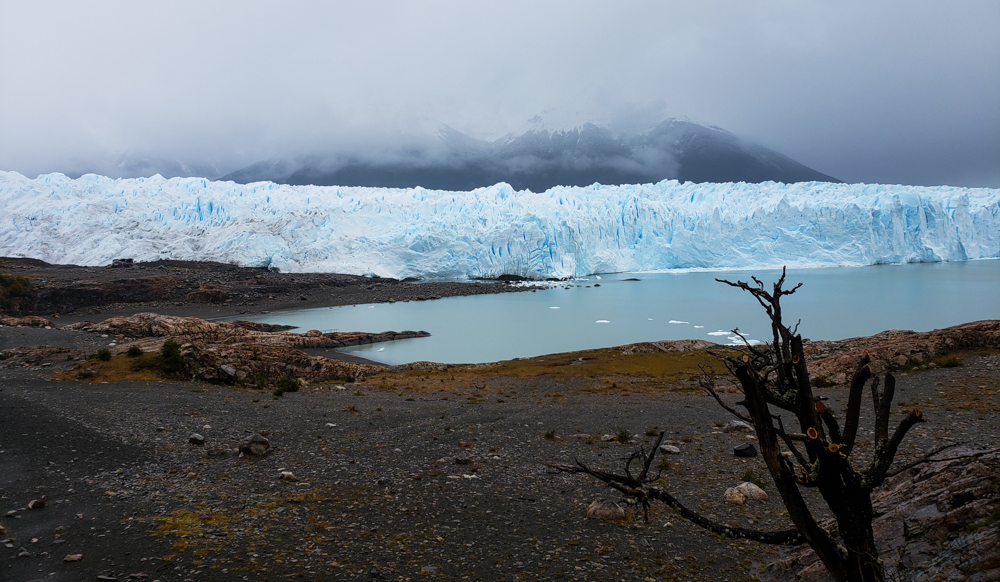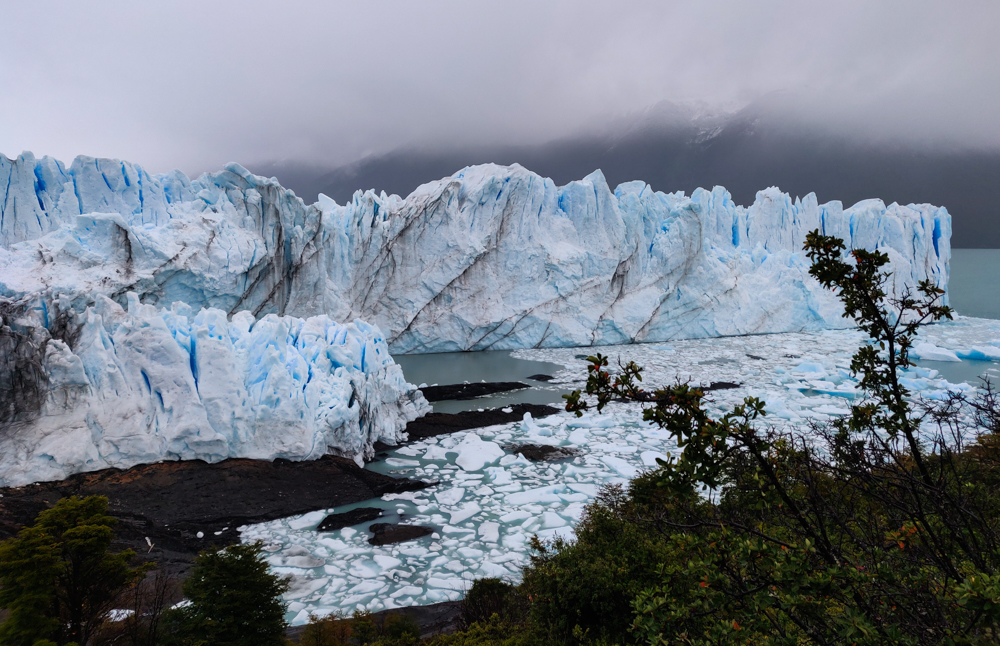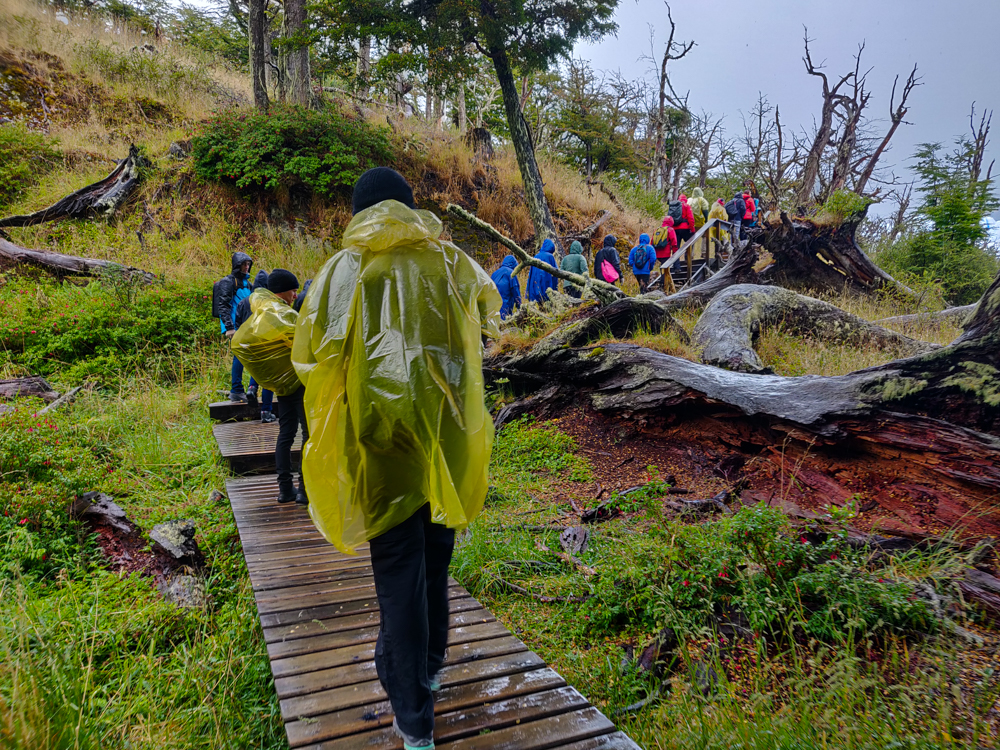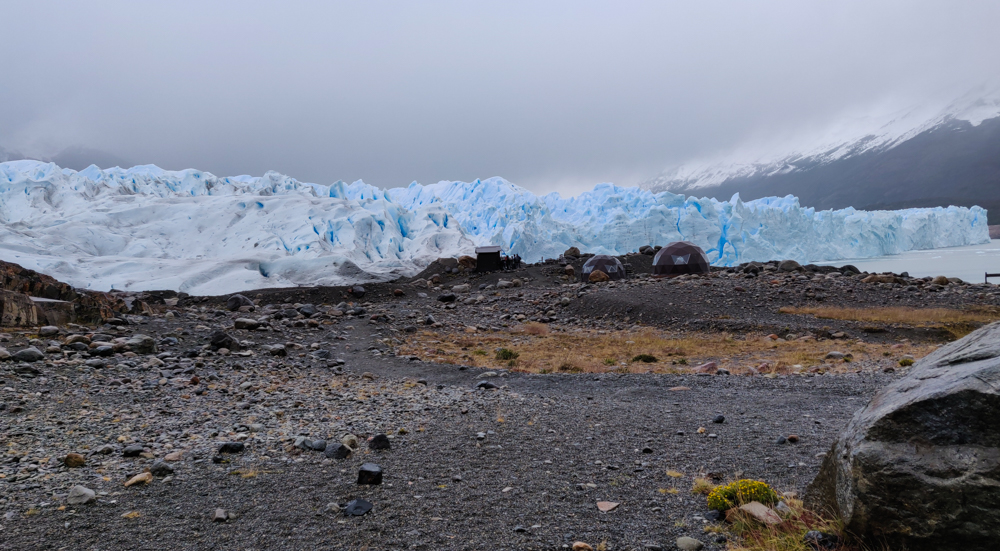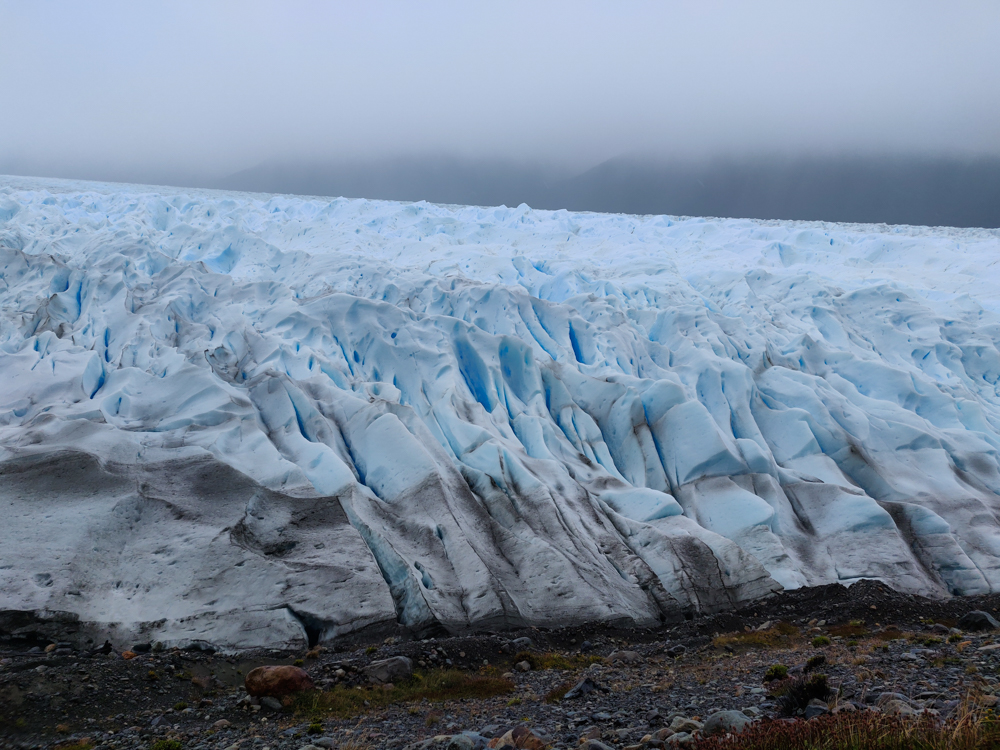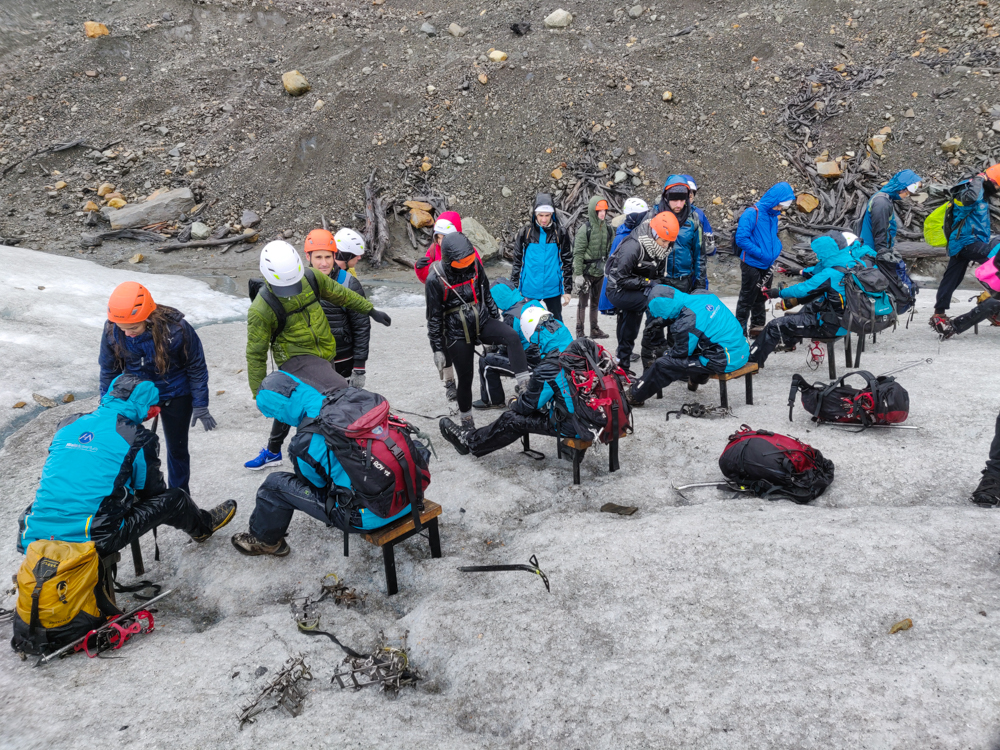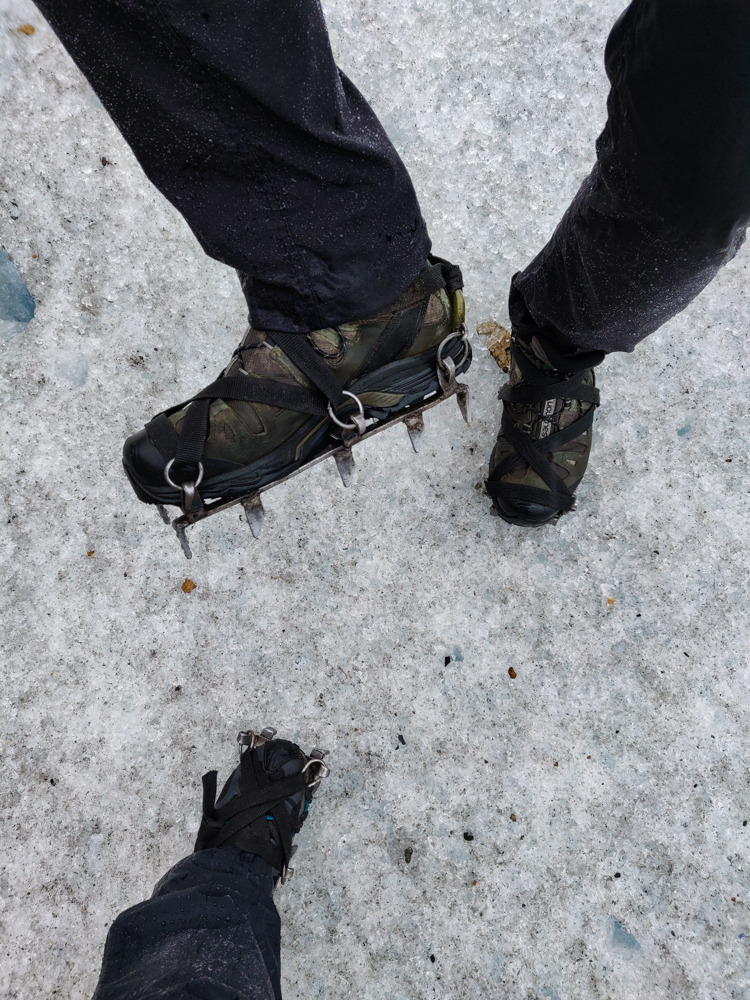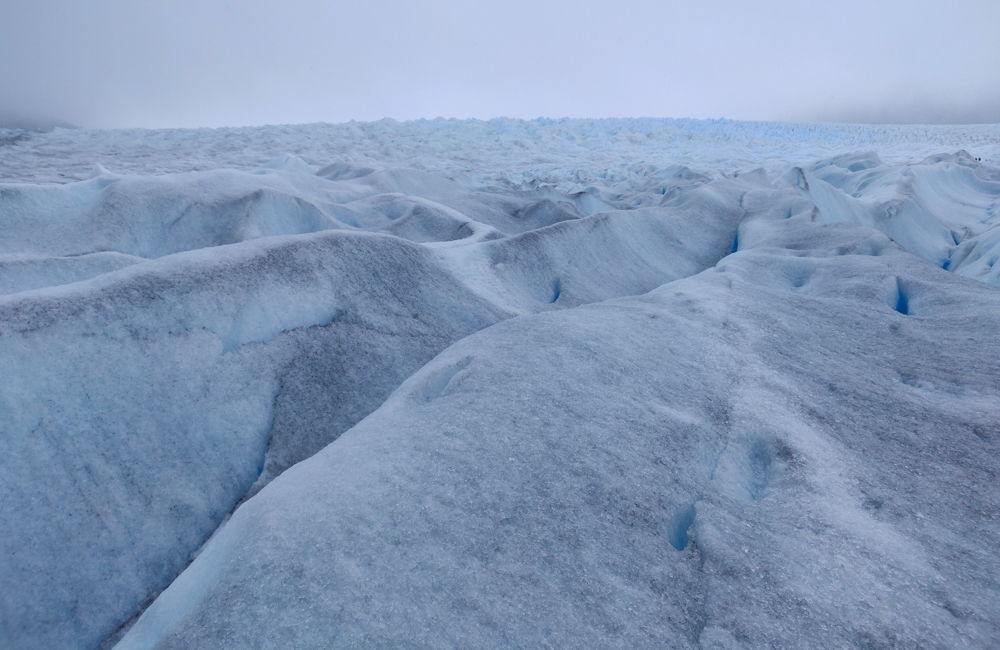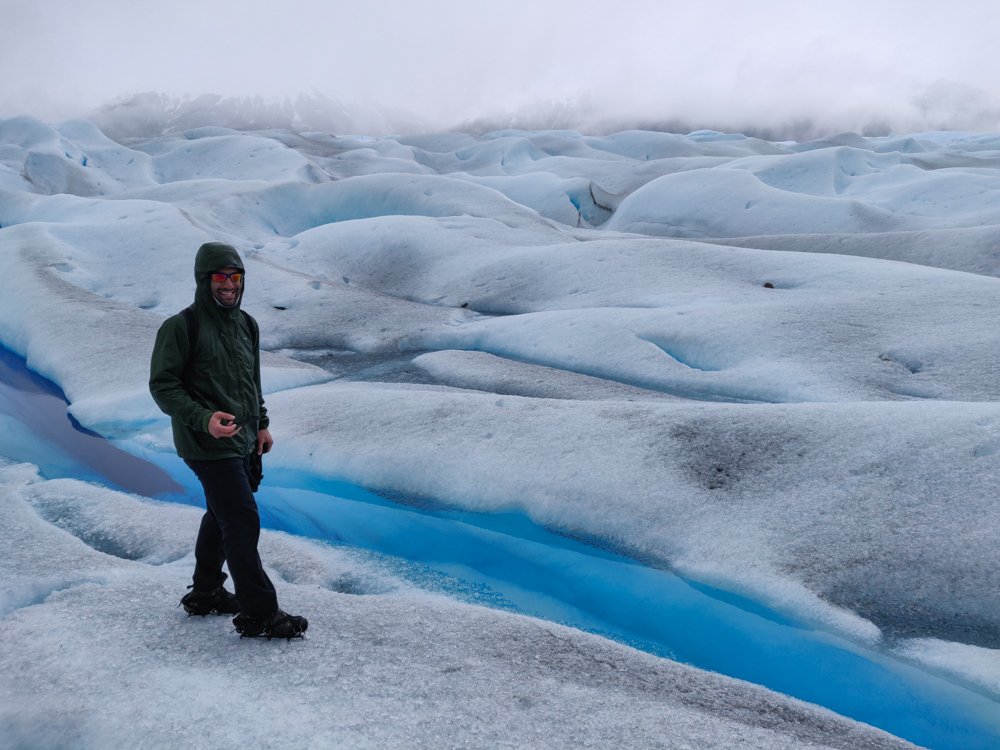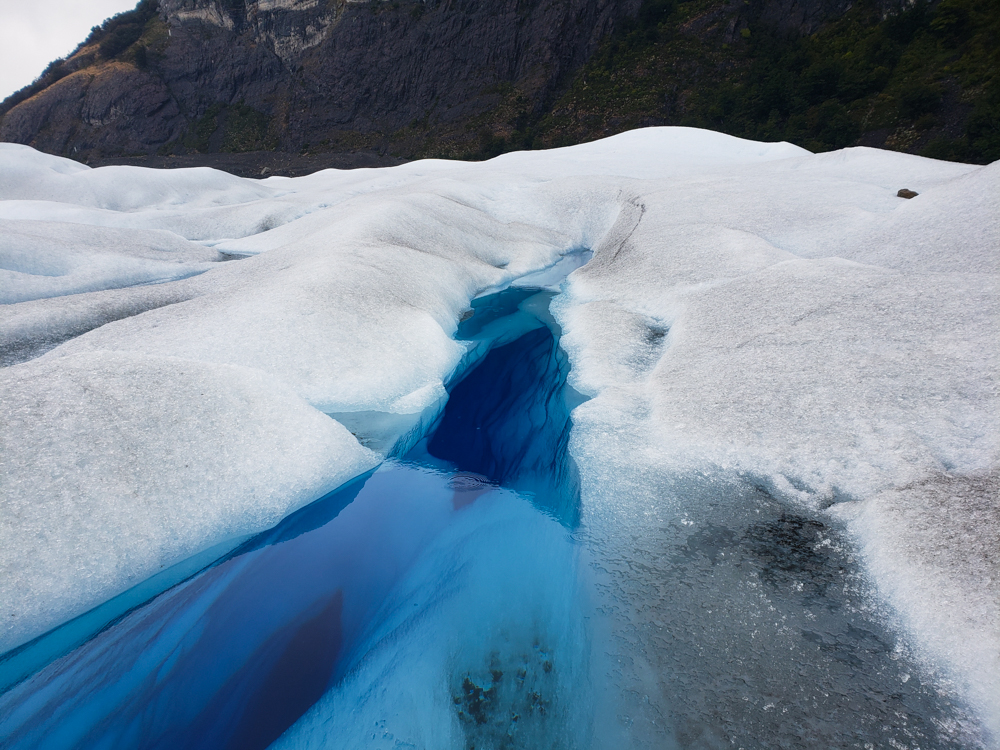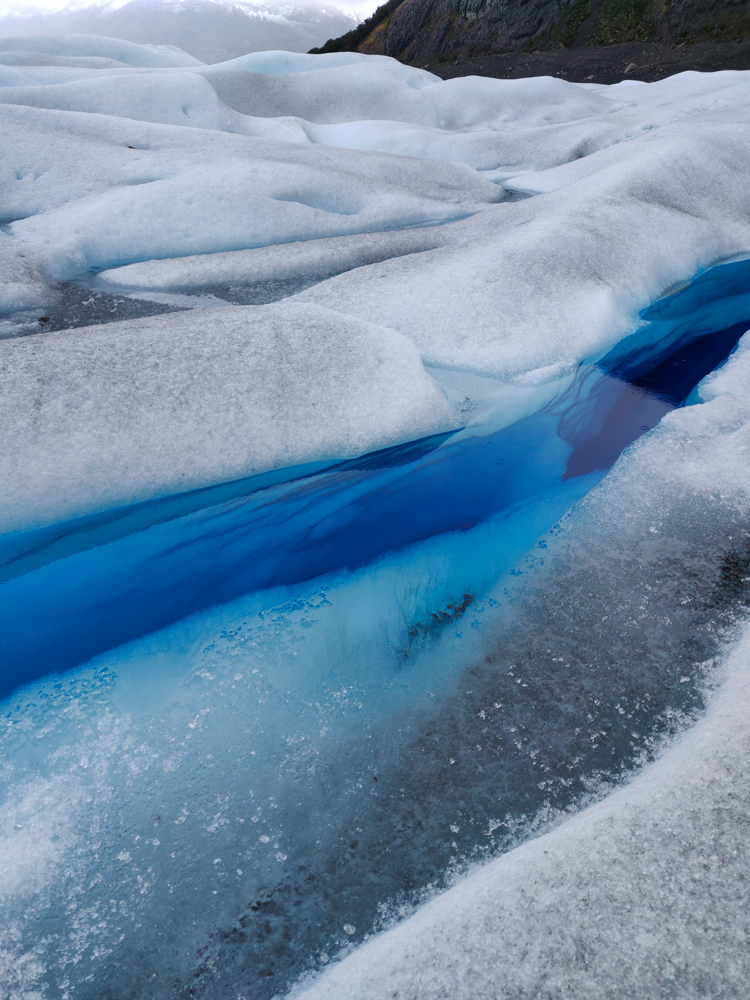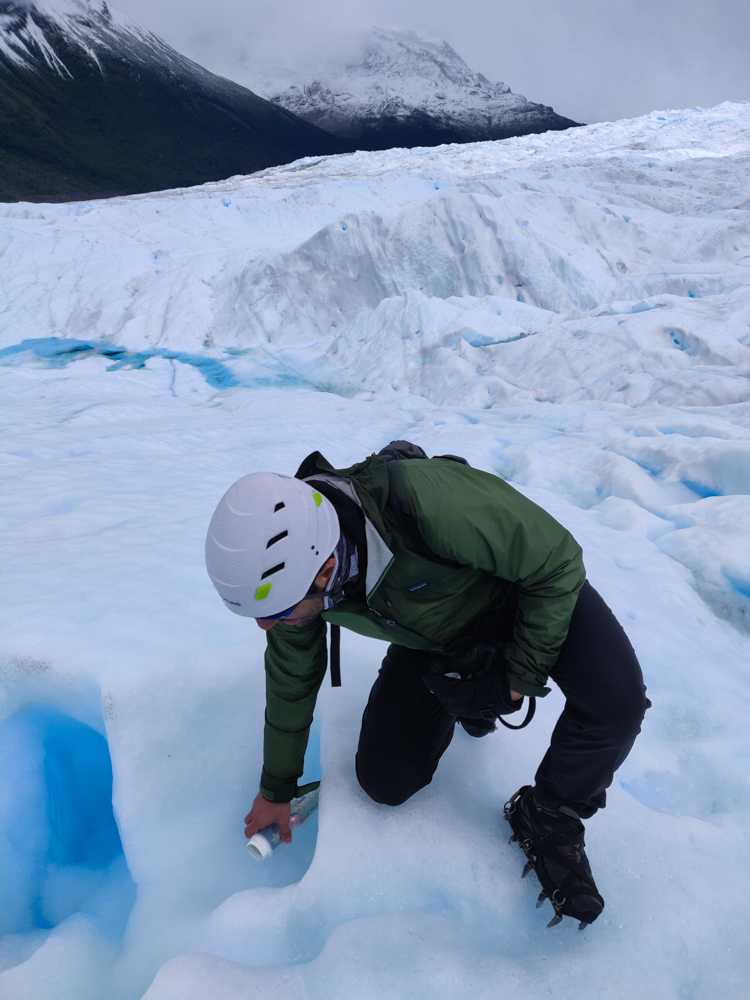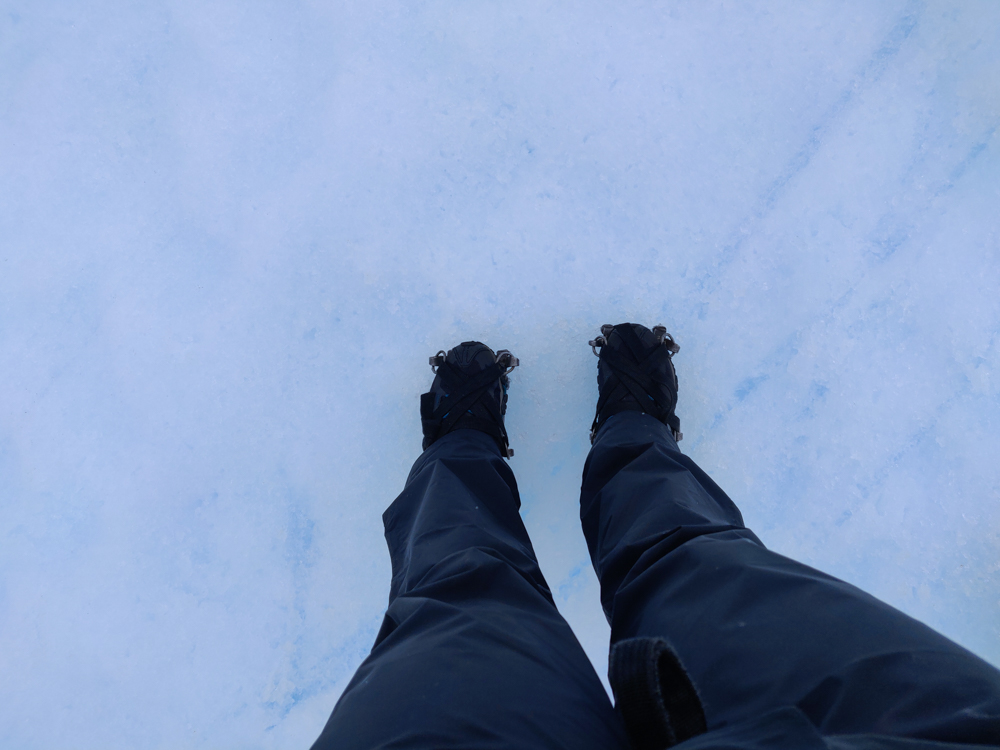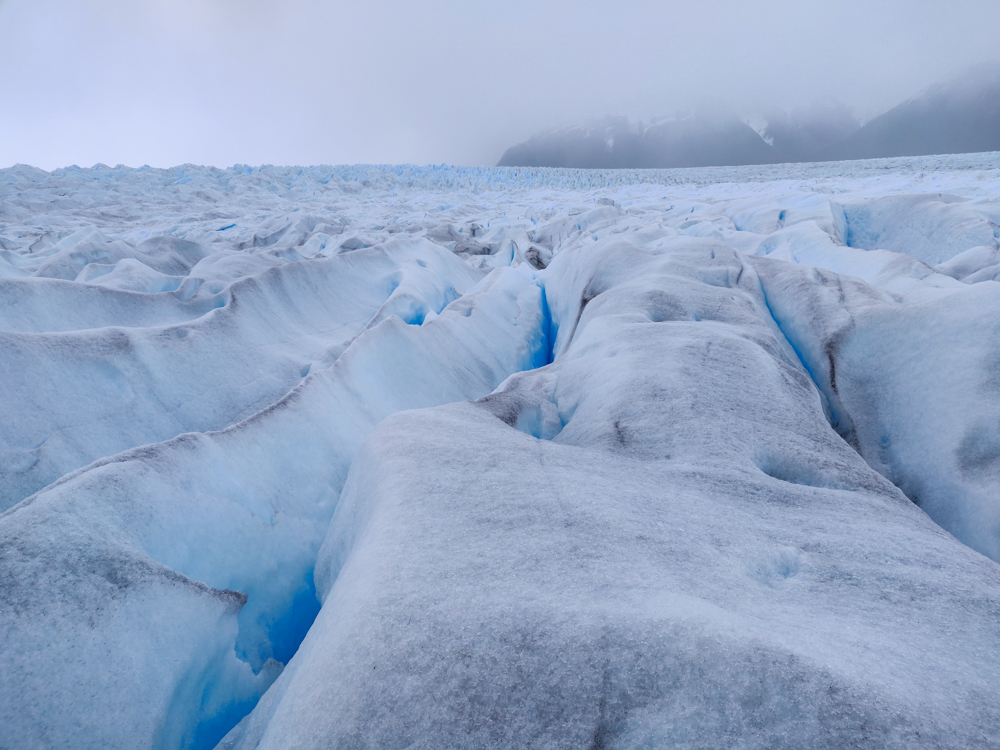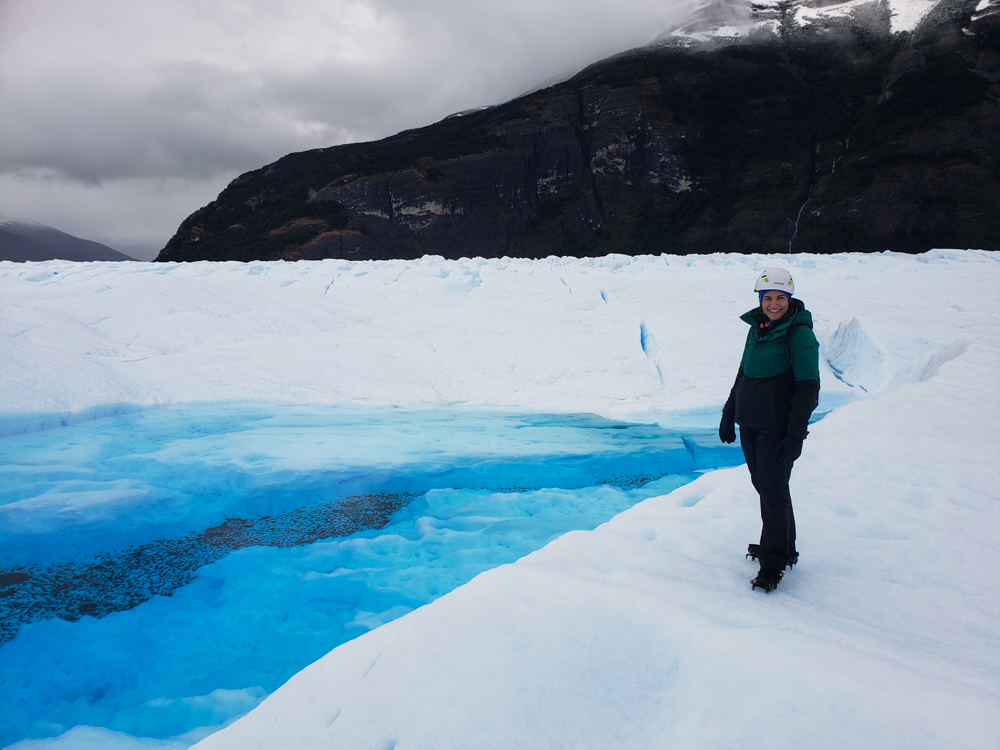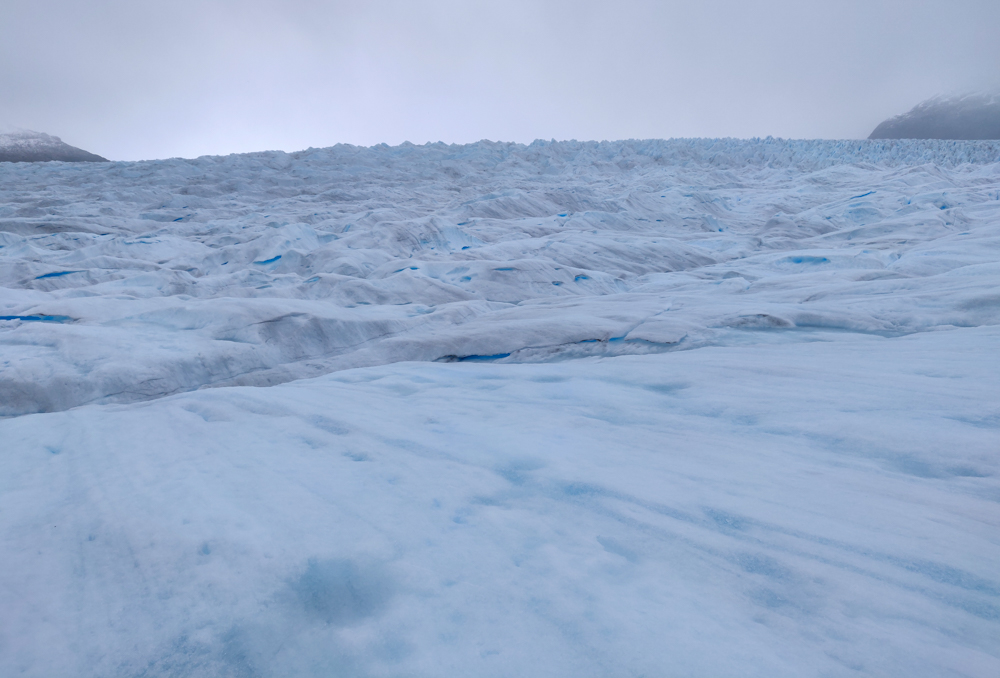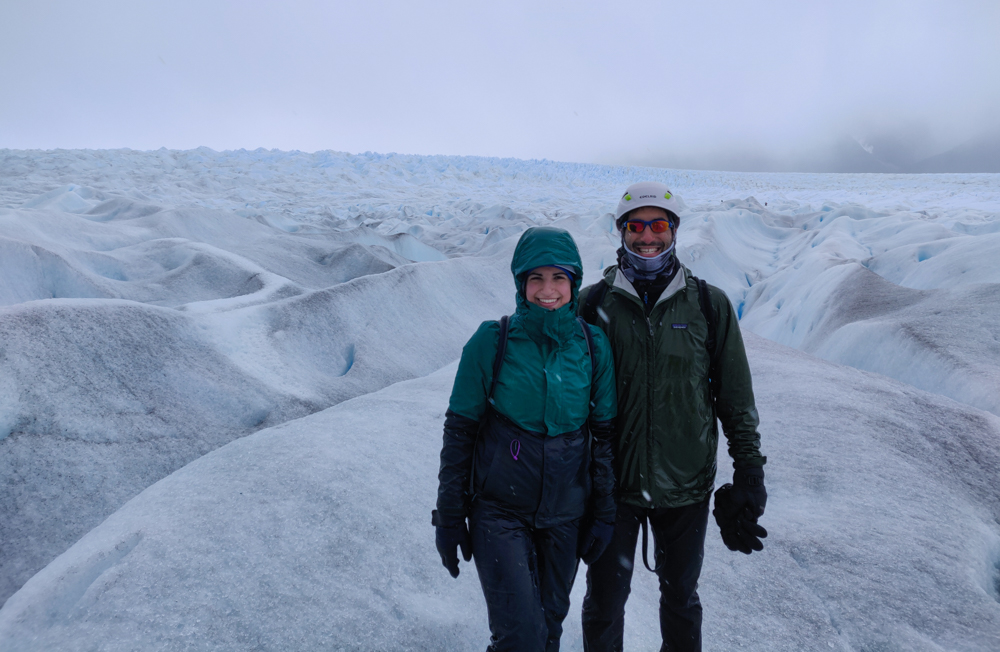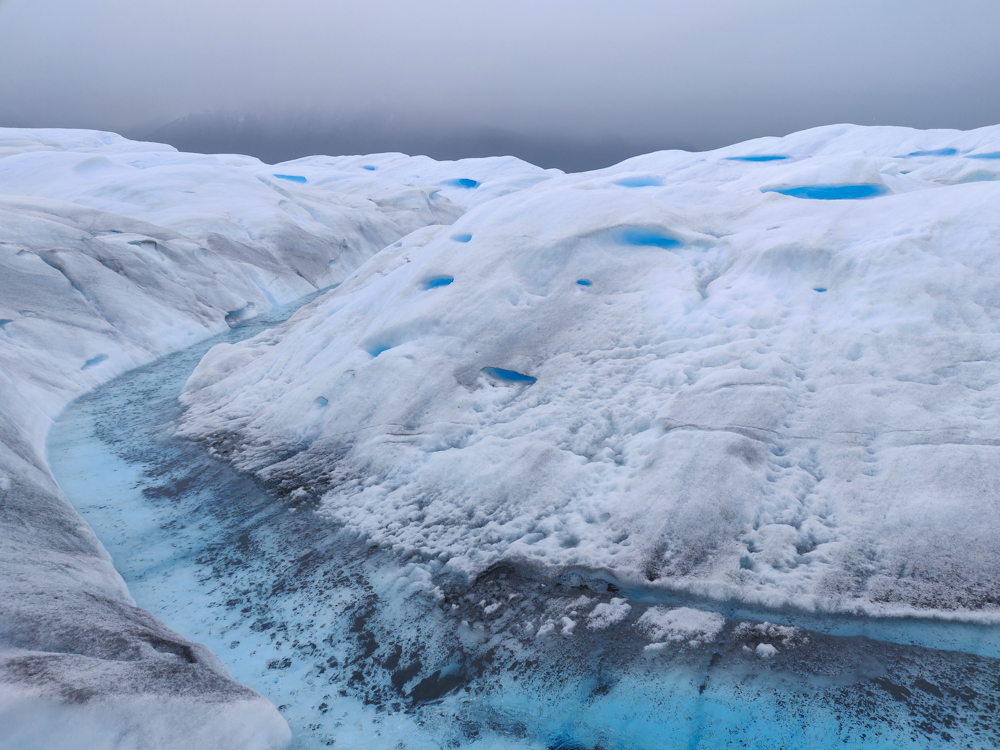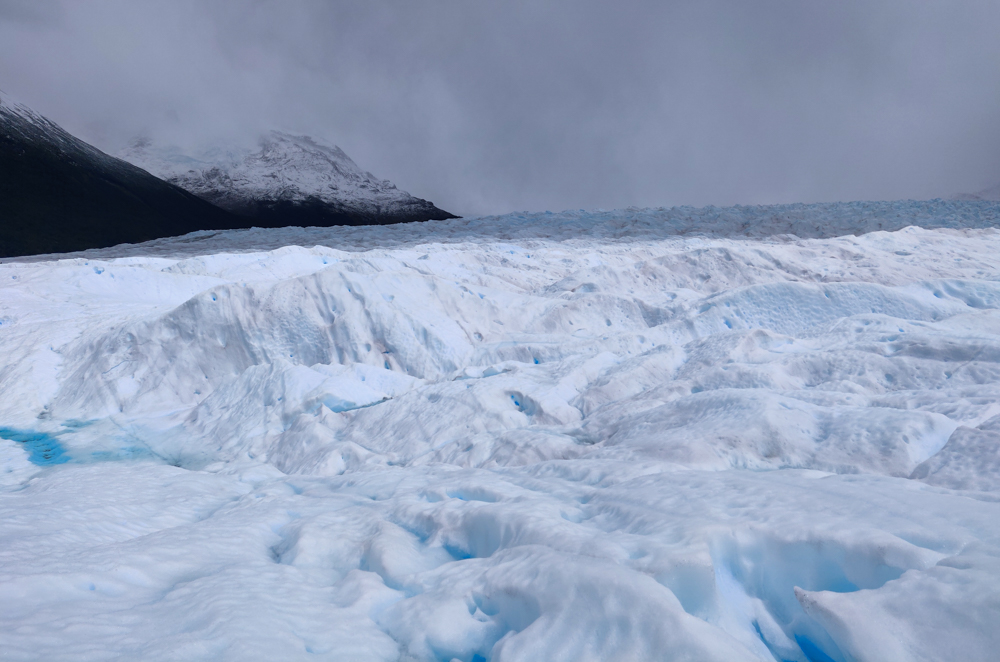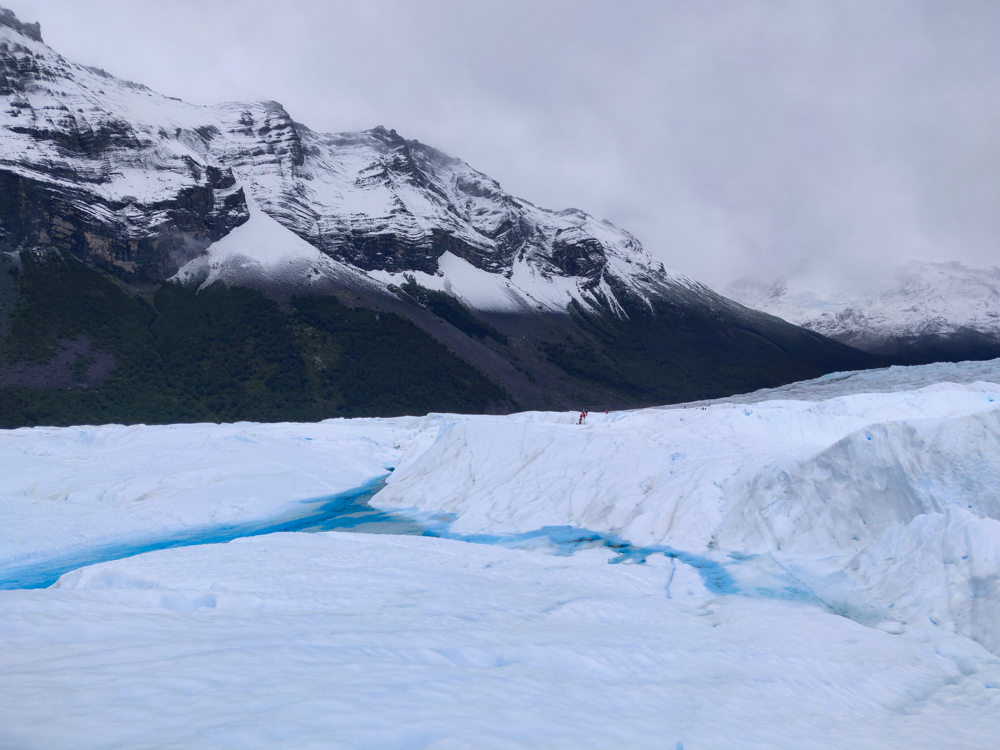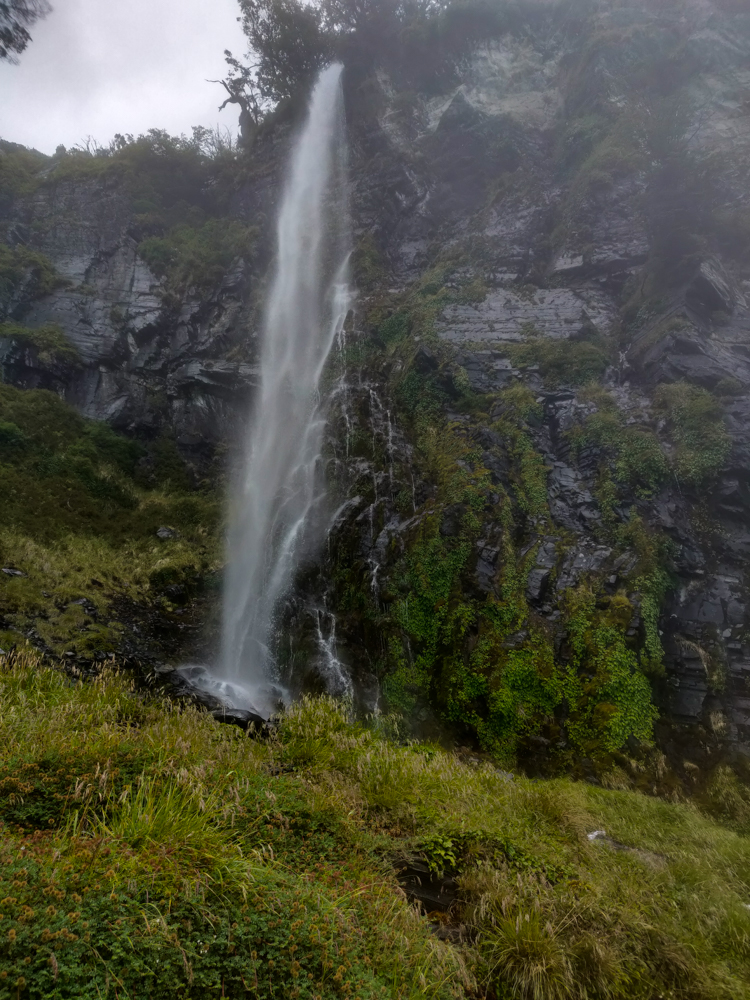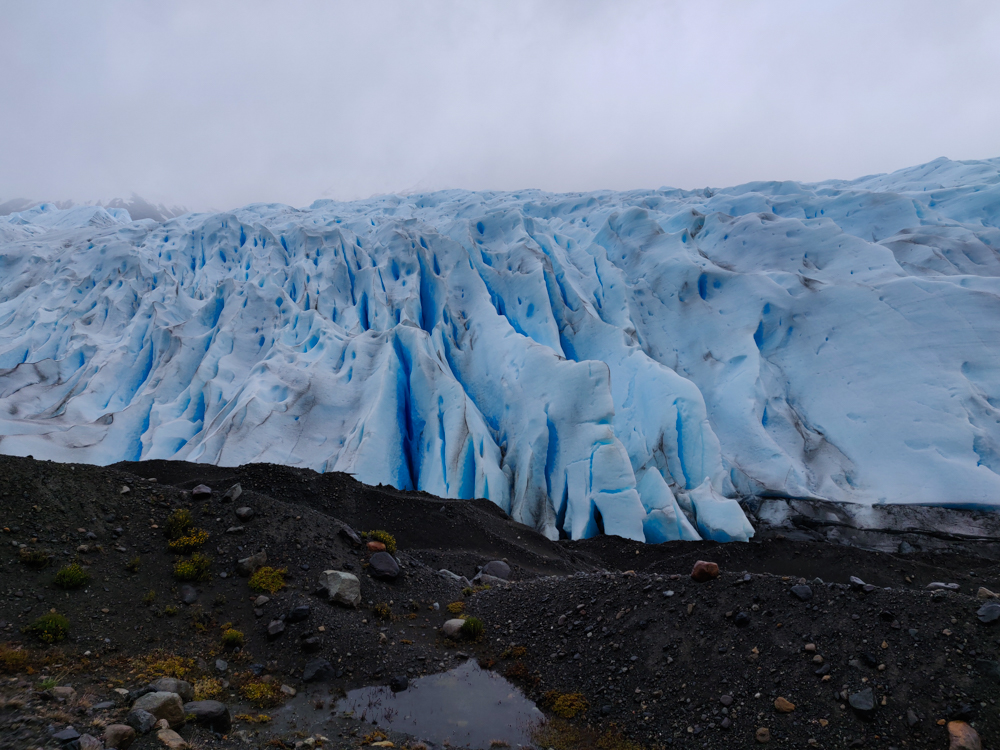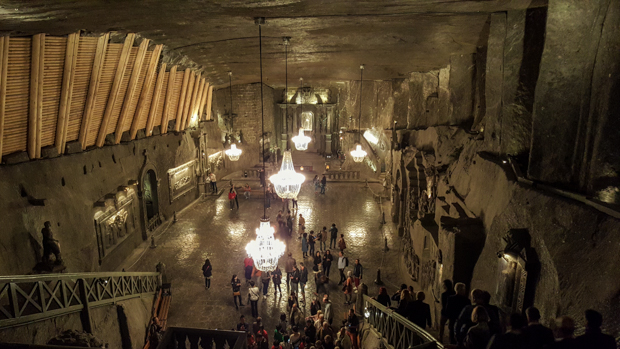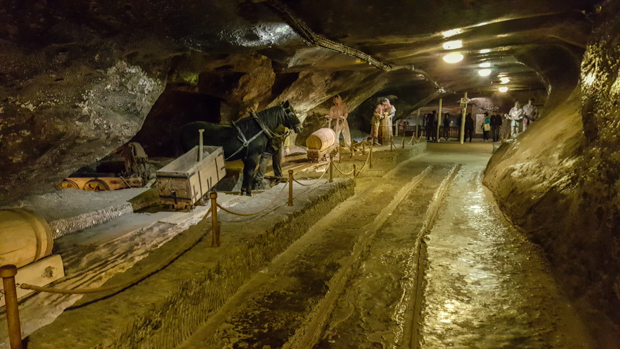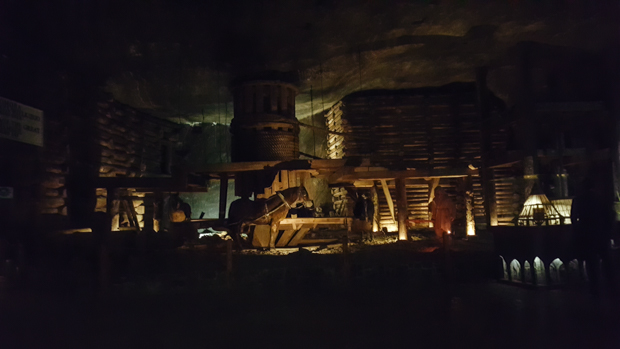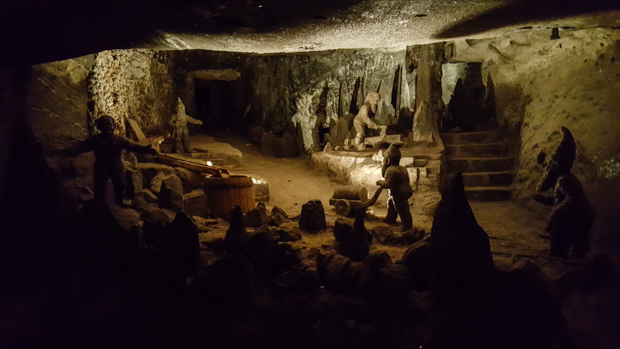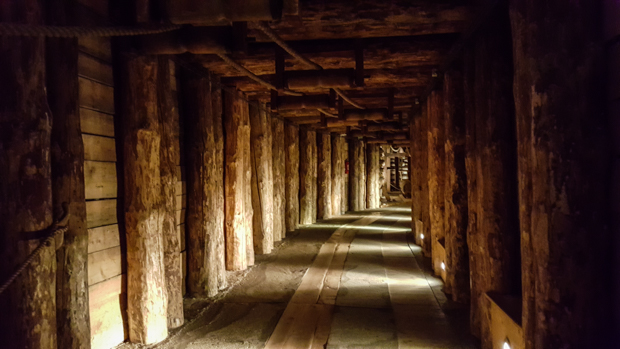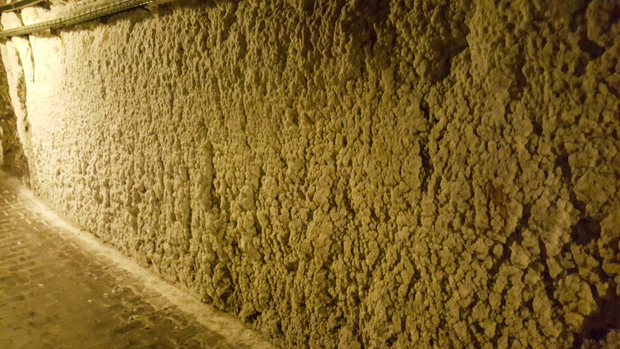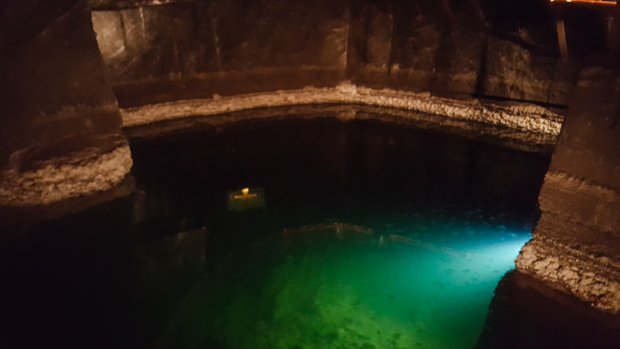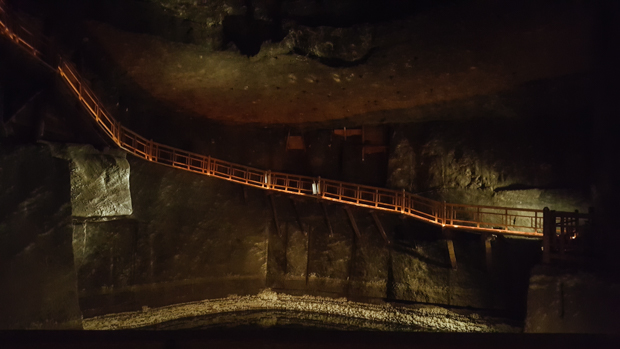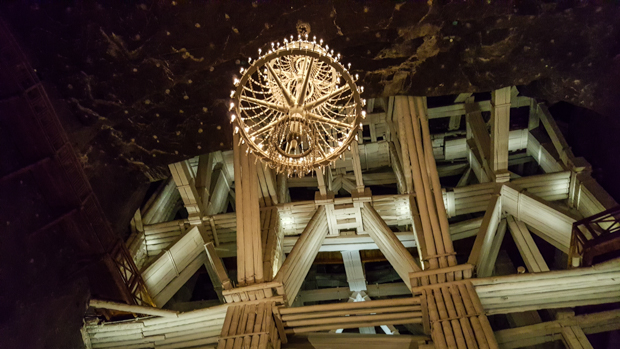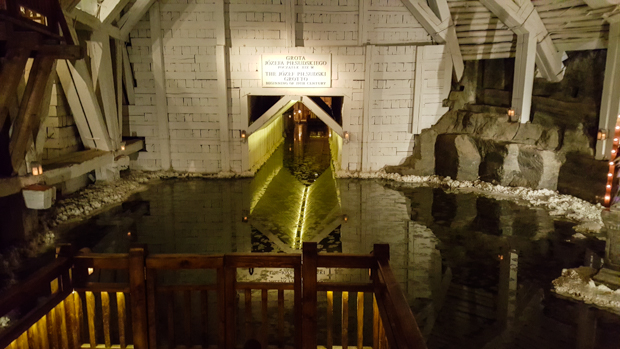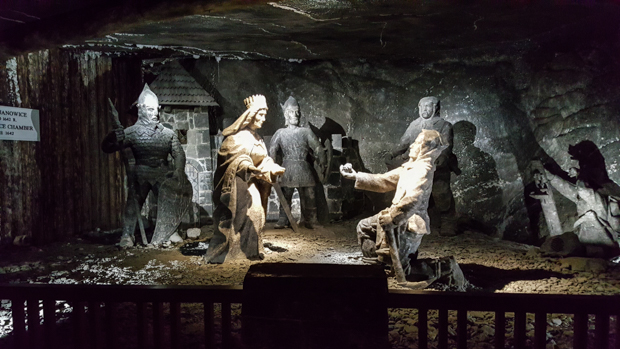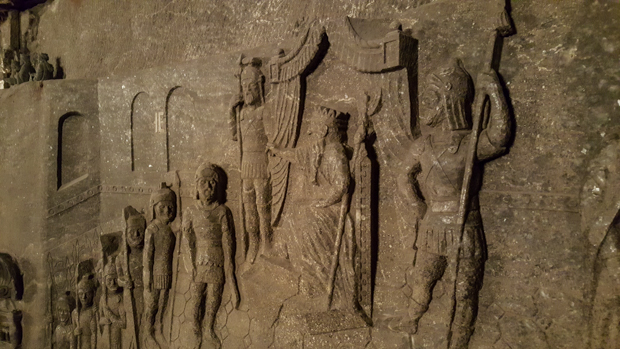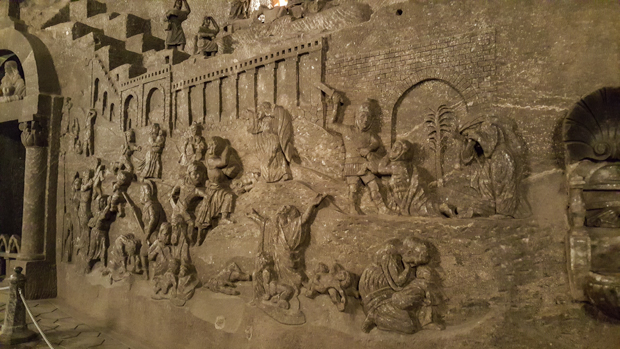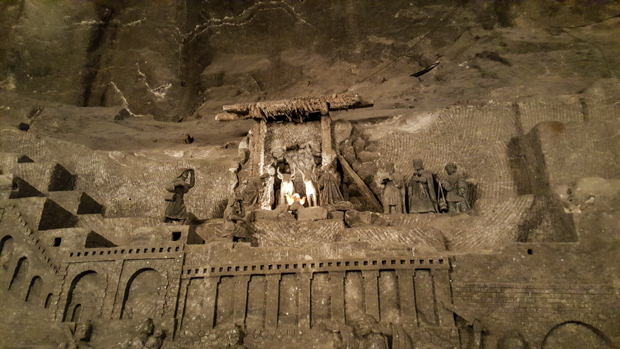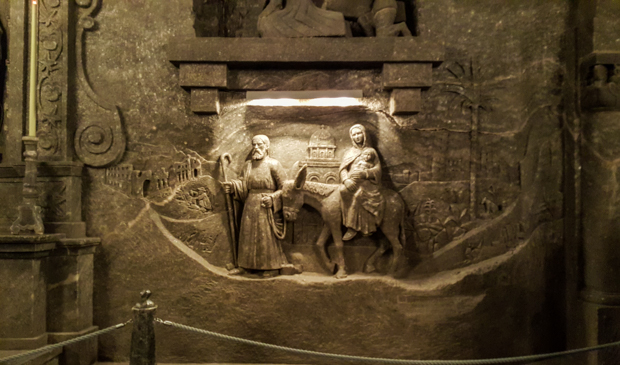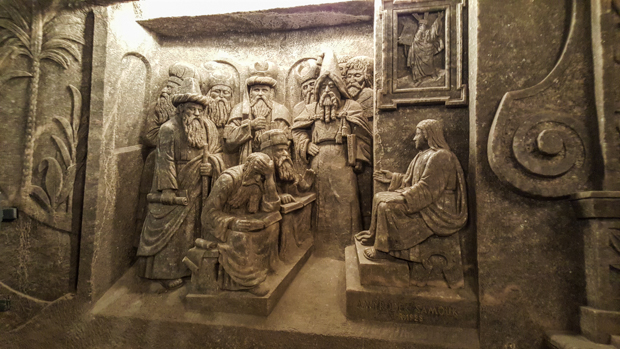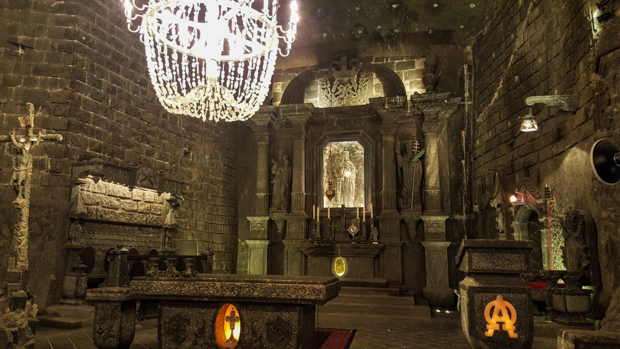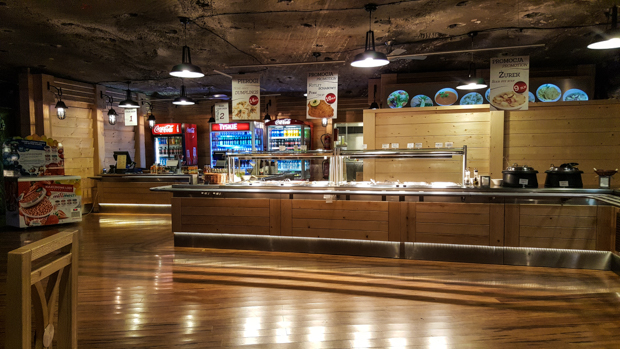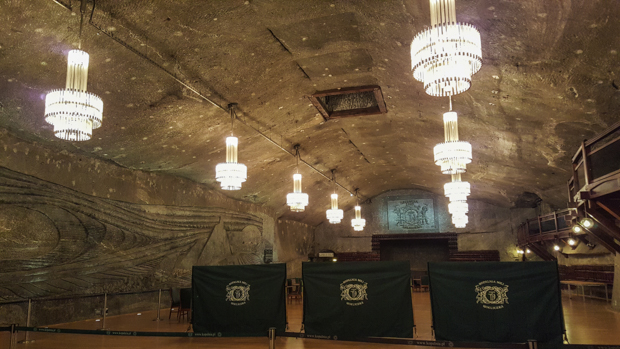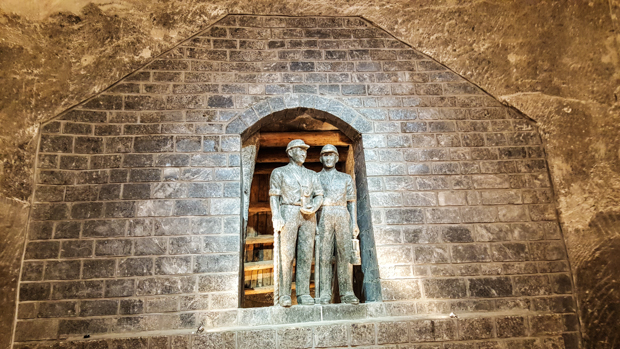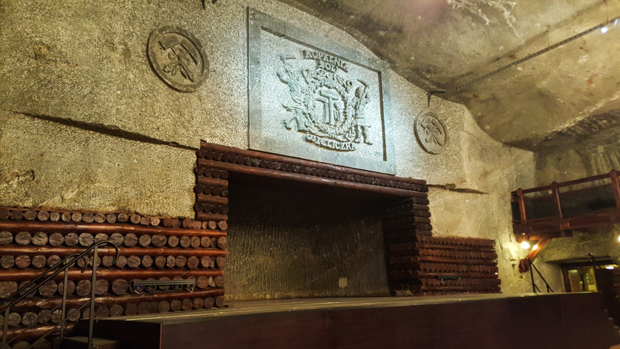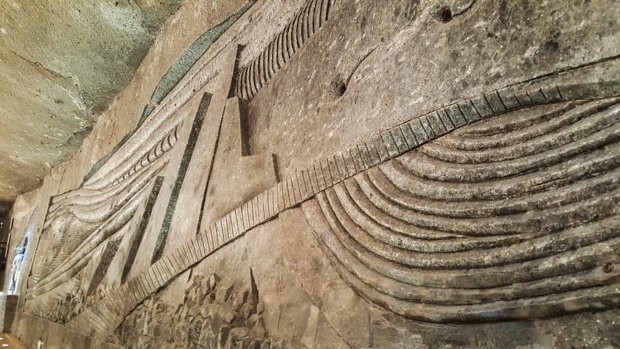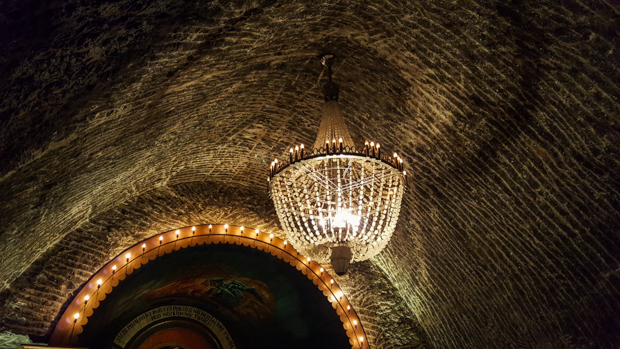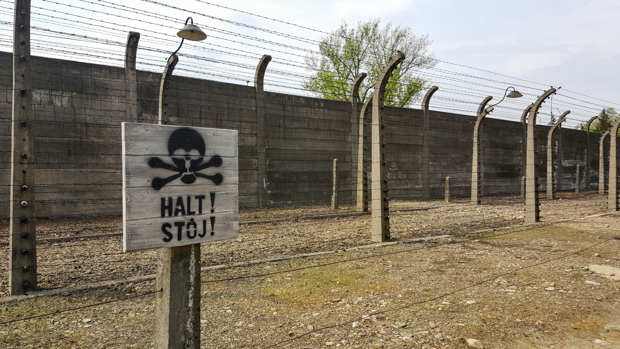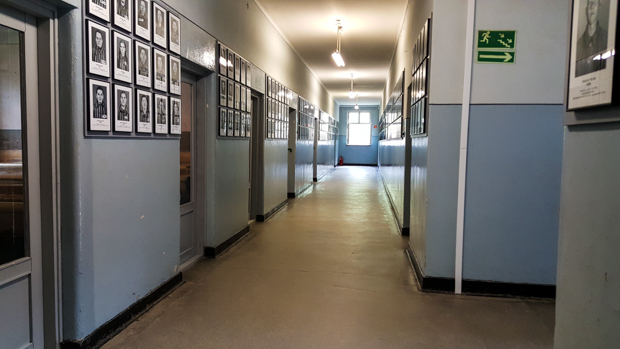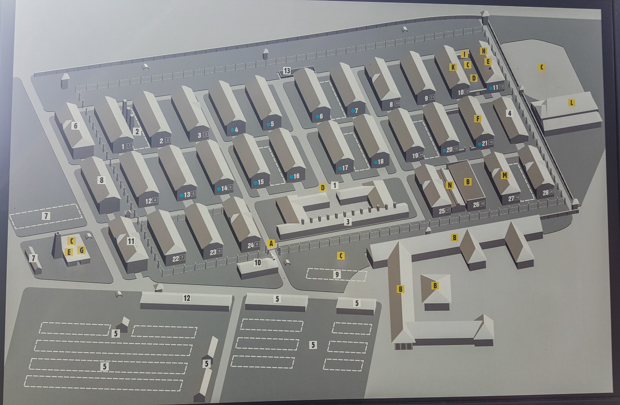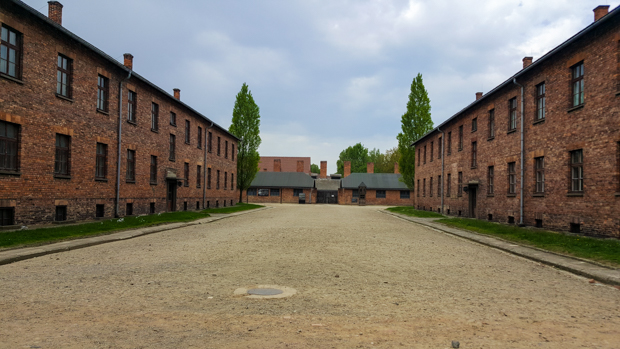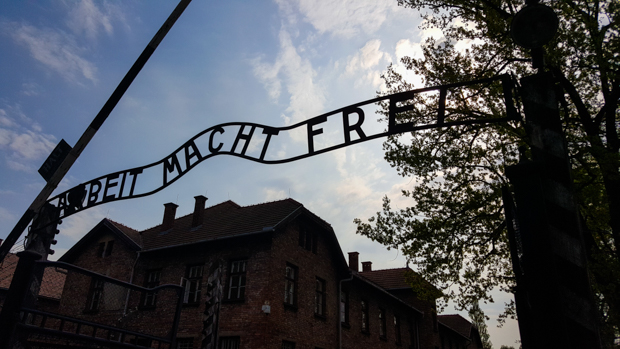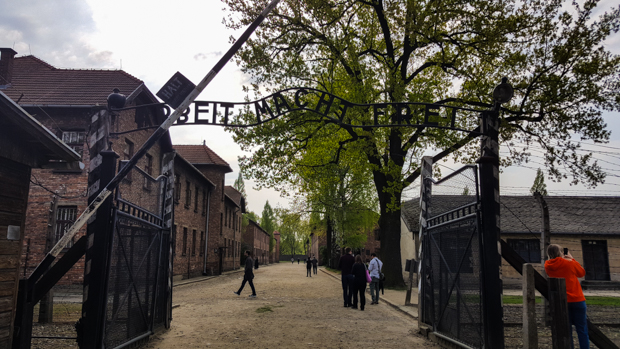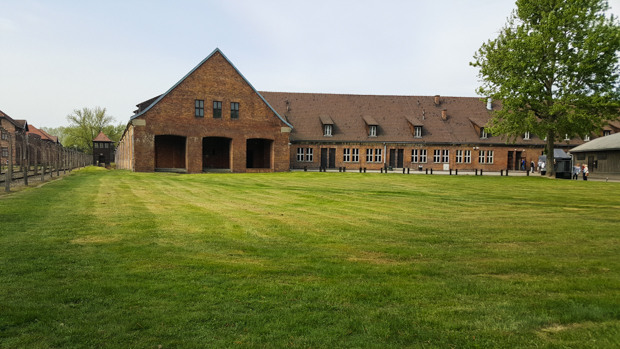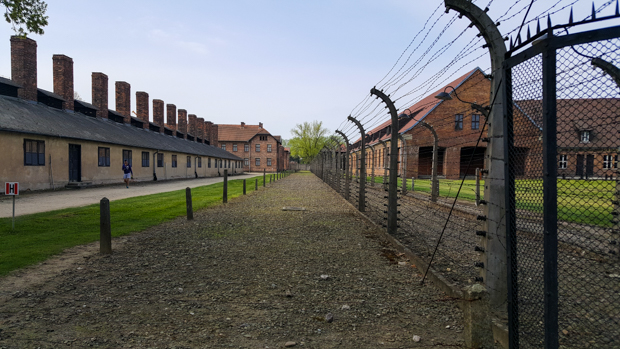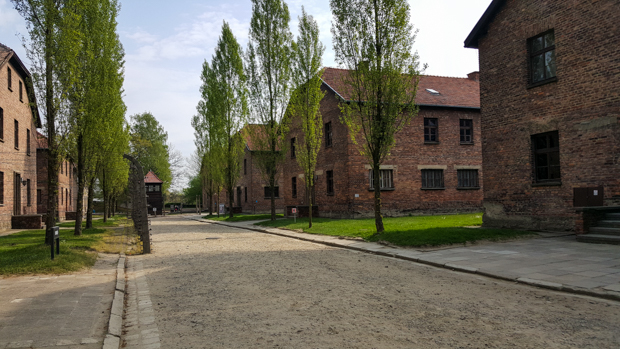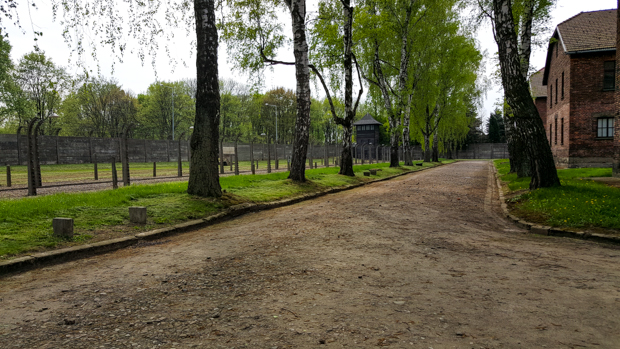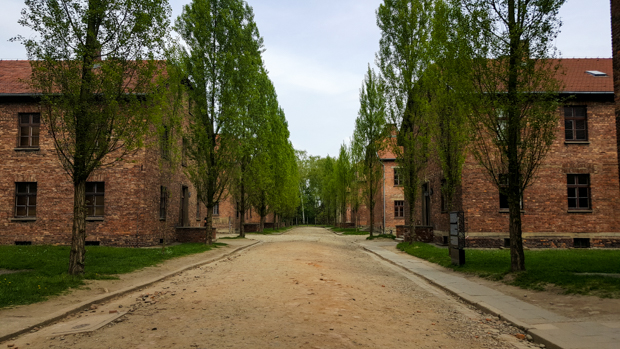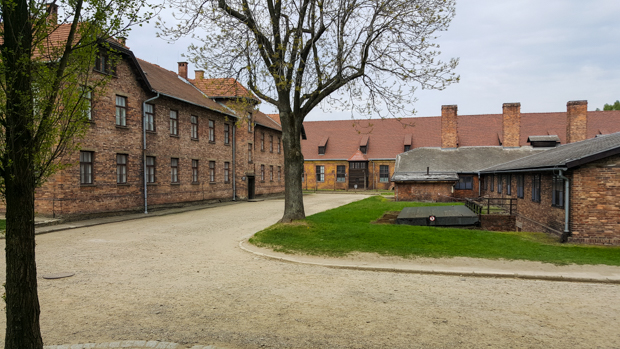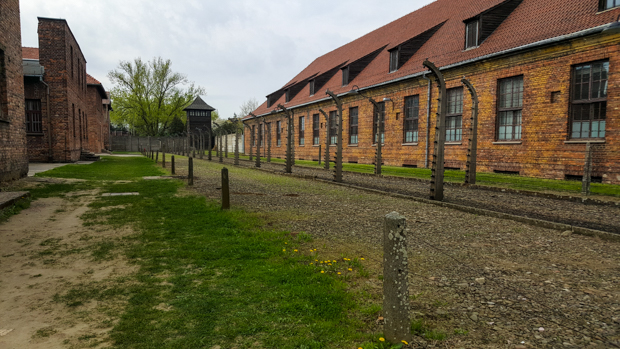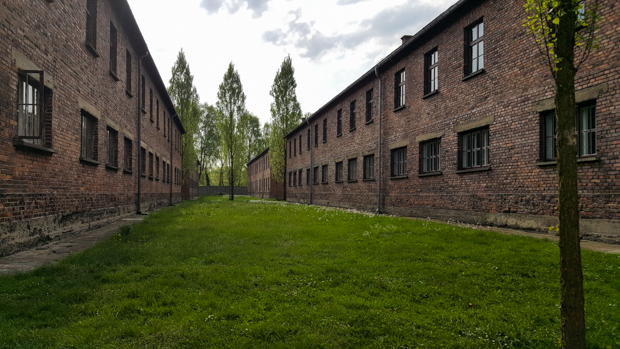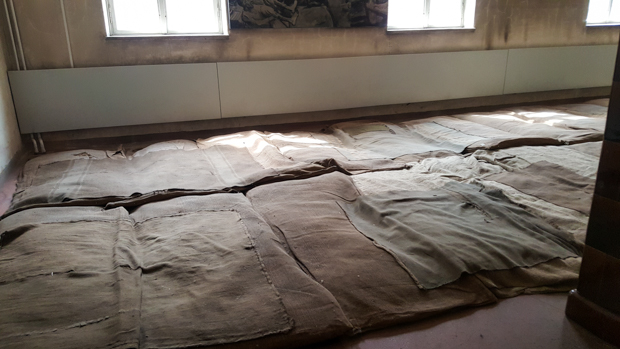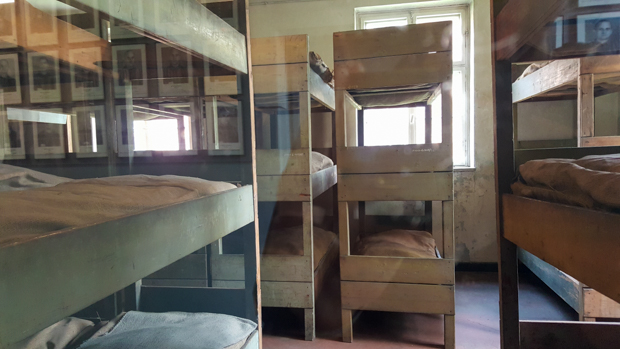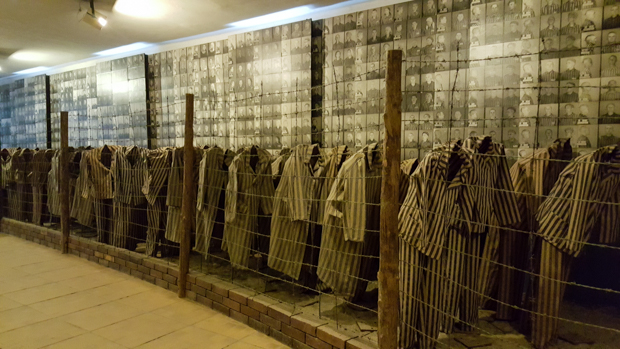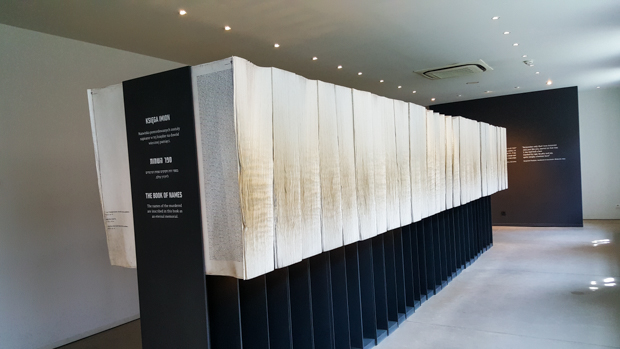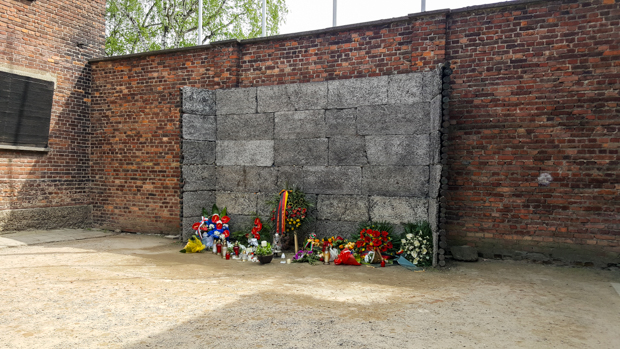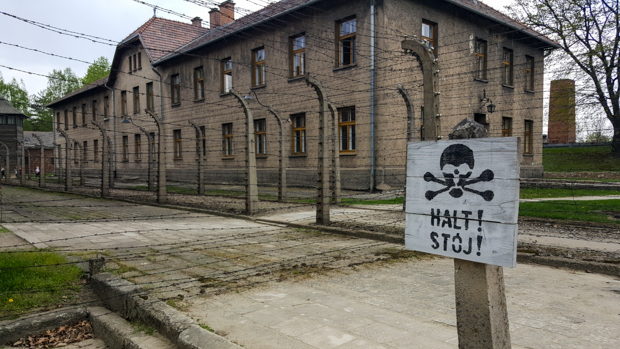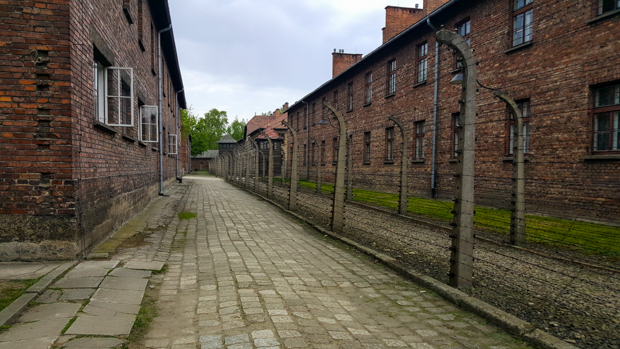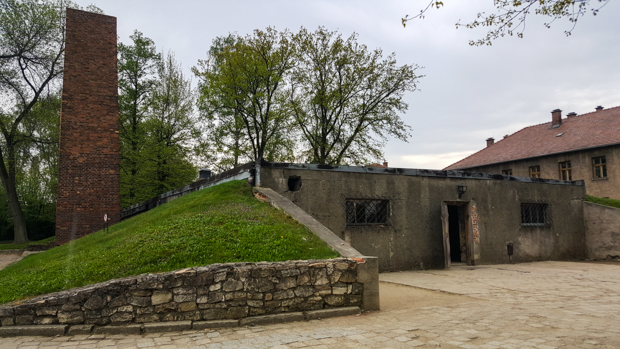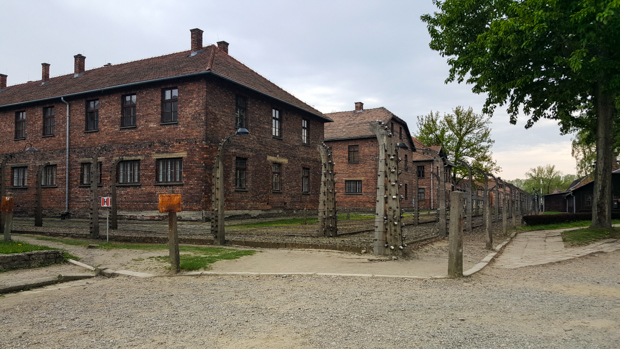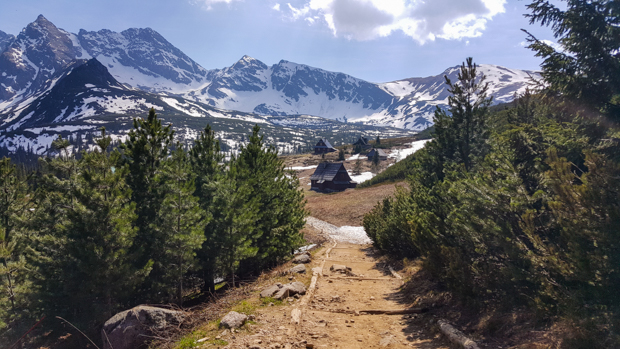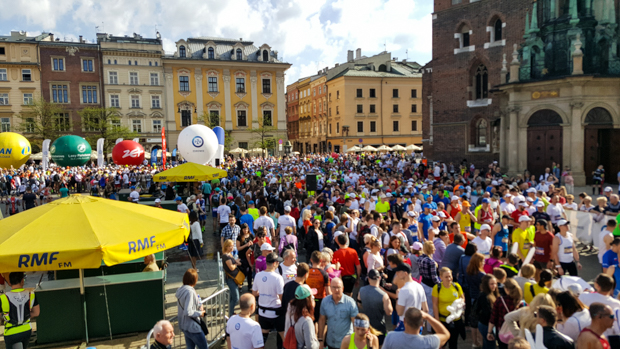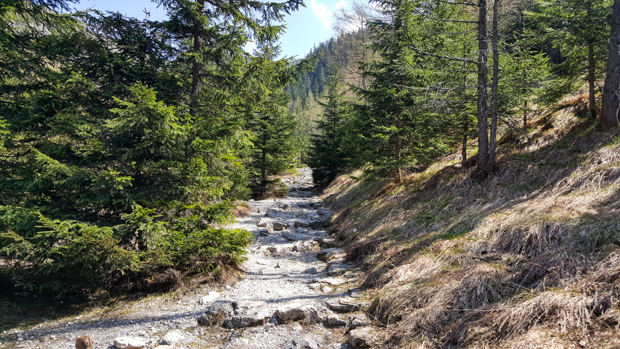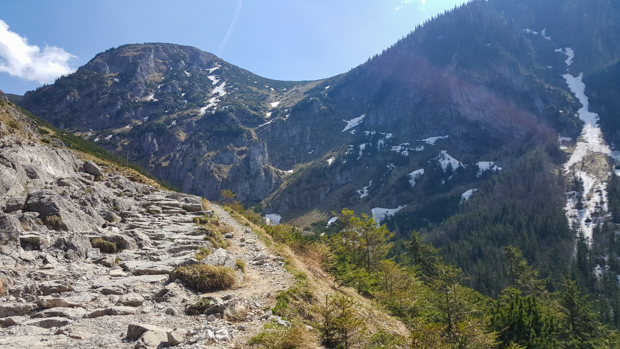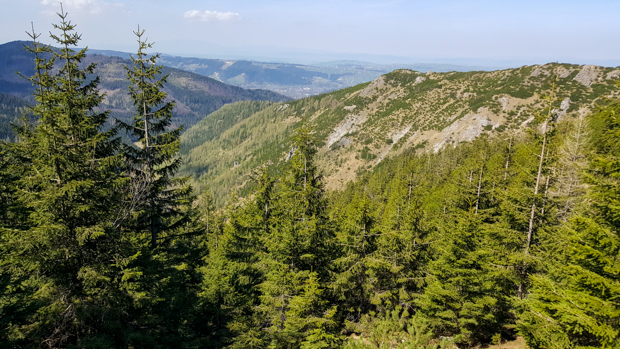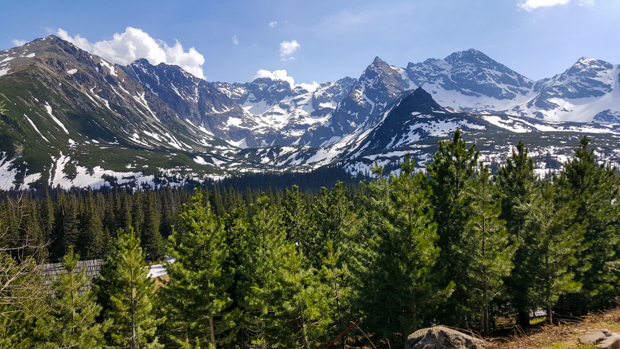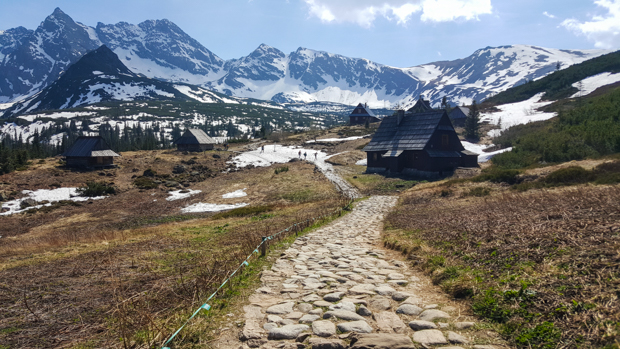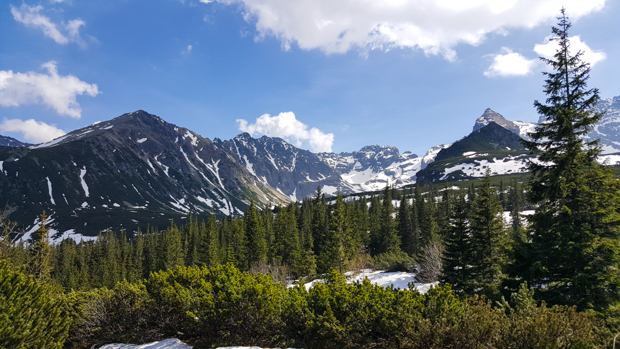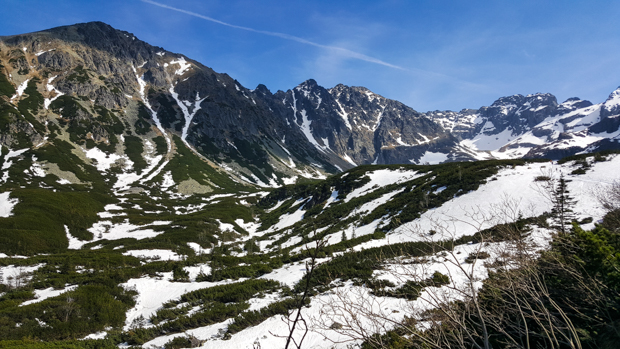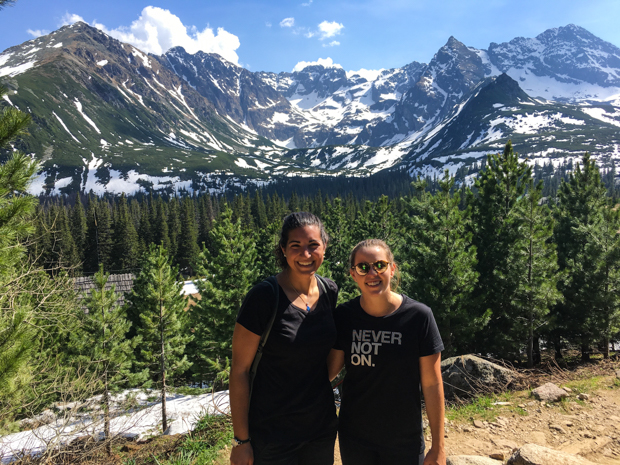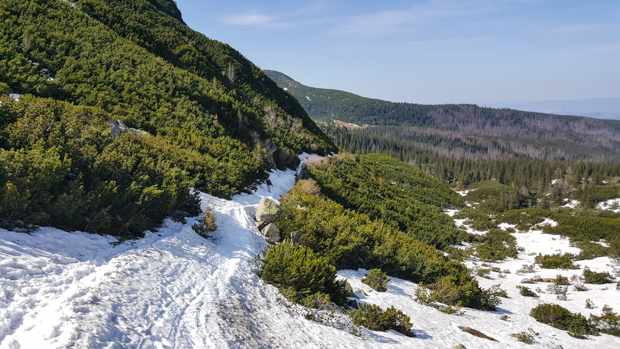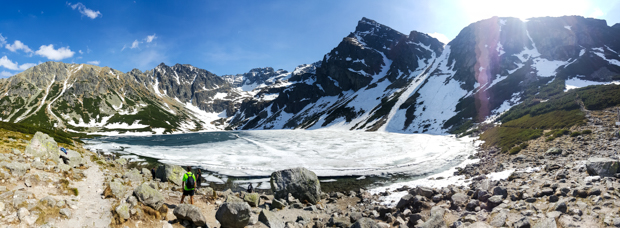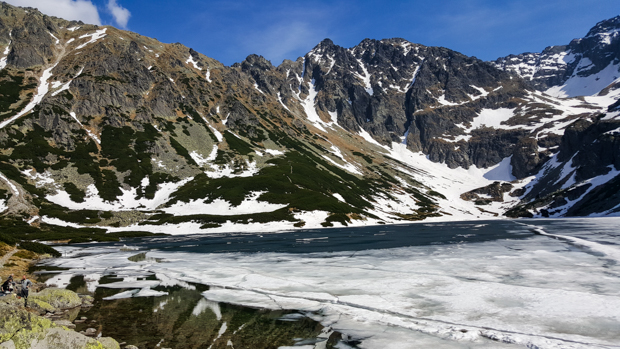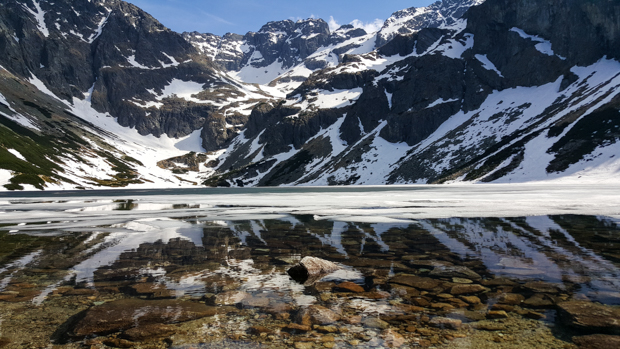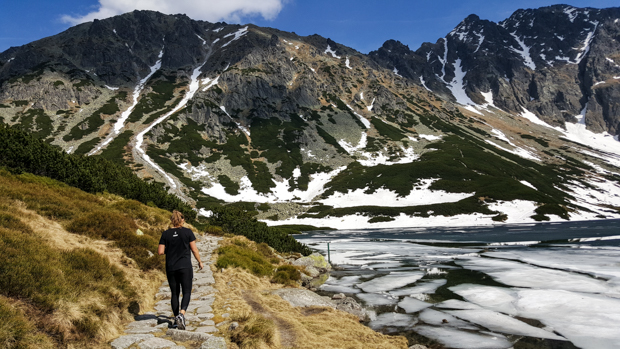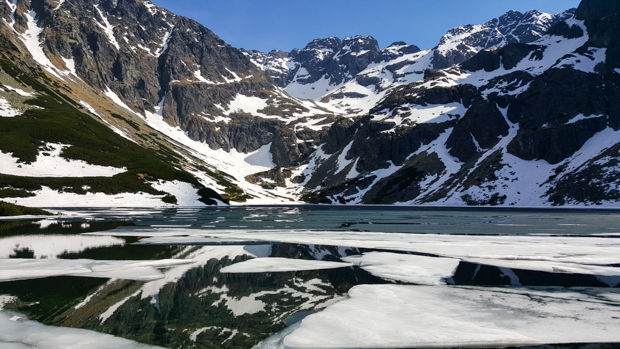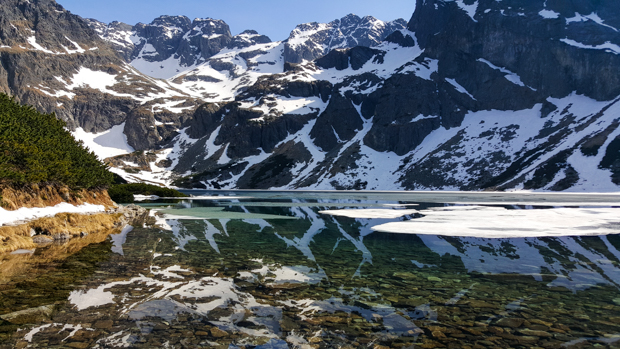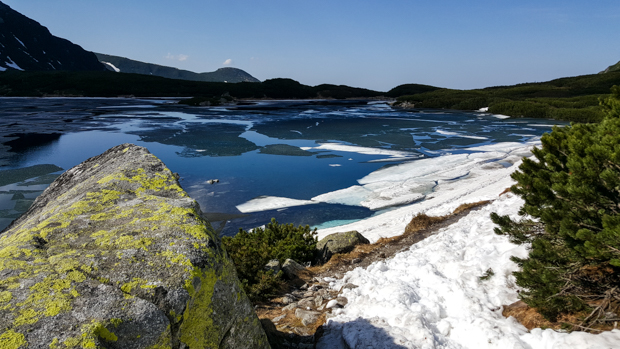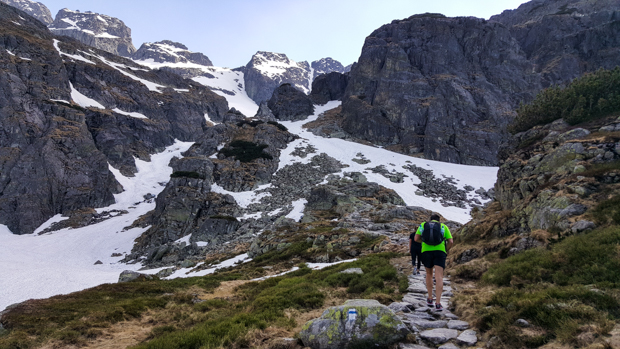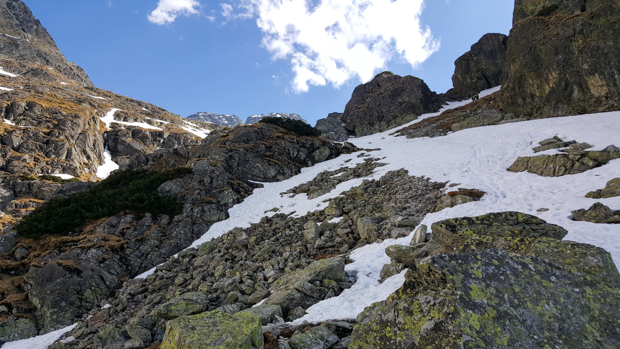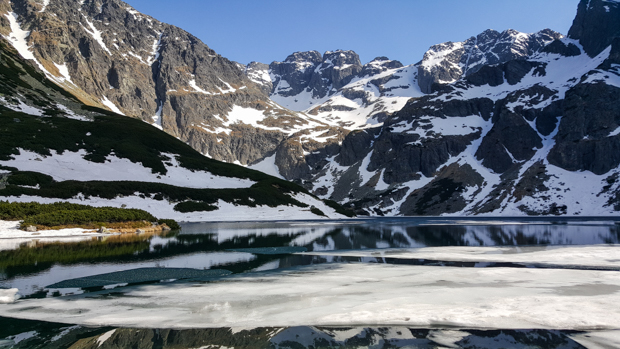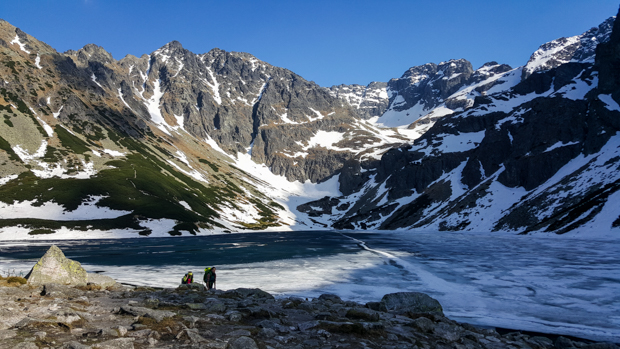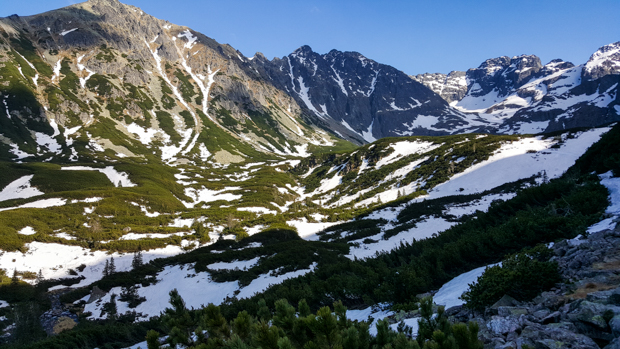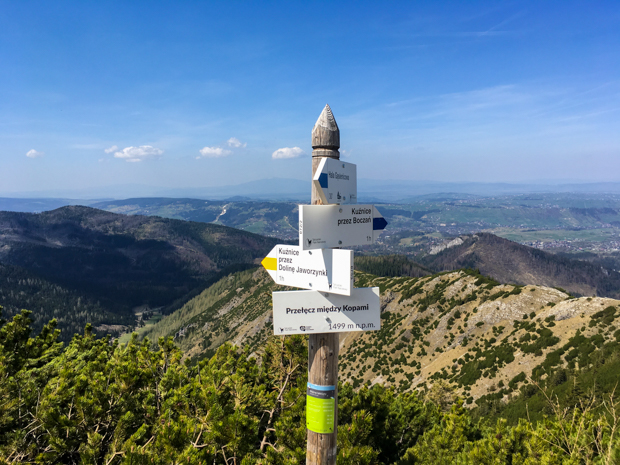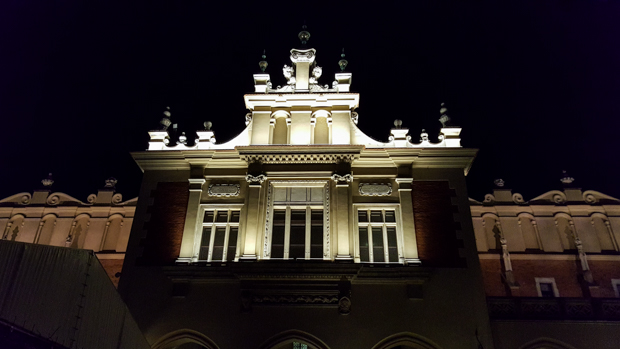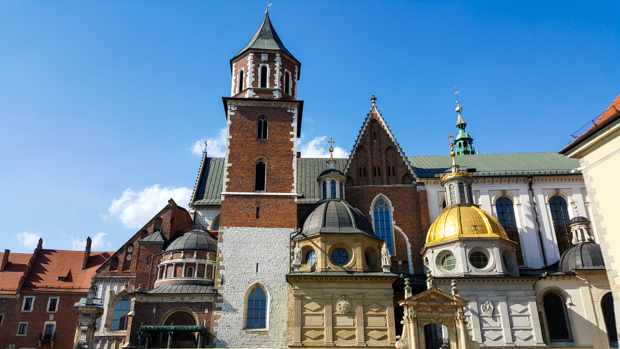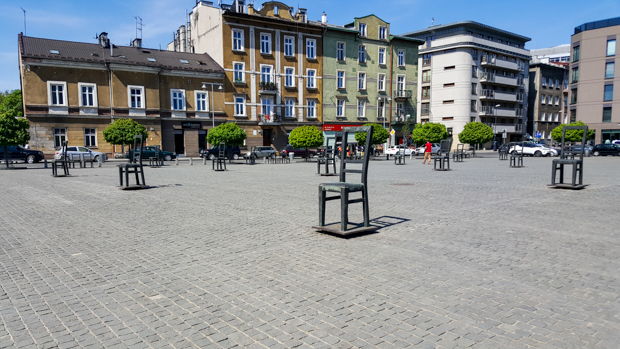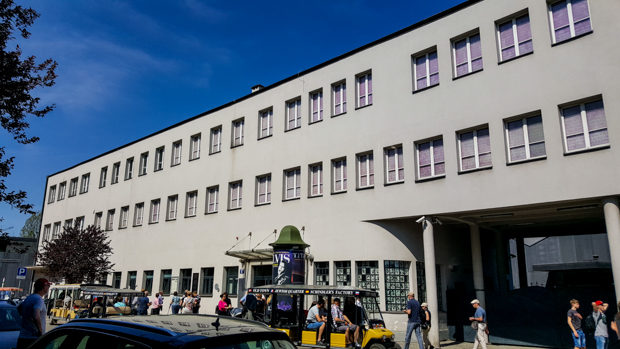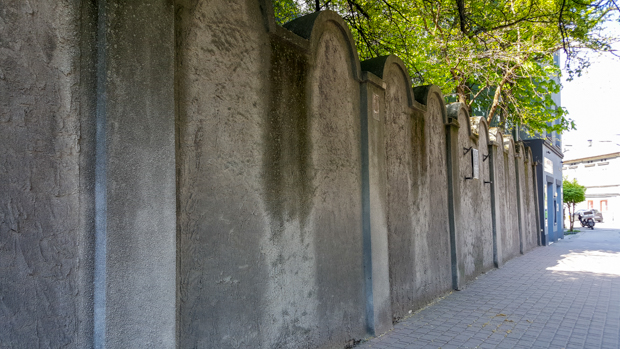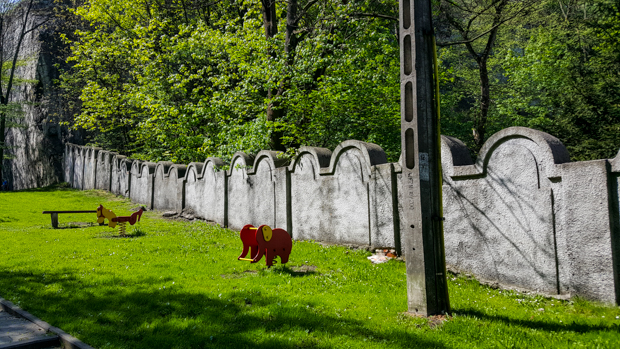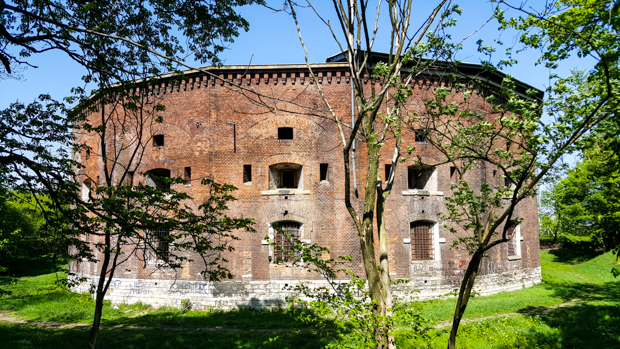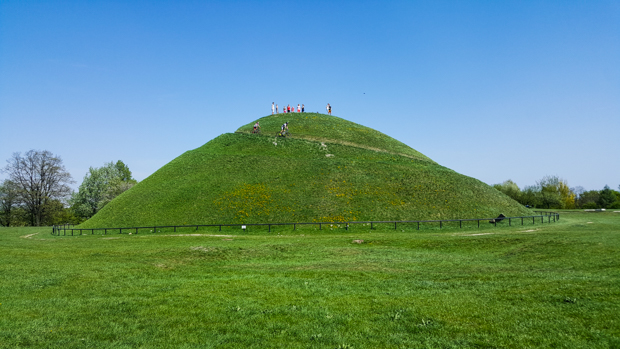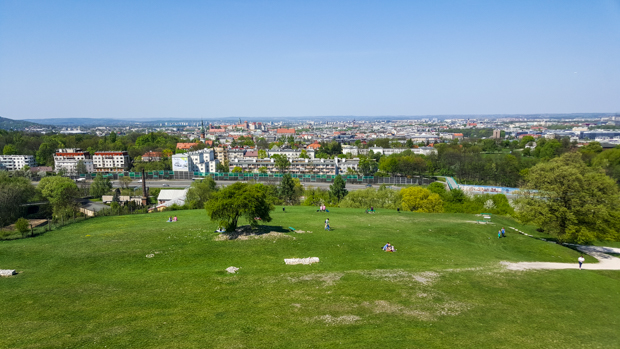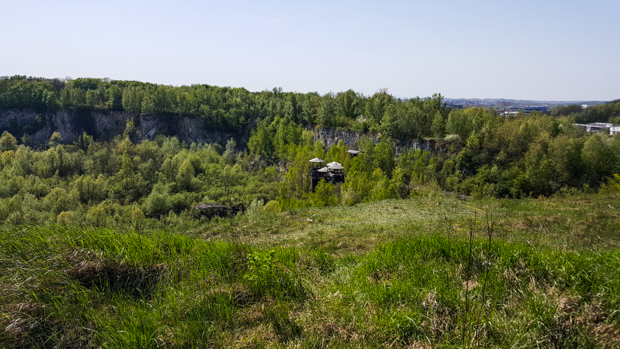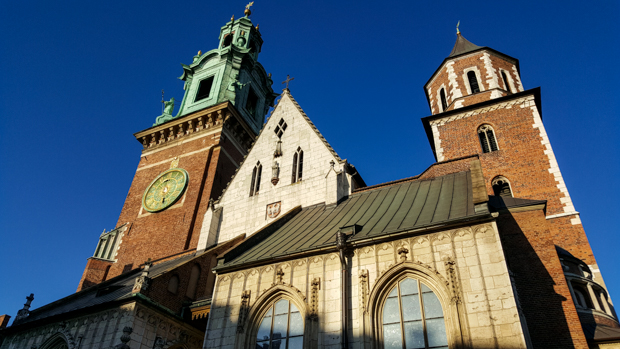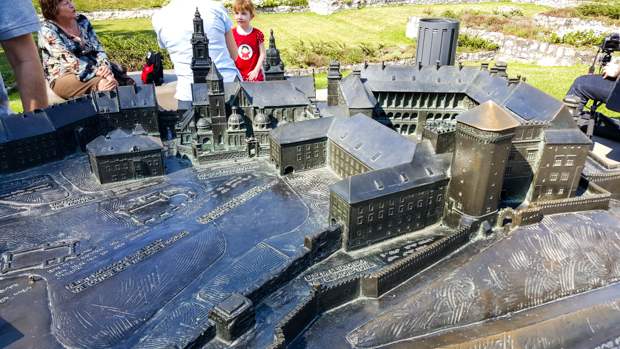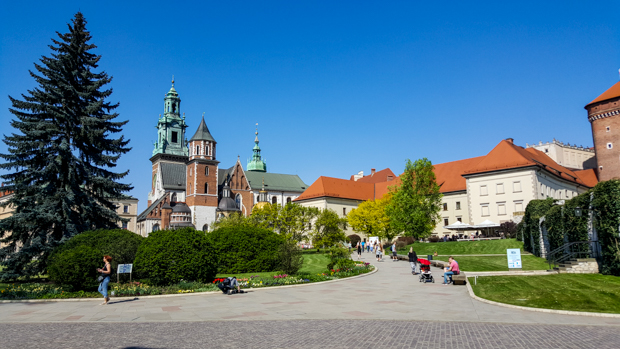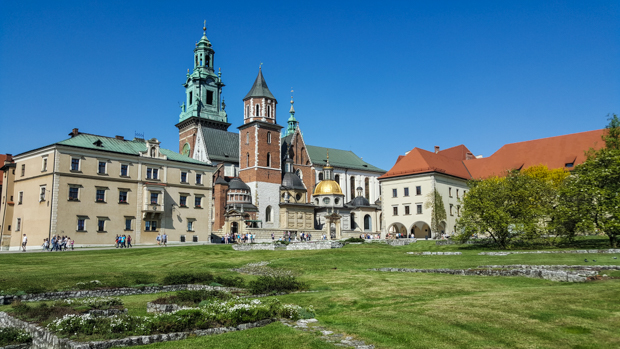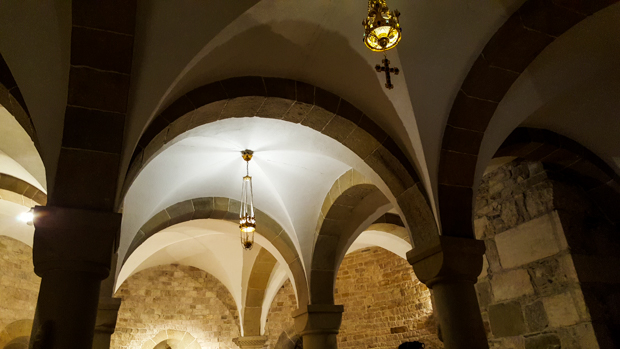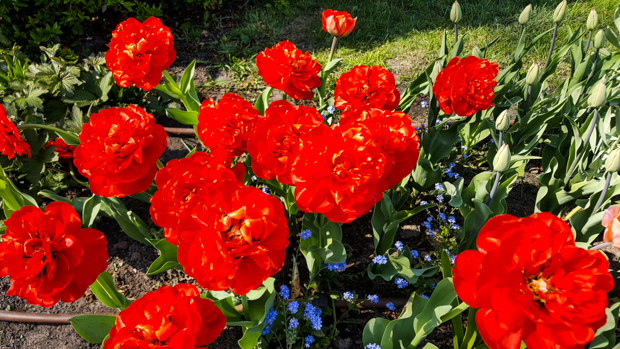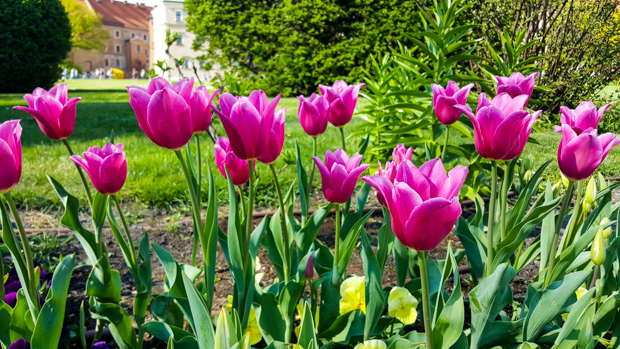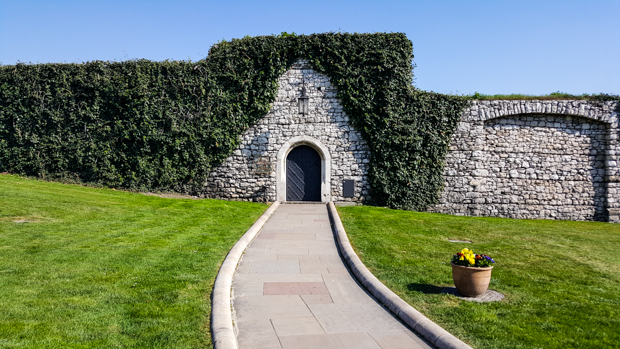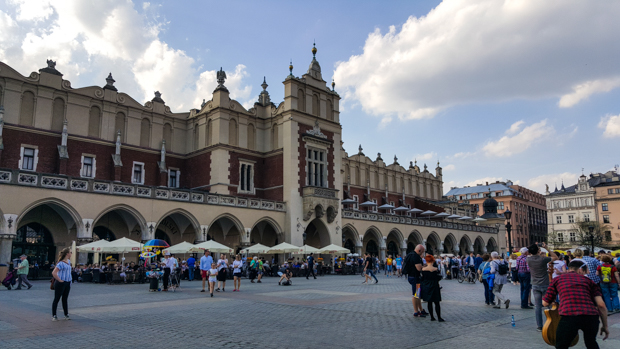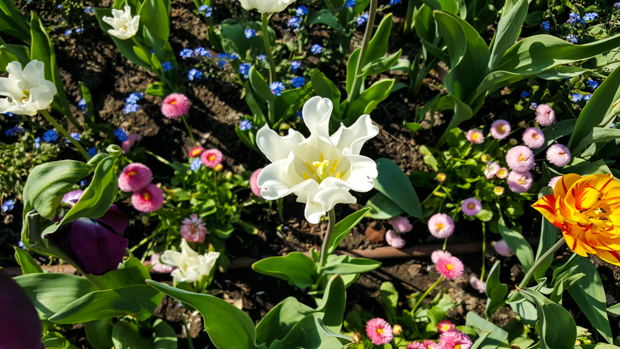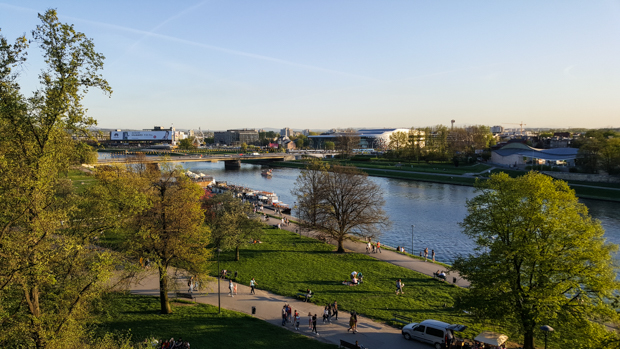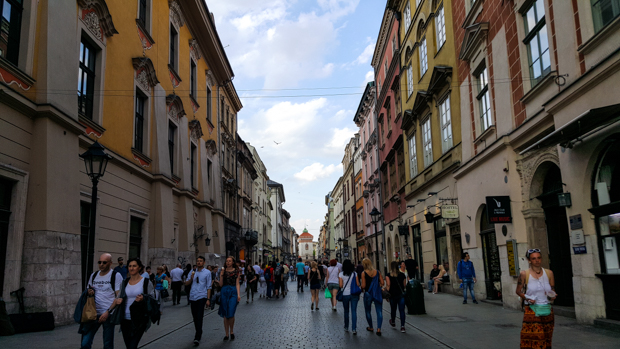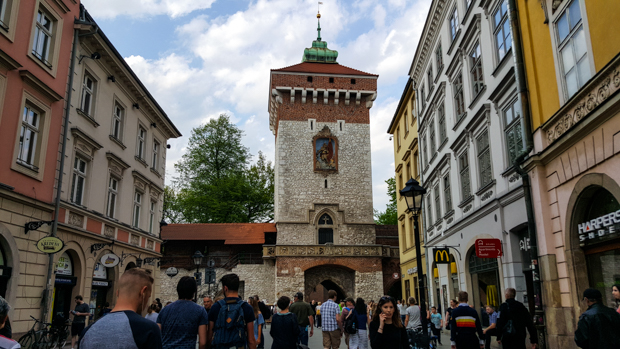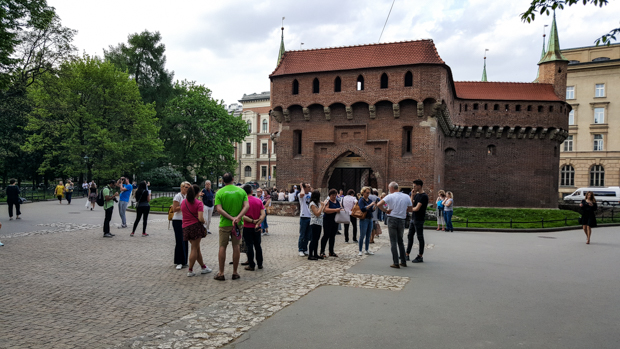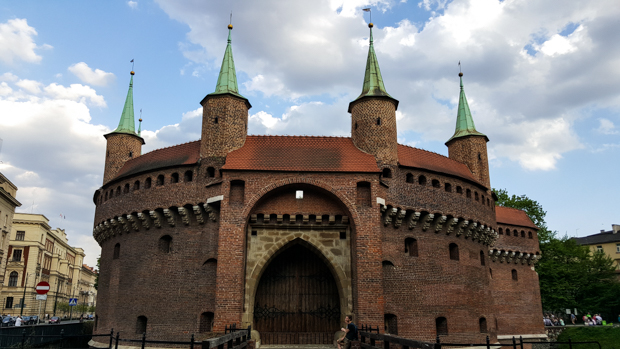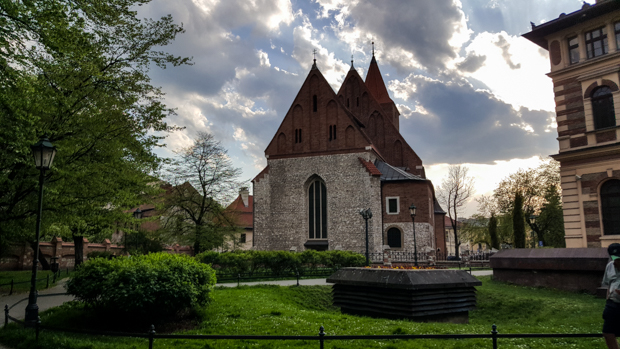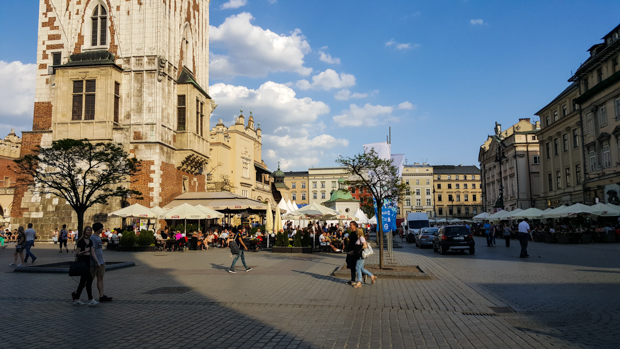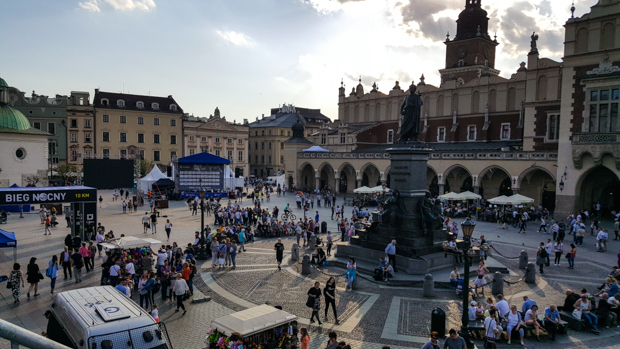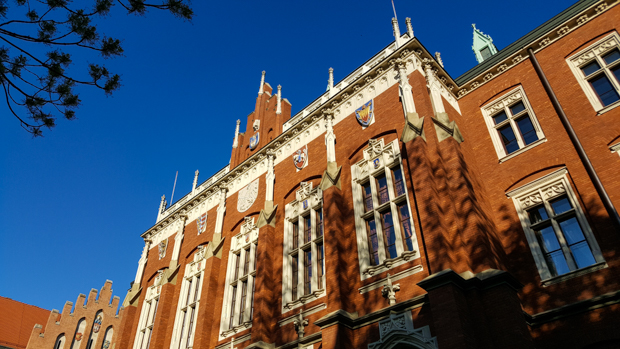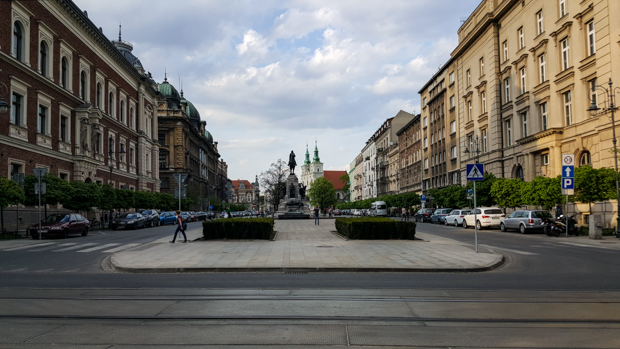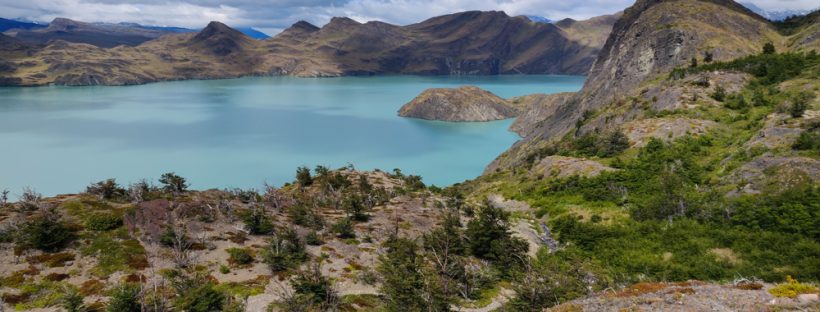
Our third day of the W trek started out much better than the second. There was no wind in the forest where we were camping. I didn’t wake up terrified of blowing away. Nothing disturbed us until my alarm went off at 8AM which means Mike slept for 14 hours straight and I slept for 11.
We treated ourselves with a late morning because we had our shortest day of hiking ahead, just over 10 miles. Plus, we were both exhausted, and I think my body would have full-on rebelled if I had tried to wake up any earlier. Even with the extra rest, I wasn’t thrilled about having to move.
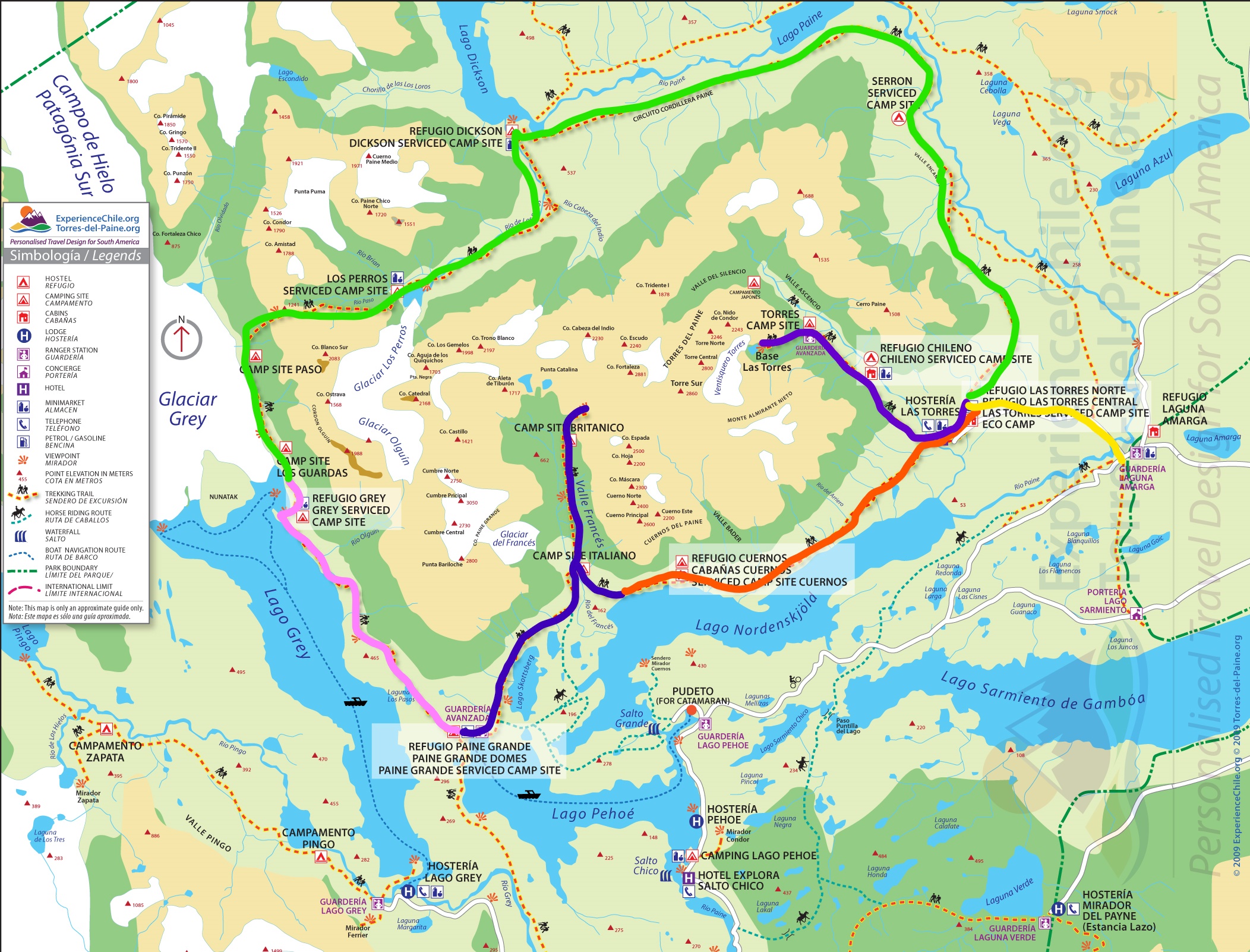
There was no sense of urgency in getting ready to go. We didn’t even have a tent to pack up (we spent that night in a rented tent because it was the only option left when we were booking), and it still took us until about 9:30 to get completely ready (okay… probably it was mostly me taking my sweet time, but we really had no reason to rush). Mike and I met at the trailhead… and it looked like we were dressed for completely different seasons. I was feeling the morning chill, so I had leggings and my winter coat on. He was in his lightweight hiking pants and a t-shirt. The difference is that he’s more often hot than cold, I’m the opposite, and we dress accordingly. Sometimes we’re both right about what will work for us, but this did not end up being one of those times. Who do you think was wrong?
Okay, okay. It was me. I think we walked for 10 minutes before I felt like I was going to melt into a puddle. There was way more sun than I was expecting, plus I hate starting out cold even when I know I’m going to warm up from the exercise.
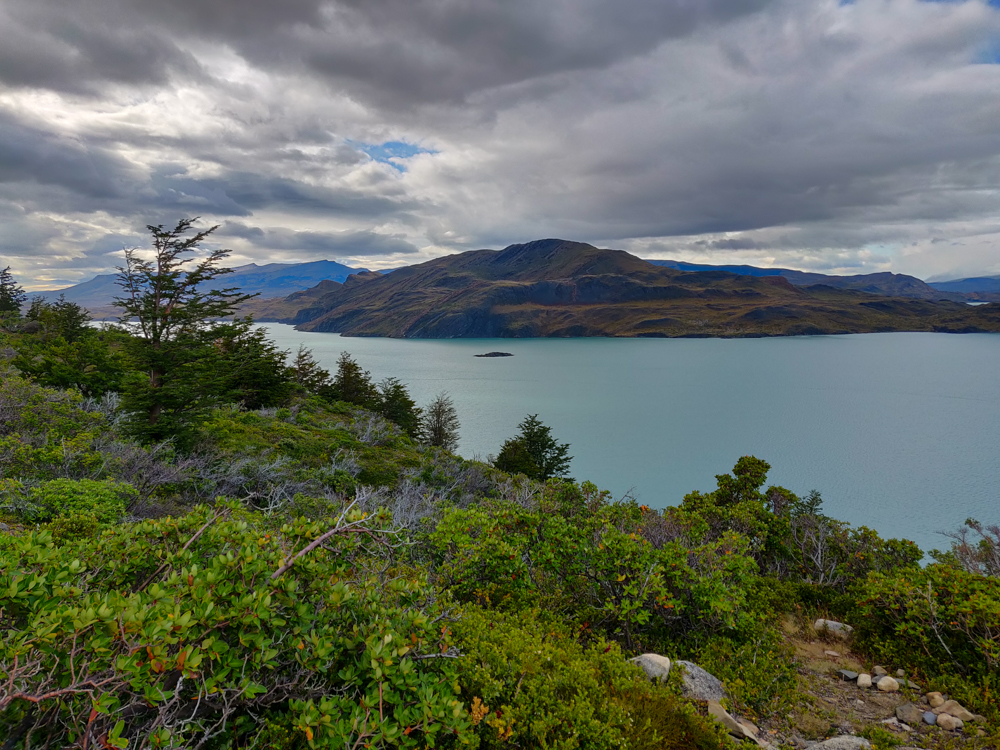
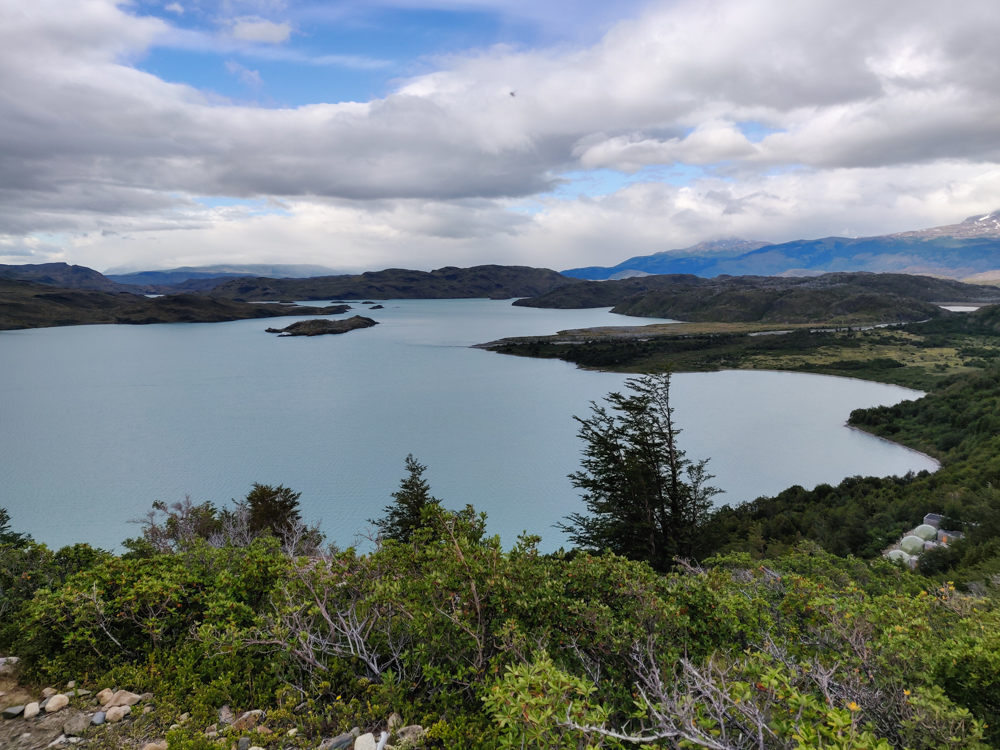
Our segment for the day was the second bottom part of the “W” which meant we had to take all of our stuff with us again. Since there weren’t any big viewpoints along the way, I thought it was going to be an underwhelming day. HA! You’d think I would have figured it out by then. Maybe there weren’t any mind-blowing, mountain-surrounded valleys, but the scenery was still amazing. Soon after we left our campsite, Francés, the forest thinned out, and we started walking downhill towards Lago Nordenskjöld (that’s about when I decided I needed to take my coat off).
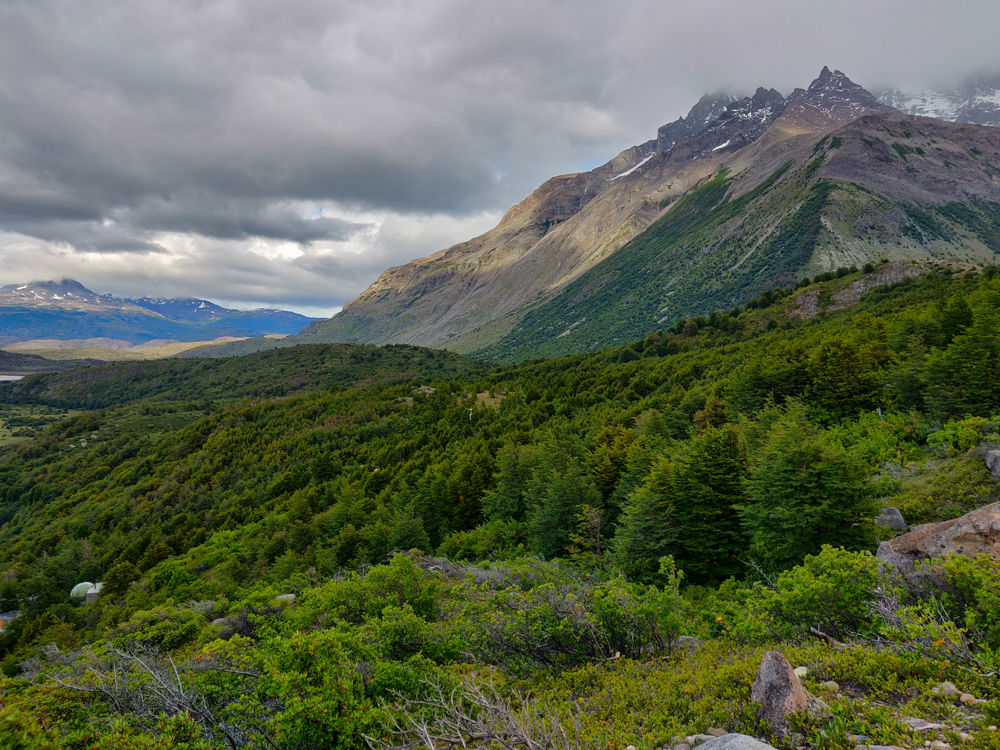
After about an hour, we made it all the way to the edge of the lake! I had no idea that we were going to get so close to the water. It was beautiful! And we walked along a little rock beach which made me like it even more because you know how much I hate sand (and if you don’t, just know that I hate it a lot and do my very best to avoid it).
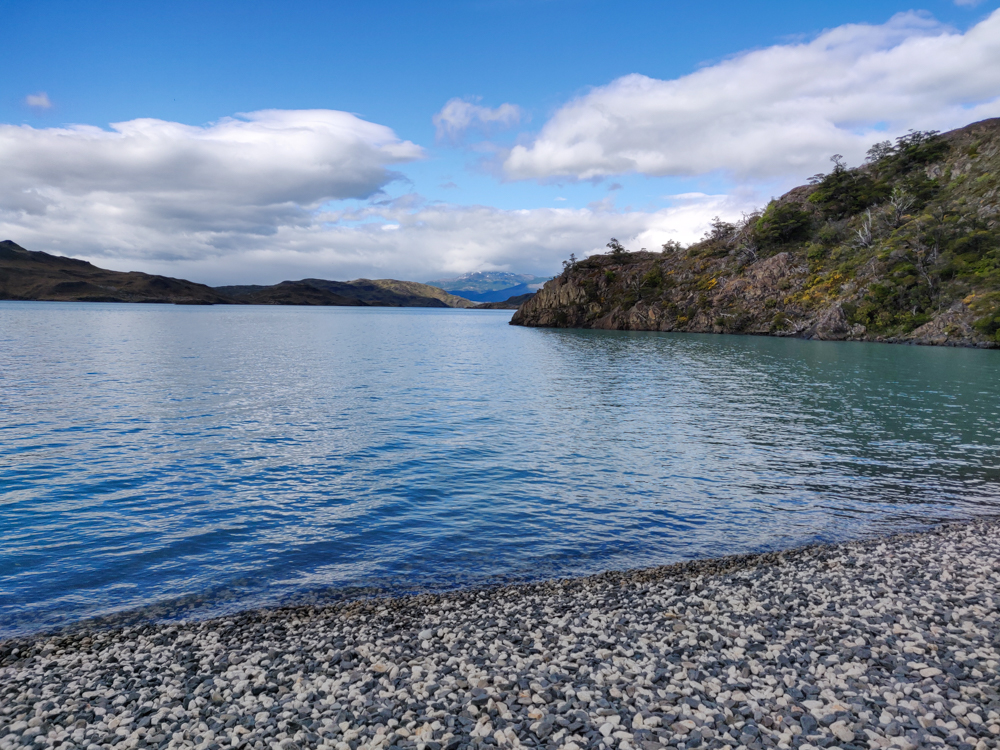
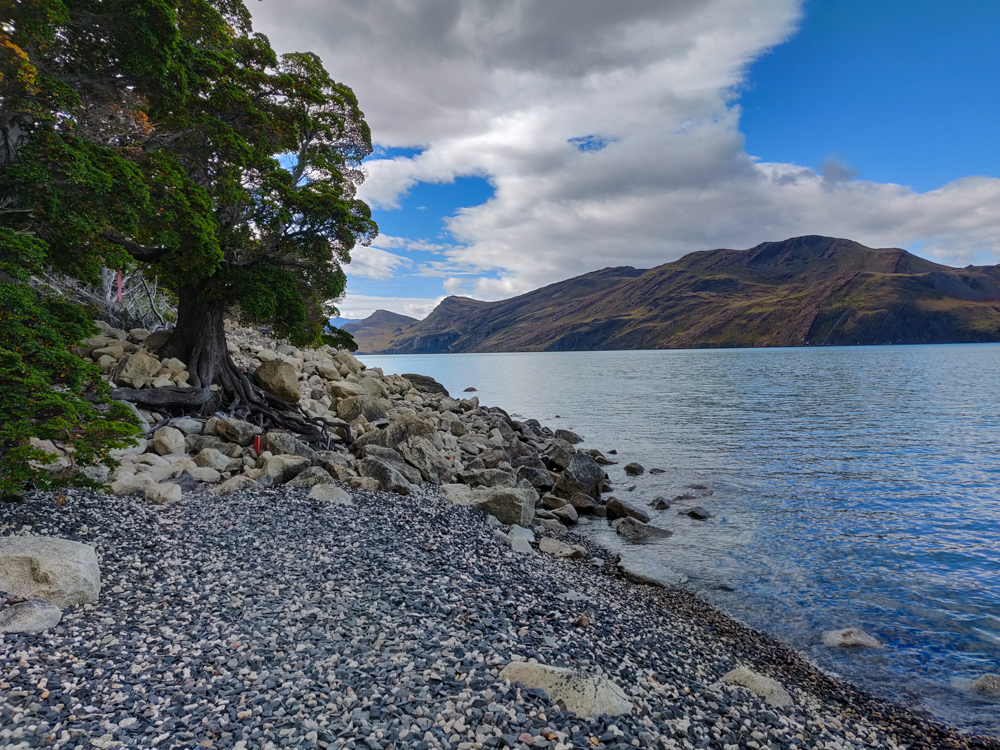
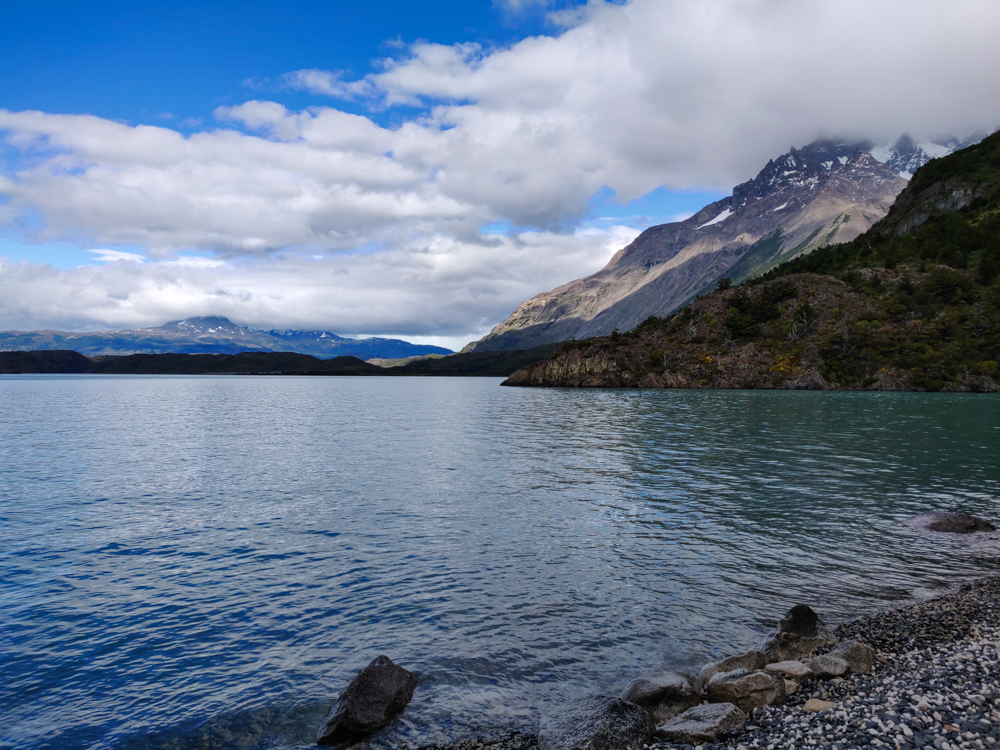
The route for the rest of the day followed the edge of the lake pretty closely, though that was the only time we were actually within touching distance of the water. From there, the trail headed uphill and back into the woods for one of the only shaded stretches of the day. That’s when we reached our first landmark, another campsite, Cuernos. Cuernos is another site where people sometimes stay after the hike we did the day before, and all I can say is thank goodness we got a spot at Francés. No chance would I have survived another two hours of hiking the night before (either my legs would have rejected me, or Mike would have killed me out of annoyance).
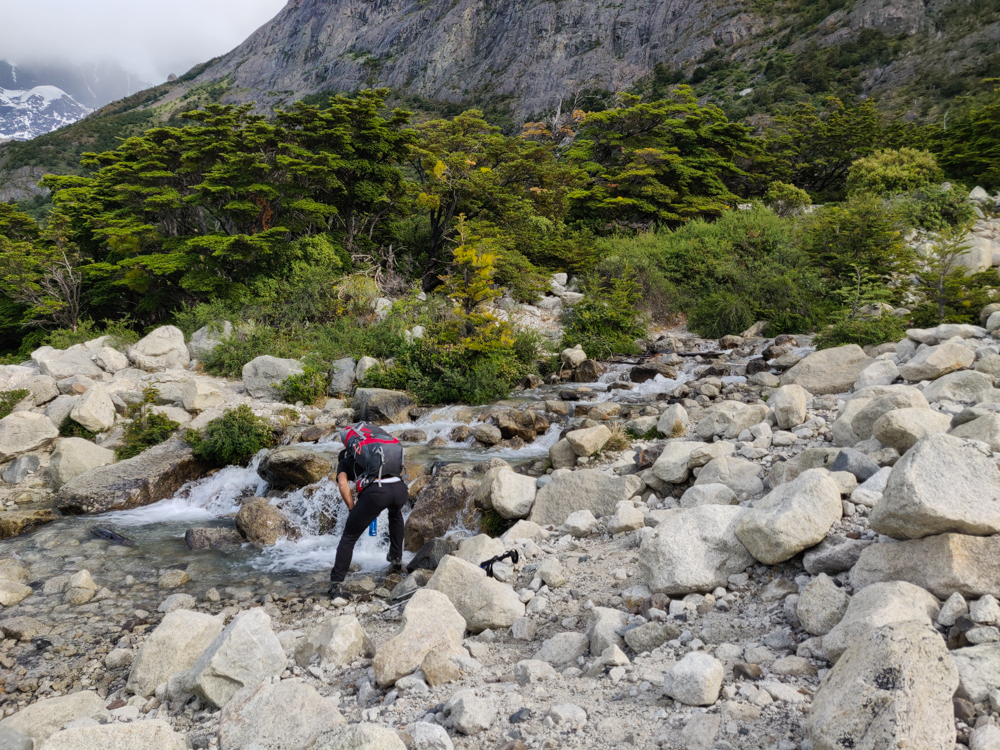
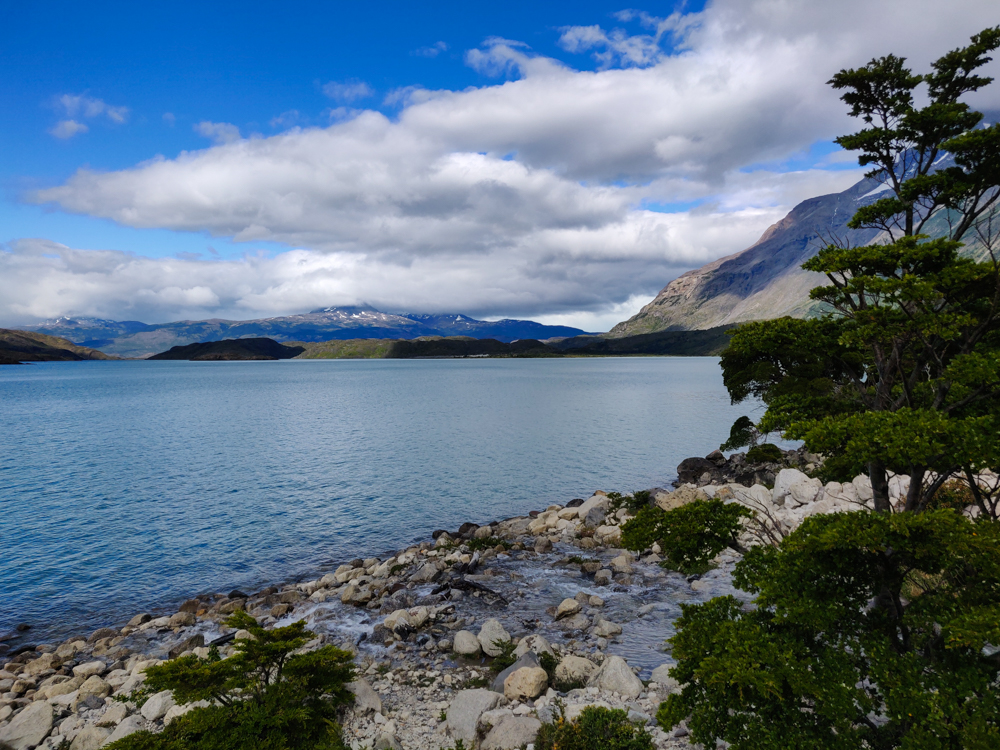
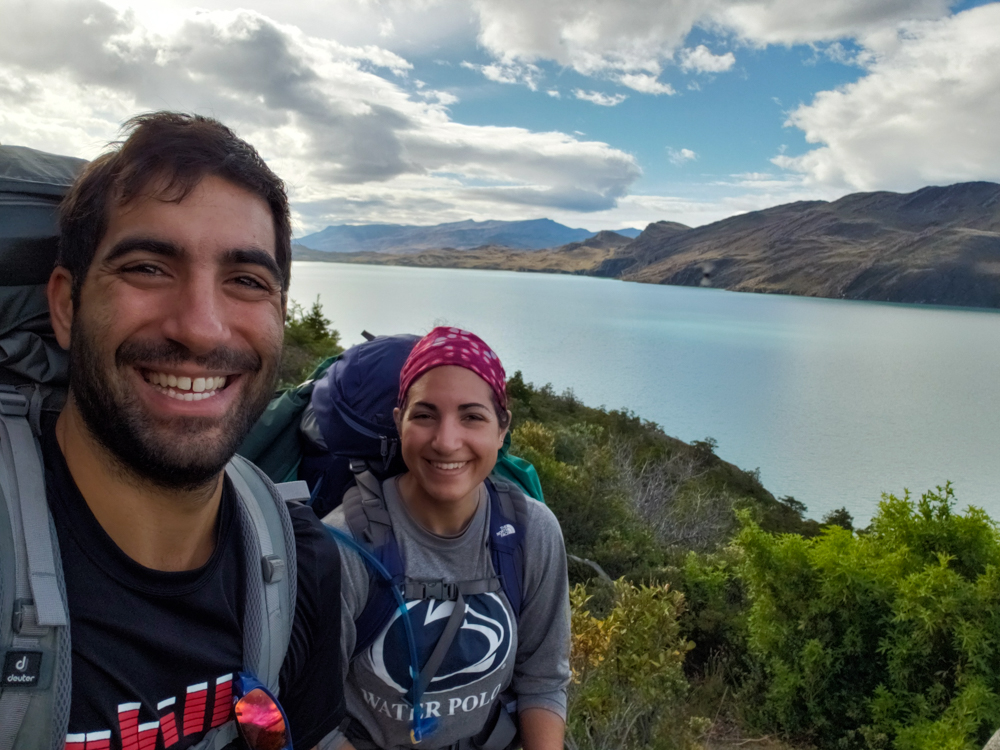
With our fresh day 3 legs, the hike to Cuernos took only about an hour and a half. We stopped briefly to put on sunscreen which turned out to be a VERY good idea, though we probably should have also reapplied because my face was very pink at the end of the day. And my arms! Oh, my poor arms. I was wearing long sleeves, so I didn’t put anything on them… and when I started getting overheated, I pulled my sleeves up to my elbows without even thinking about it. I had an embarrassingly distinct line on my forearms which I hoped would even out the next day a bit. (Spoiler alert, it’s been like a month and a half since this day, and I STILL have a line on my arms. So the moral of the story is to WEAR SUNSCREEN.)
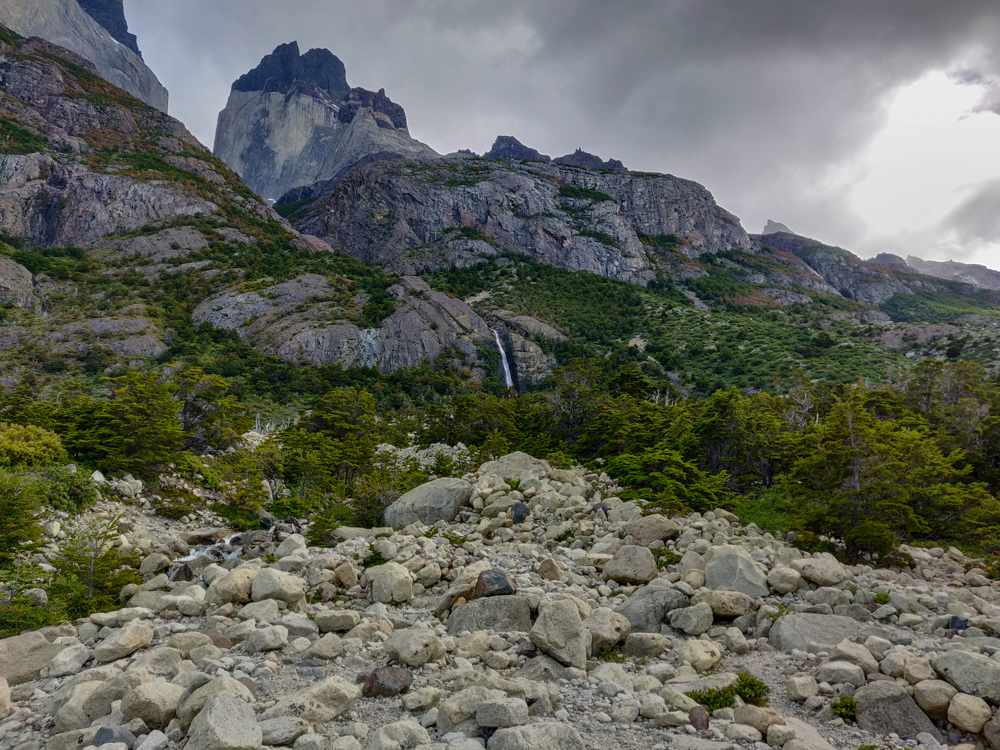
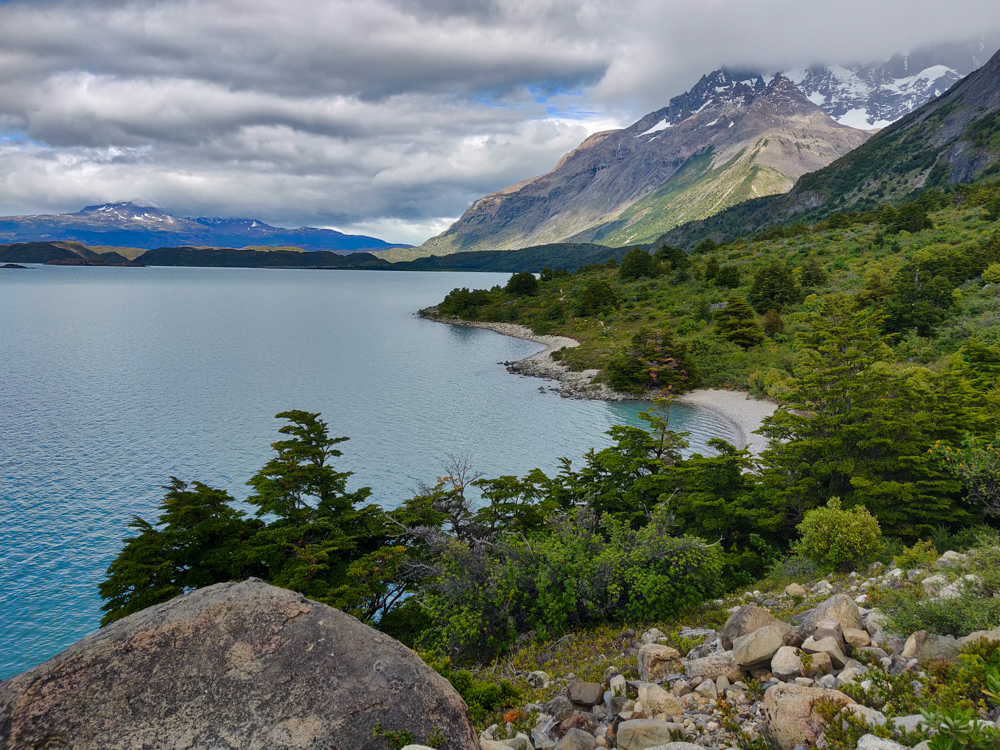
After Cuernos, the hike felt a bit like walking through the desert. Any hint of the morning cool was long gone, and there was NO shade, just low plants. It was pretty, that’s for sure, but it was also exhausting. It kind of ended up working out in my favor because usually, Mike is like, “Meh meh meh, I don’t need a break,” but he was definitely feeling the heat too. It also helped that we had such a short day, so we didn’t feel like we needed to hurry.
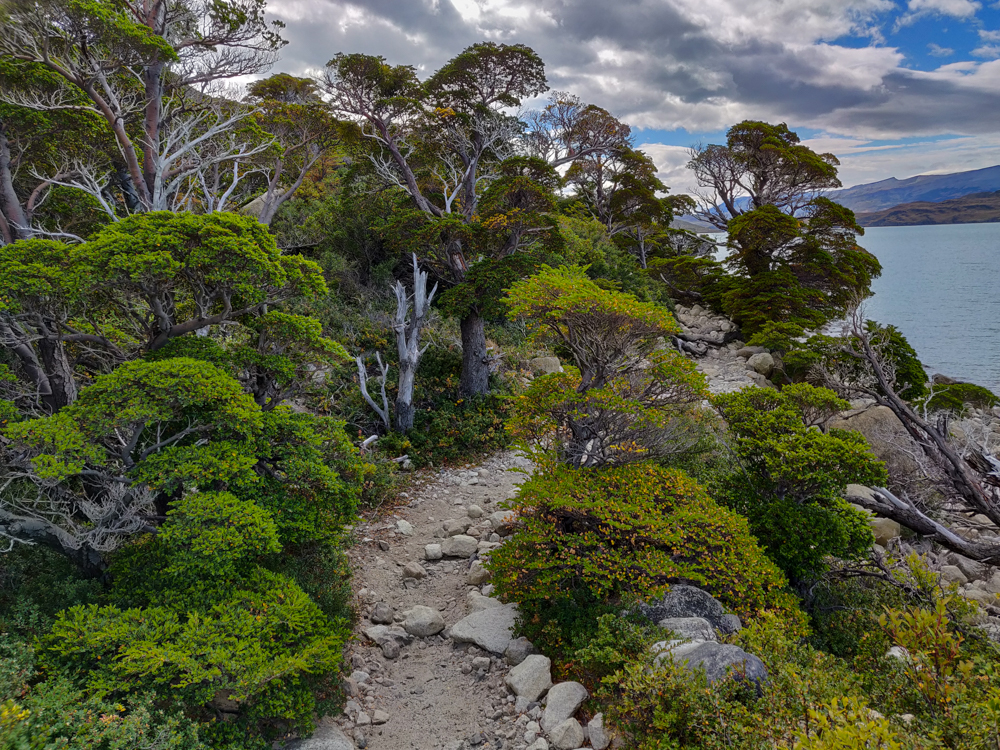
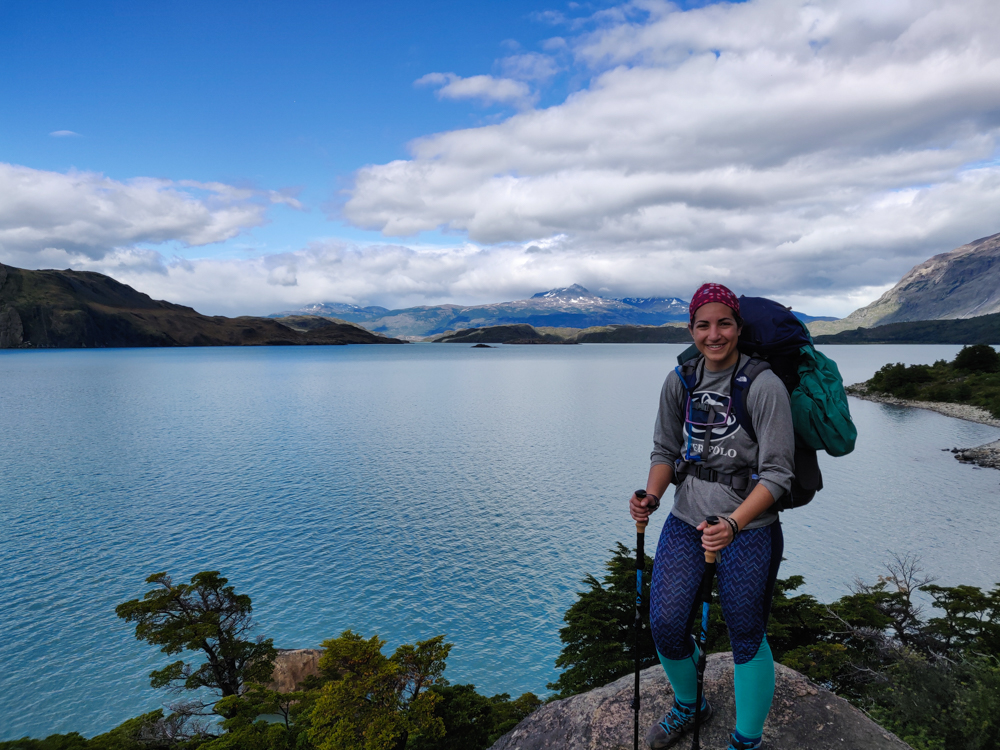
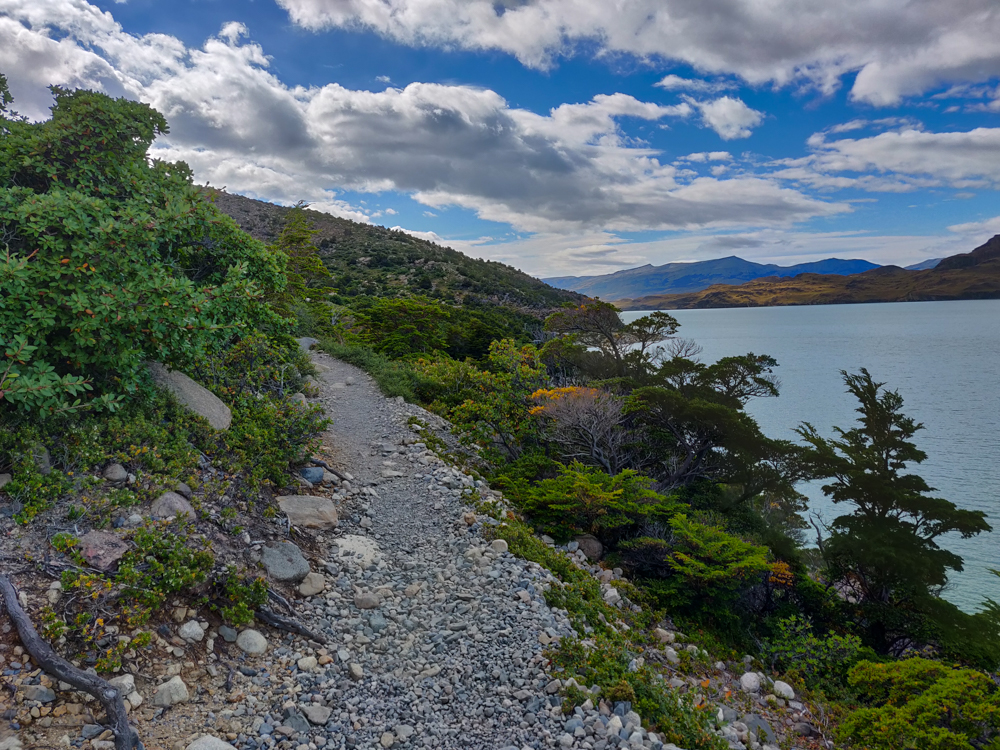
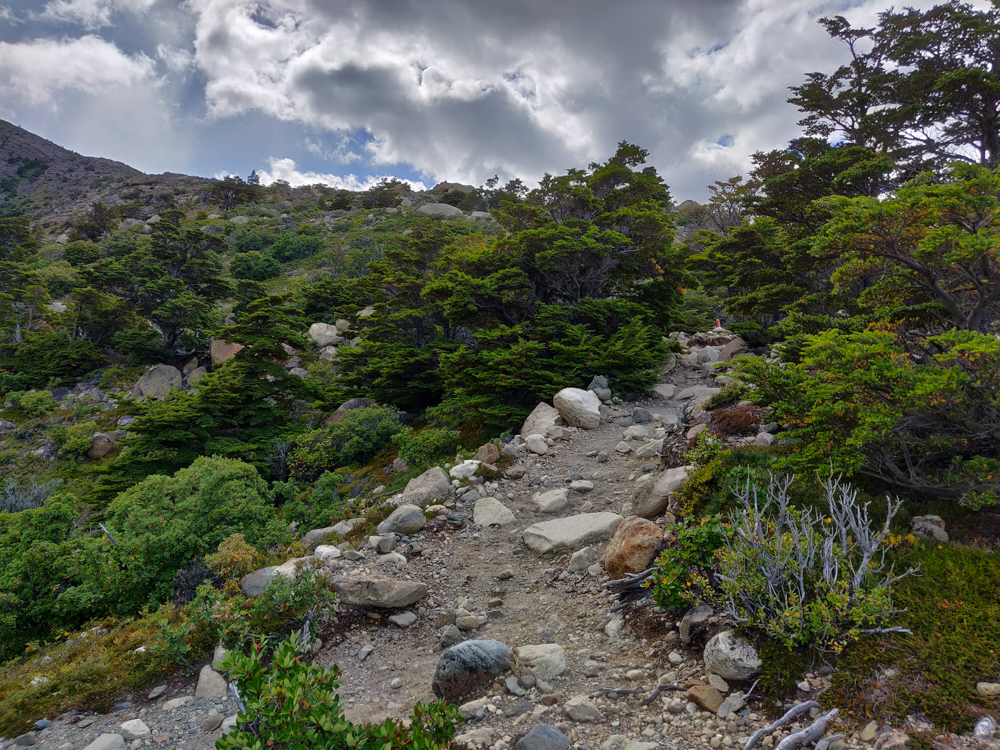
Elevation-wise, the whole day was a constant up and down and up and down. The good news was that my knee wasn’t hating me as much, plus I had a fresh strategy for the downhills to keep it that way (aggressive use of my hiking poles mixed with a slight side turn, in case you were wondering). Thanks to that fortunate development, we managed to keep a good pace throughout the day. I was surprised by how fast we could comfortably go when I wasn’t crippled by blisters and throbbing knees! And it was so nice to be able to focus on enjoying the hike.
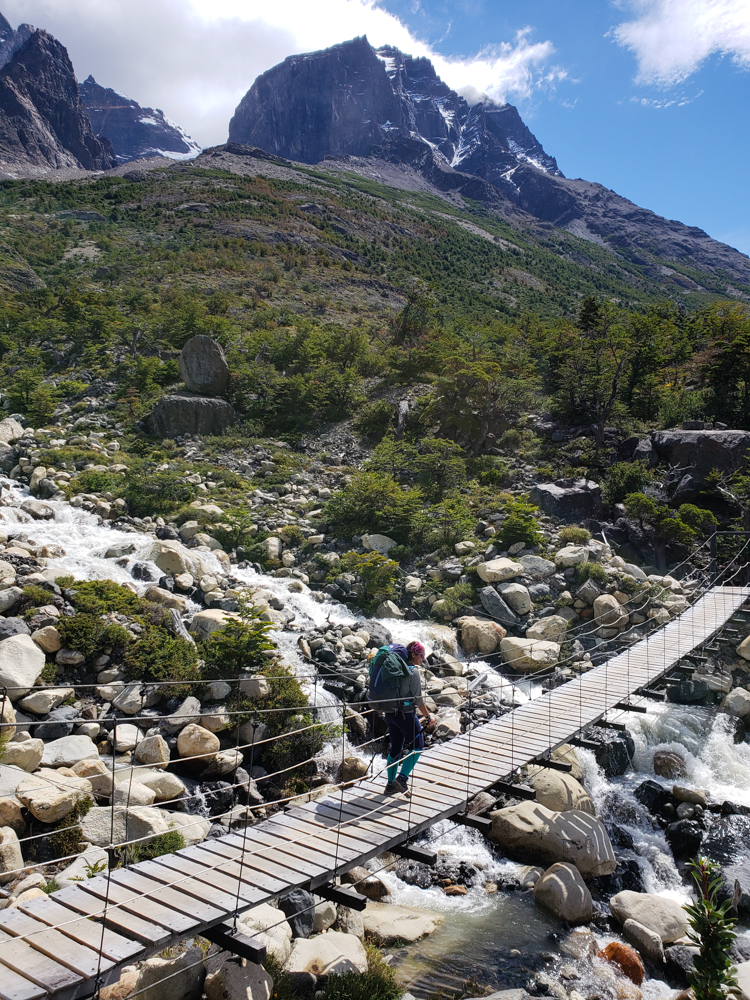
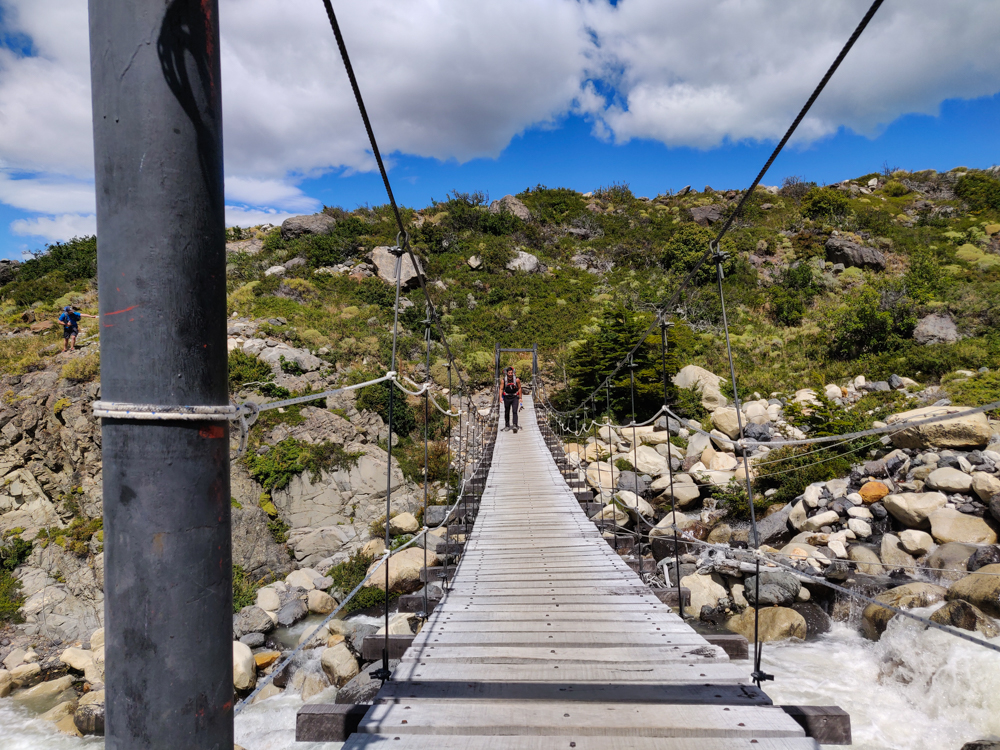
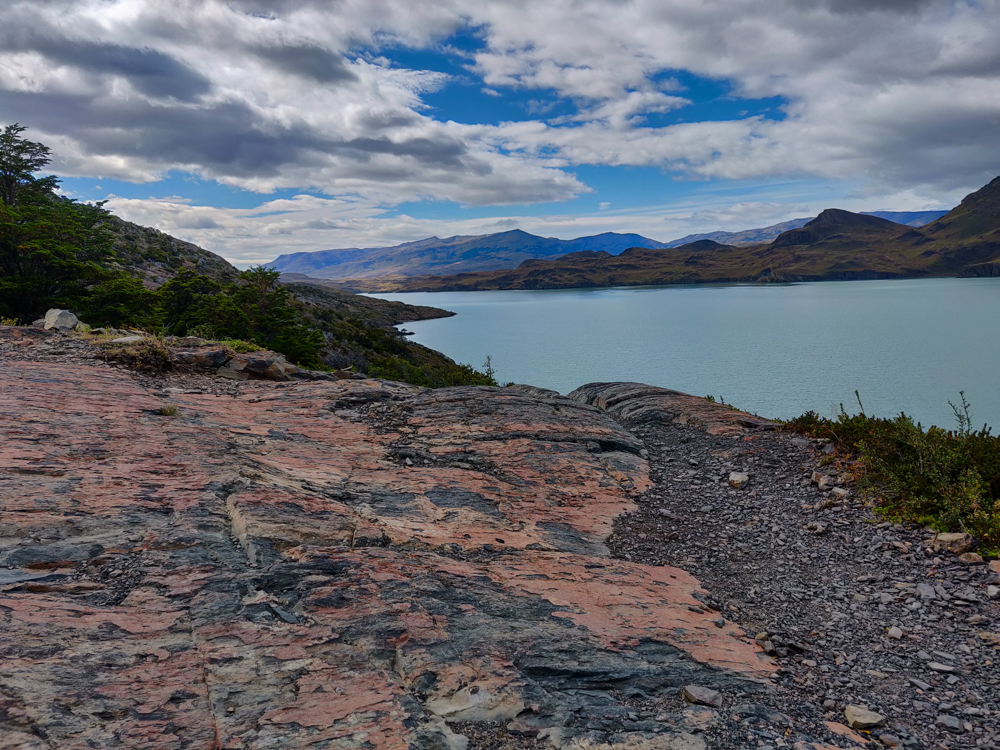

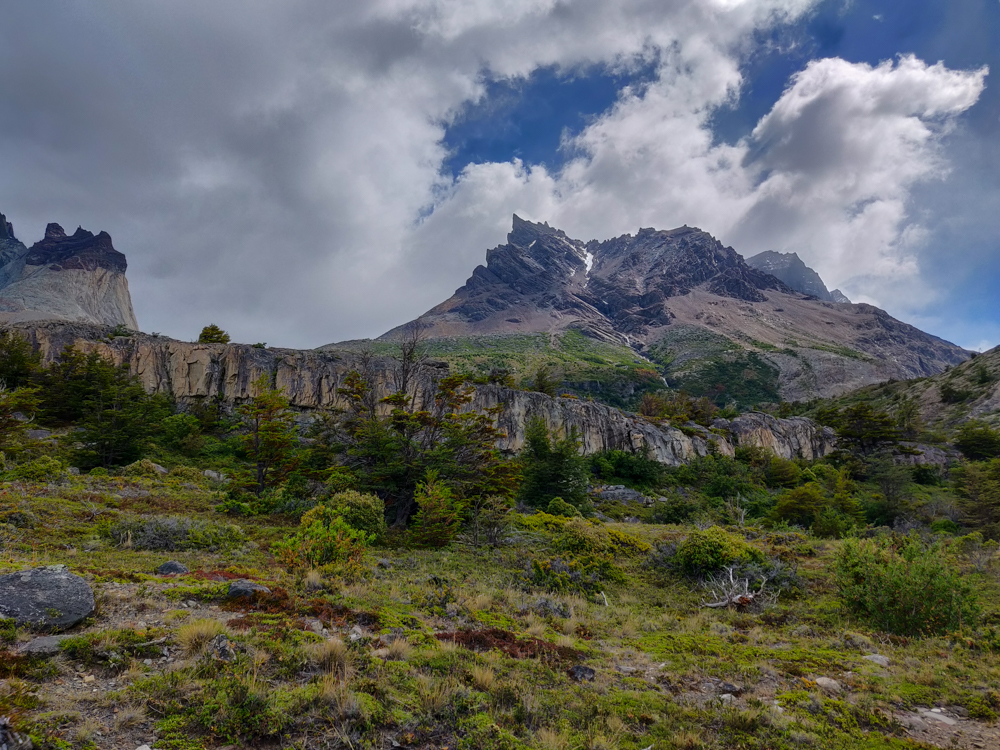
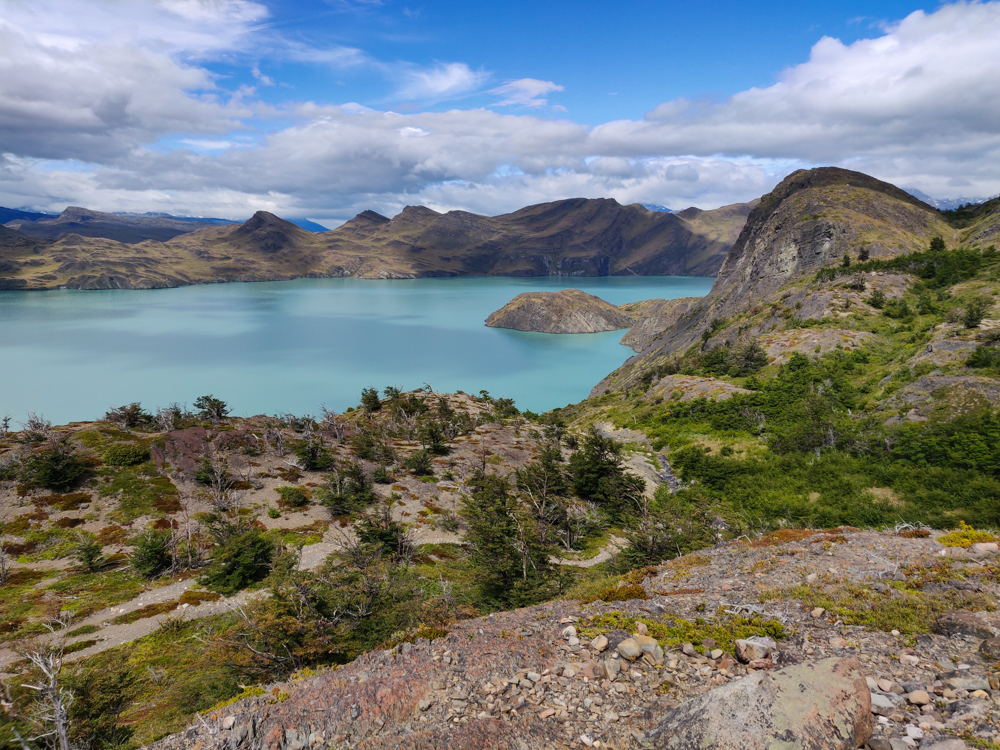
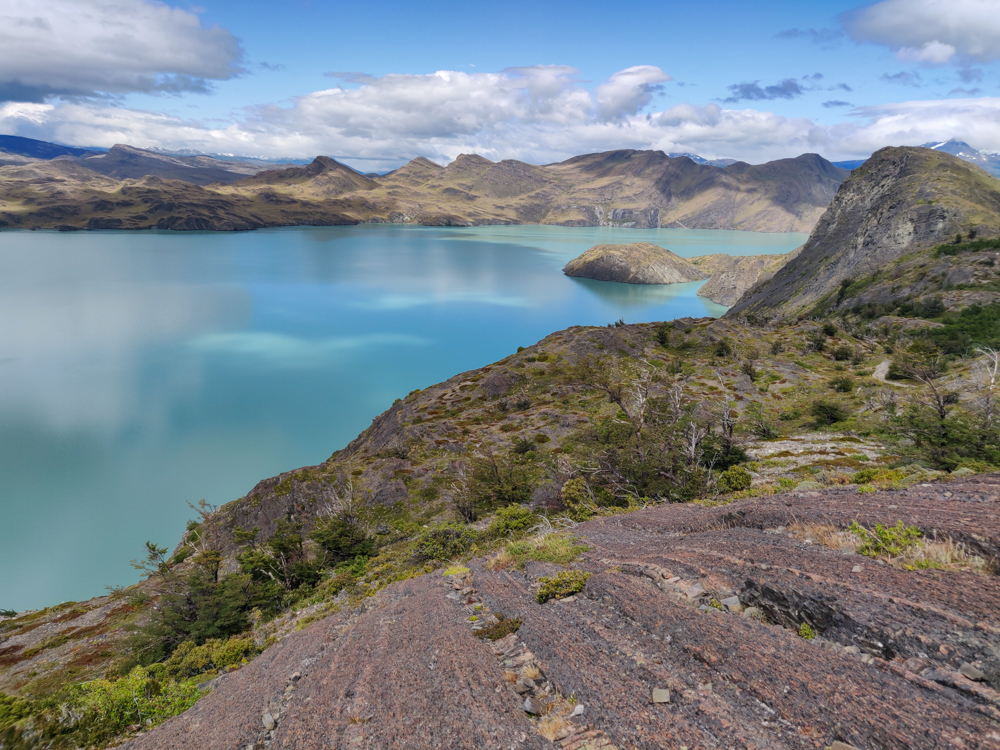
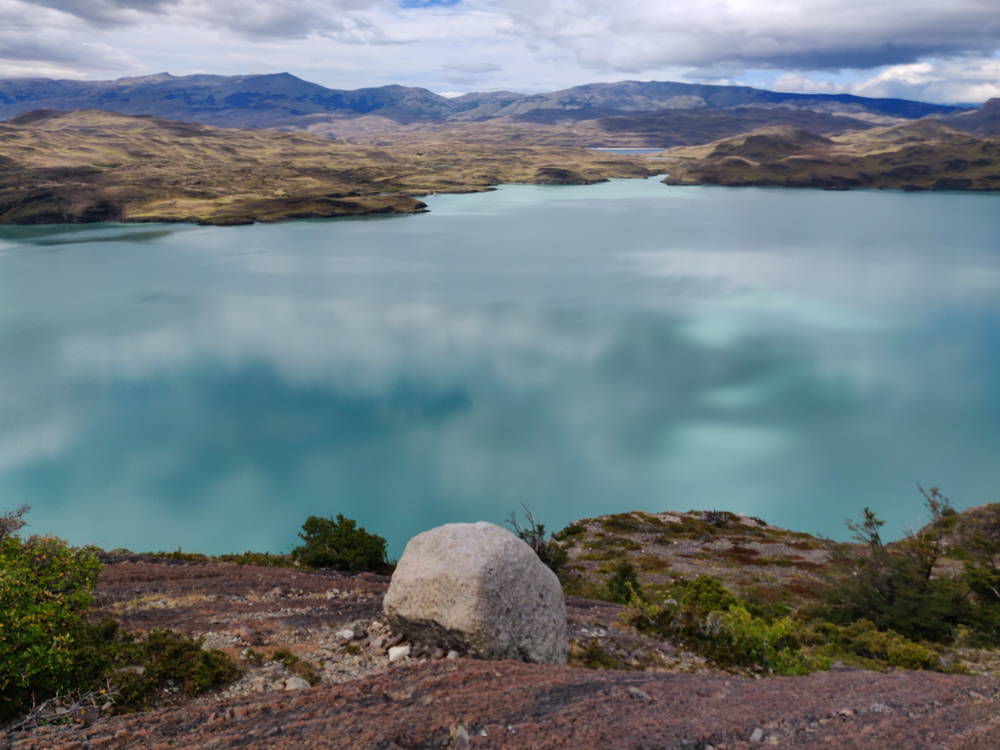
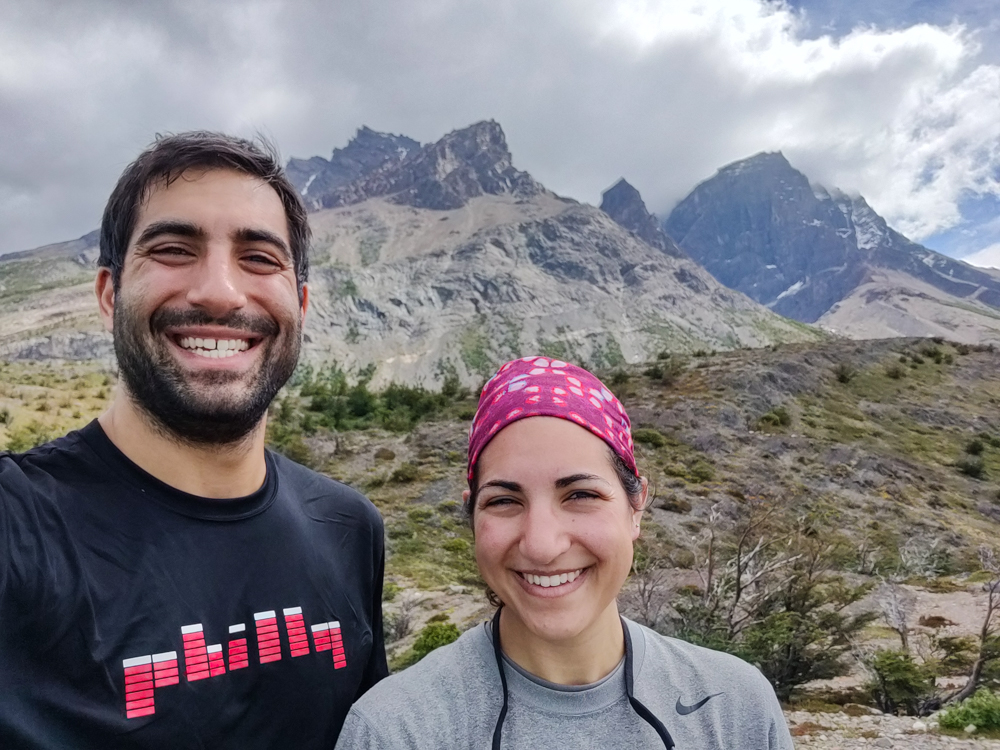
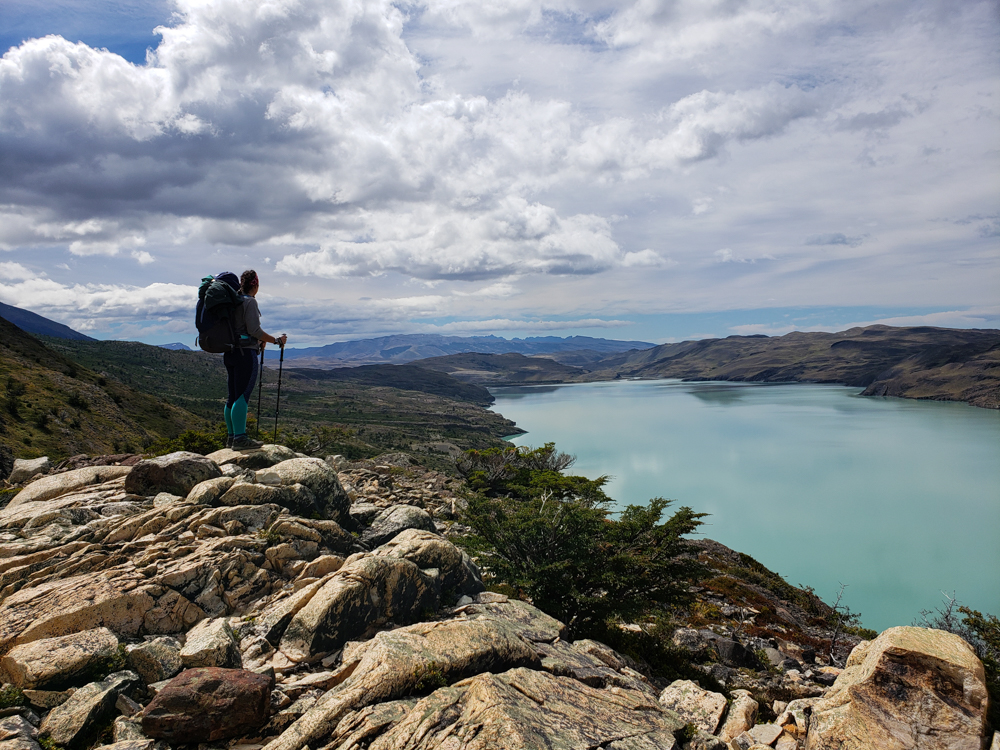
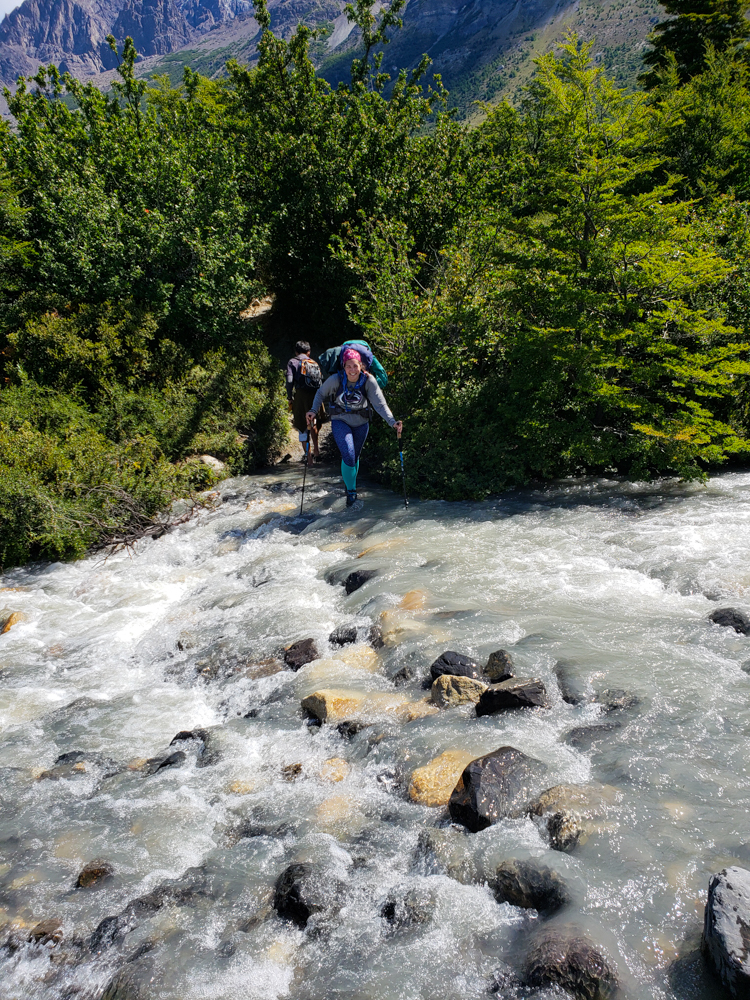
Our next landmark was a fork in the trail. The left fork continues along the route of the W, and the right fork leads to the campsite where we were spending the night (because the more convenient campsite was booked… that’s what happens when you book things only 2 weeks ahead of time. No complaints from me, though. I was just happy we could make it work!). I knew our campsite was kind of in the middle of nowhere, but I didn’t realize just how out of the way it was. I estimated it was maybe another hour after the fork in the road. It was not. Try 2.5 hours.
Soon after the fork, we found ourselves at the edge of a river that absolutely should have had a bridge. It was wide, the current was strong, and there was literally no way to get across without getting water in your shoes. I was mostly worried that I was going to fall over and get everything in my bag wet, but my hiking poles saved the day once again, and my socks were the only thing that didn’t come through unscathed.
From that point on, there was truly no shade. Mostly, there weren’t even ground plants. Just rocks. On the bright side, it was fairly flat. I spent most of the walk marveling at the colors. It seems almost stupid when I write it out, but the colors just seemed so vibrant in comparison to other places. Like I was walking around with color filters over my eyes that made everything look unrealistically saturated (so if you’re thinking that my pictures look like I did a little too much filtering, I promise I didn’t. It somehow does actually look like that).
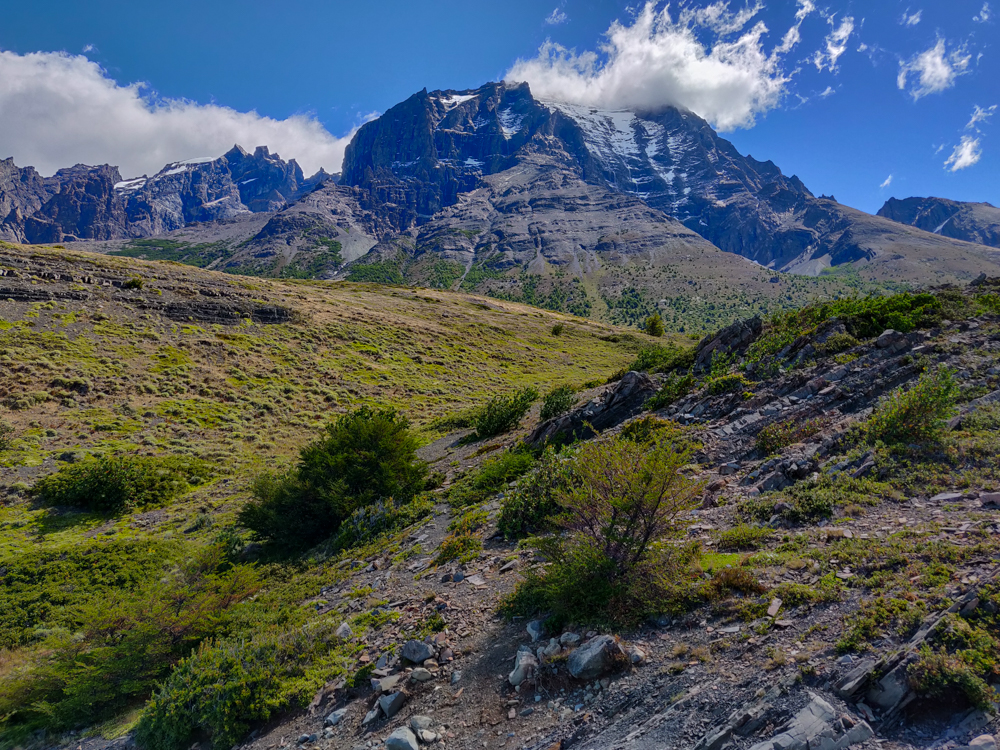
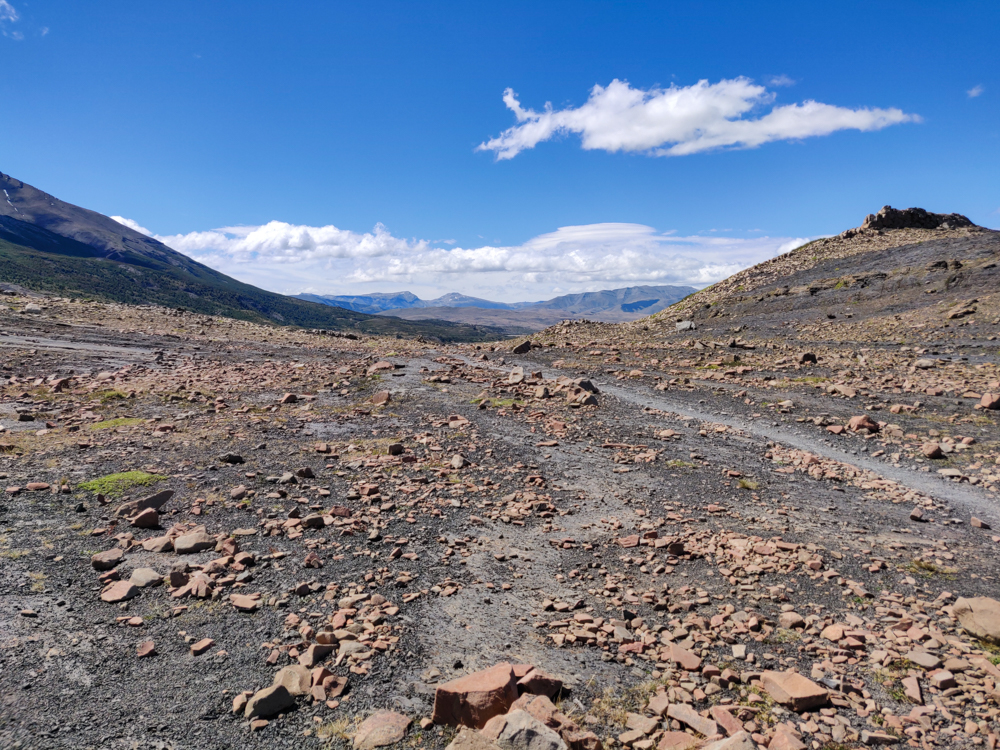
Eventually, once I realized that my time estimate was WAY off, I got to the point where I transformed into Mike (a terrifying image). I was trucking because my knee didn’t hurt, and I just wanted to get to the end. No breaks! No pictures! (Kidding, there’s always time for pictures.) No snacks! I was determined to keep moving at my aggressive pace and left Mike behind at some point. Who knows what he was doing back there, but I was not stopping. Then, we got to the place where I thought the campsite was, and nope. There’s a hotel there, Las Torres, and I thought the campsite was close to there. It’s not. We still had at least another 30 minutes.
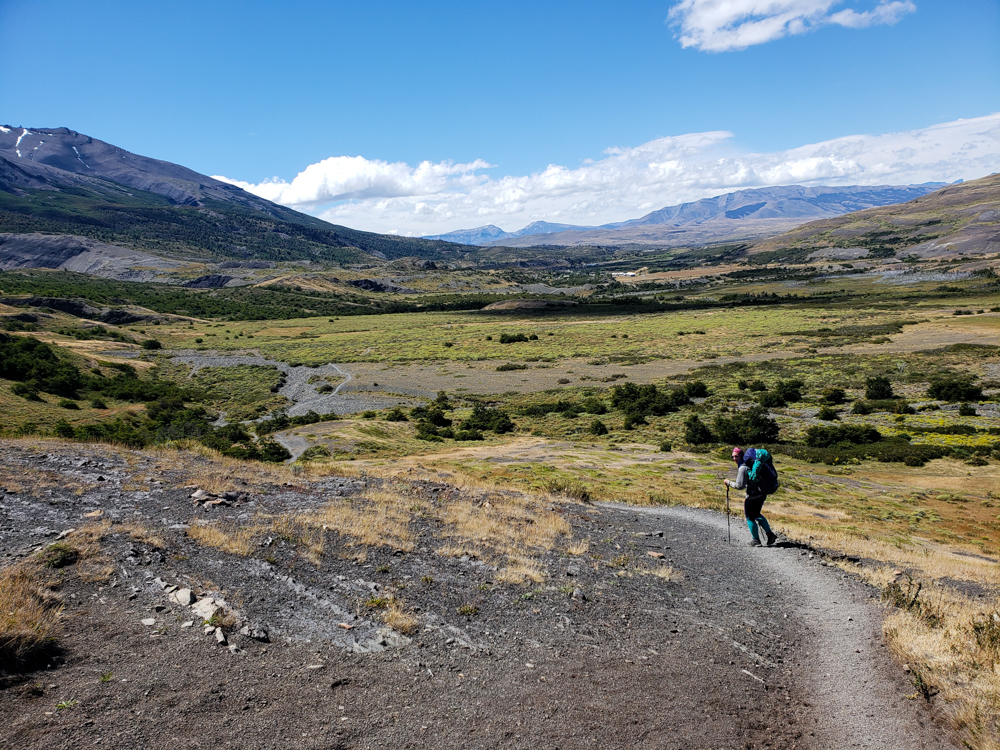
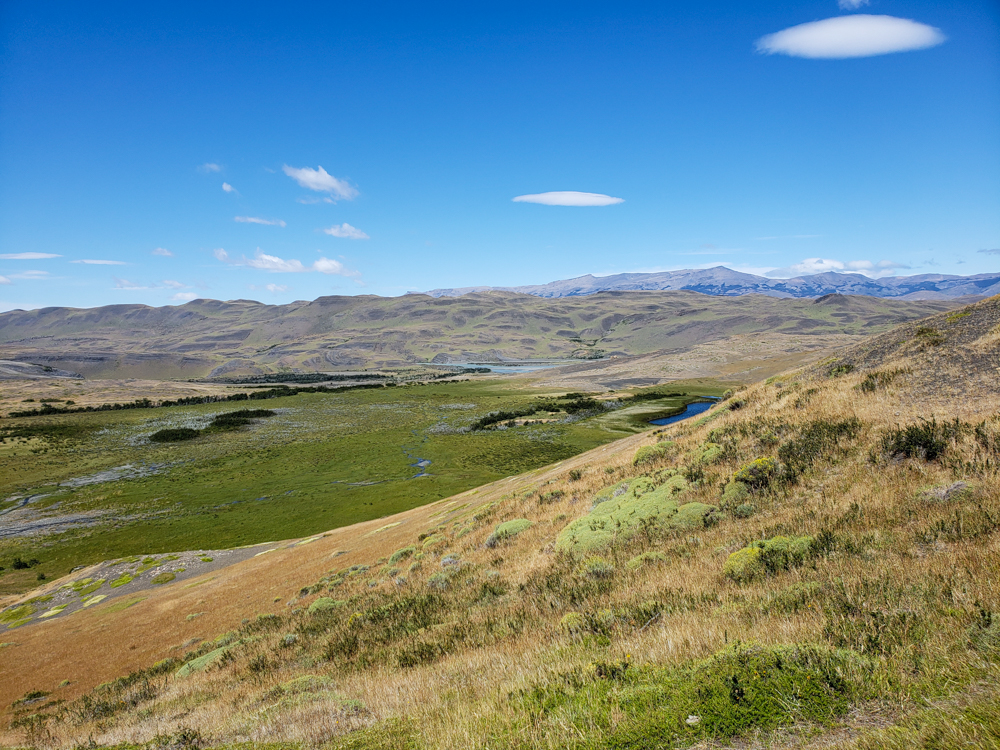
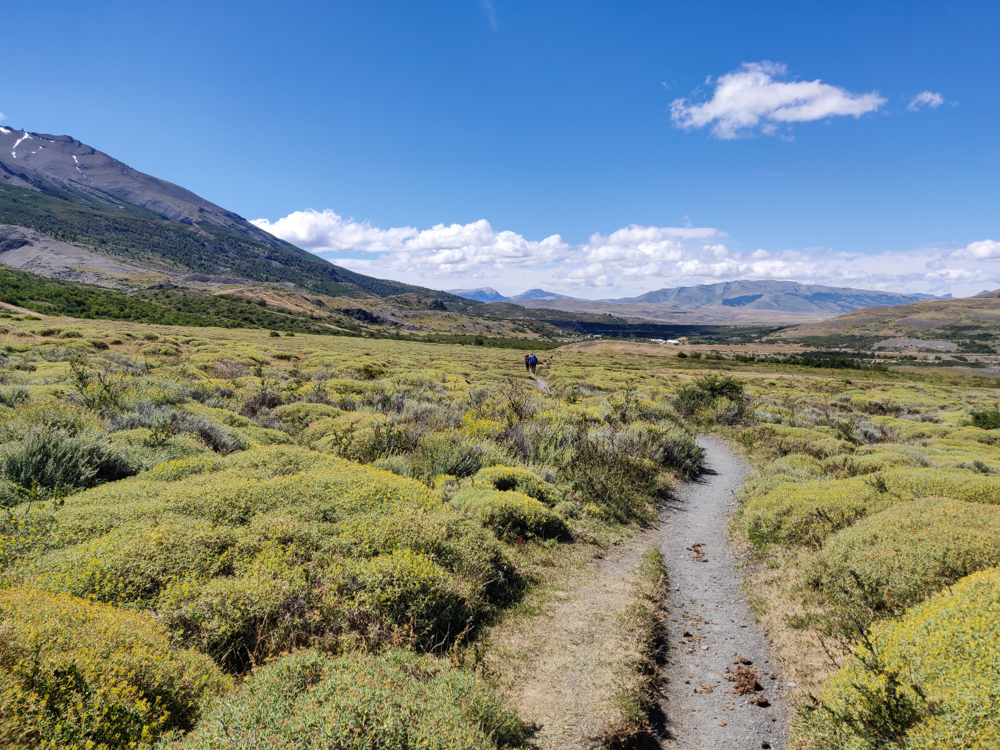
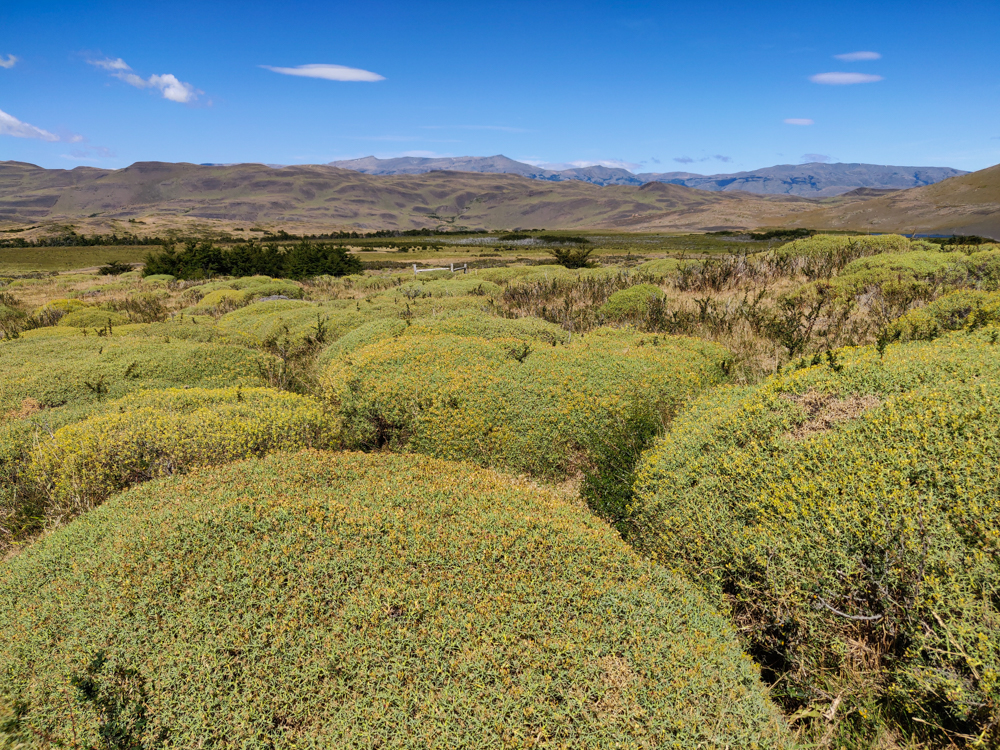
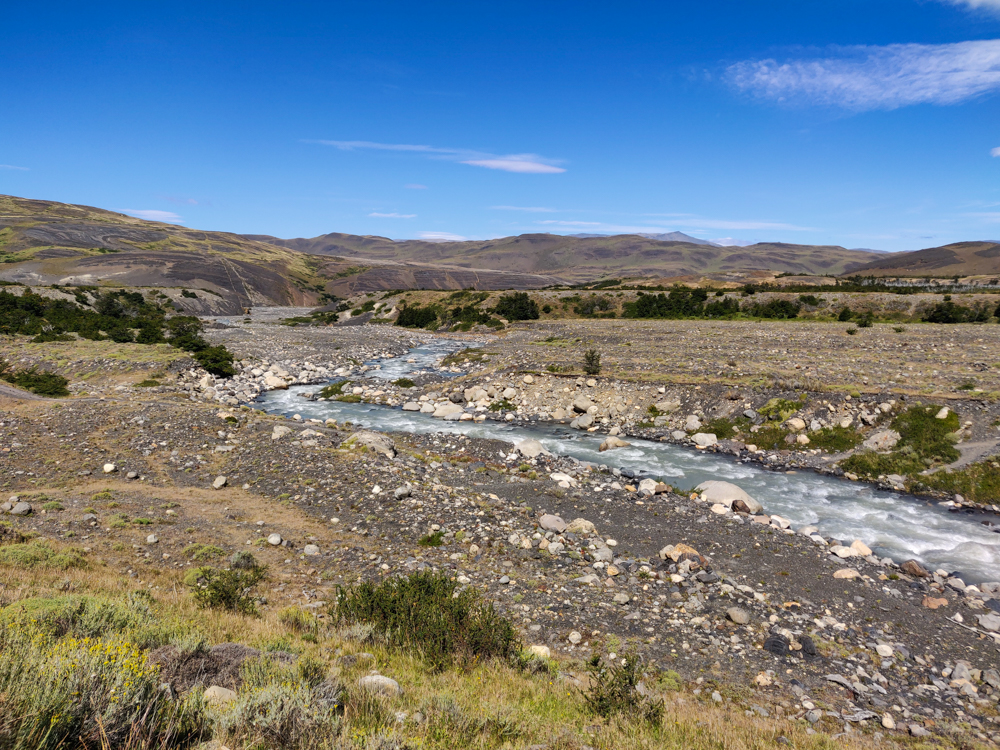
By the time we arrived at the campsite, I was beyond ready to sit down. At least my knee wasn’t hurting, though! And I wore approximately 85 pairs of socks (+/- 83 pairs), so I didn’t get any new blisters! So many victories!
We set up the tent, showered, and went to sleep as soon as we could manage because we had a fun 5AM start the next day. Our last day in Chile!

